

The Complete Motorcycle Trip Packing List
Welcome to the Motorcycle Trip Packing List. This article provides a complete checklist of all the essentials you may need on your bike travels.
Motorcycle Clothing
Personal clothing, electronics.
- Food and Water
Miscellaneous
This is a no-nonsense motorcycle trip pack list. The article lists everything you need to take on your motorcycle travels with links to more in-depth guides if you fancy diving deeper. All adventures are unique, to different parts of the world, climates and conditions, so adapt the list according to your personal needs. Consider this a base line. Each item links to one of our gear test reviews or somewhere to buy online.
- To see what we use: Our Round the World Motorcycle Packing List
- For what you do and don’t need: How to Pack for a Motorcycle Adventure
- For all our packing lists: Motorcycle Packing Guides
- Jacket and trousers
- Gloves x 2 (summer and winter)
- Riding socks
- Throw-over waterproofs
- Lightweight down jacket (doubles up as bike thermal)
- Thin trousers
- Light and small trainers
- Mobile phone
- DSLR or point and shoot camera
- Travel tripod
- GoPro / Sena / Drift
- GoPro stick
- Set of memory cards
- Chargers and USB battery pack
- Laptop or tablet
- Removable hard drive
- GPS tracker
- USB with backups of important info
- Emergency Satellite Communicator
Choosing Your Adv Riding Gear
How to pack for travel, photography gear list.
- Sleeping bag and silk liner
- Tent (Check out our 10 BEST Tents article)
- Cooking equipment including washbowl , cutlery , spices, chopping board , utensils, fire starter etc.
- Motorcycle soft panniers
- Motorcycle hard panniers
- Crash bar panniers
- Tool box or tube
- Roll up rucksack for when you’re off the bike
- Electronics bag
- Packing cubes
- Rok Straps
- Toothbrush and paste
- Soap / shower gel/ shampoo
- Shaving kit
- First aid kit
- Hand sanitiser
- Mosquito repellent
Camping Gear Checklist
The motorcycle luggage guide, 6 best soft panniers.
- Passport and copies
- Driver’s licence and copies
- International Driver’s Permit
- Vehicle registration document
- Vaccination book
- Carnet de Passage (if needed).
- Travel insurance
- Passport photographs (can’t have enough of these)
- Emergency USD
- Easily accessible paper with all important contact info on.
- Spare bike key
- Wrench and socket set
- Hex head set
- Puncture repair kit
- Air compressor and Gauge . (Rocky Creek Tyre Pump Review)
- Tyre levers and wheel removal tools
- Ratchet strap
- Screw driver
- Spanners/ Allen keys
- Tool roll ( Kriega Tool Roll Review )
- Cable ties and Gaffa tape
- Oils, lubes, epoxy , Loctite and copper grease
- Spare parts, levers, cables and consumables like filters, O-rings, pads etc.
- Check out our SBV Adventure Bike Tool Kit Review
- Chain or lightweight bicycle lock
- PacSafe net or cable
- Motorcycle cover
The UK Travel Insurance Guide
The ultimate tool kit, how to keep safe on the road.
- Owner’s manual downloaded onto your phone
- Crash protection
- Motorcycle modifications for comfort, off-roading and travel
Food and water
- Hydration bladder pack
- Water purification stick/straw or tablets (we don’t carry these)
- Food / snacks / water
- Emergency dry food and snacks
- Fuel canisters: Rotopax / fuel bladder / Overland Fuel Cannisters
- Navigation device: Sat Nav / Phone / Paper maps
- Mounts for phone case and video camera
Adventure Bike Guides
How to adventure proof, travel apps for adventure riders.
We may receive a commission, at no cost to you, if you purchase a product using the affiliate links on this page. We’re not sponsored, are completely impartial and don’t run ads. So this helps us keep the site running. Thank you for your support.
Read more on motorcycle packing, kit, equipment and travel gear
Thanks for checking out the Complete Motorcycle Trip Packing List. We hope you found it useful in what to take on a motorcycle trip! Here’s a few of our Guide pages that we recommend you read next. You’ll find all the articles related to a specific subject in one easy to find and read place and plenty more guides on gear and packing for a motorcycle trip.
- Motorcycle Packing Guides
- Electronics Guides
- Adventure Bike Guides
- Riding Gear Guides
- Round the World Travel Guides
- Motorcycle Luggage Guides
- Motorcycle Camping Guides
Liked that? Try these next...
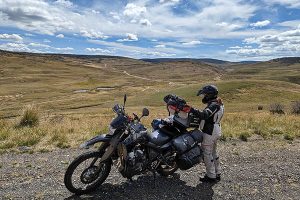
Things You Didn’t Realise You Needed on a Motorcycle Trip
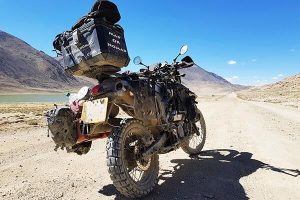
How to Motorcycle Round the World
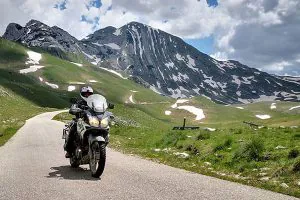
Motorcycle Touring for Beginners
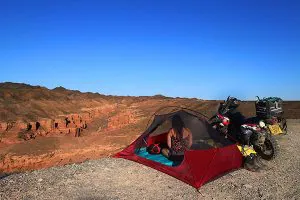
The 10 BEST Motorcycle Camping Tents
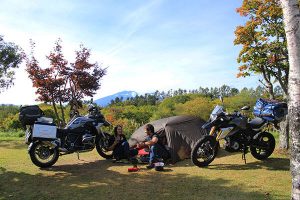
The Ultimate Motorcycle Camping Gear Checklist

How to Choose Your Adventure Bike Riding Gear
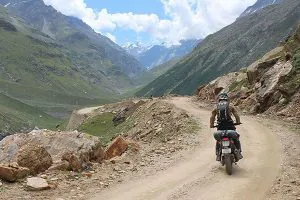
How to Go on a Motorcycle Adventure
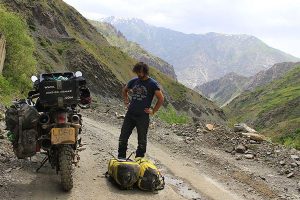
How to Pack for a Motorcycle Adventure
We’d love to hear from you! Please post your comments below.
21 thoughts on “the ultimate motorcycle trip packing list”.
Fantastic guide right here. Many many thanks for putting this together. It’s going to come in very handy once we can all finally travel again. Cheers
Hi Graham, thanks very much for your comment, glad you found it helpful! Are you planning a big trip? Feel free to shoot us any questions if you need anything here in the comments, via email or in the Forum anytime! More than happy to help fellow travellers. Cheers 🙂
I am indeed, I was planning a big trip to Turkey and maybe the Caucasus time permitting for middle of next year. That’s brilliant, thank you for that. It’d be a huge help in planning. I’m still sifting through your site and have been looking at the camping gear lists today. Fantastic stuff
That’s great! We actually have loads of motorcycle guides on the Caucasus, Georgia, Armenia, Azerbaijan and also on Turkey that might help you plan your tours there. You can find them under the Europe Destination Guides here https://www.madornomad.com/guides/europe/ . If you need anything specific, shout anytime!
Very useful. Just had a read of your European packing list one too. It’s obviously a lot more minimal than this one but it’s good to know all these extras in case I do decide to go further afield. Thanks guys
Hey David, thanks very much! Glad you found it useful. You’re right, the European pack list is a lot more minimal as it’s for touring so you won’t need to carry everything on this list. Best of luck with your packing! I’m assuming you’re thinking of riding into Europe? If you need a hand with anything just shout! Cheers 🙂
Hi I never rode motorbike on mountain road but I drove car from Chiangmai to Bangkok, and 3-4 time from Chiangmai to Doisuthep, so am I suitable for this ride or not. I am an Indian and wan to wnjog that trip. Please provide me ideas about motorbike because I wan to ride Royal Enfield Mateor.
Hi Ranjan, thanks for your comment! This sort of question would be better asked in the Forum. If you just make an account and ask in the Thailand forum, it’ll be easier to answer there. Also, could you please provide a bit more information when you ask in the forum…. for example, you ask “am I suitable for this ride or not?” What ride? Where? and you ask to “provide ideas about motorbikes”, but for what journey, where etc? Cheers
This an excellent guide and although I’ve done many tours I’ve found new things to consider and learn.
Thanks Steve! Much appreciated, really glad you found it helpful 🙂 Cheers, Andy
Its Helped me soo much.. thank you Mad or Nomad.. I’m from INDIA.. and I’m planning to 22days long ride in my beautiful country.. Luv u Bro..
Great list.I made lots of copies.Thanks for saving me lots of time.
Hi Bruce, Glad you found it helpful! All the best with your travels. Cheers, Andy
Awesome Motorcycle Trip Packing List. Thanks for saving lot of time.
Once again bundle of Thanks from Pakistan.
Hi Najeeb, thanks for your comment! Andy
Your list put many smiles on my face, being on the road for 38 years the right way (2 wheels, based in Holland). There are many tips newbies would never think of. And probably will not follow. Silly they are. All your tips are worth following.
Hi Chiel, Thanks for your comment, and that’s incredible to hear you’ve been on the road for 38 years! 38 years of travelling or riding? Cheers! Andy
38 yrs travel on 2 wheels. Somewhat longer by bicycle and kayak/canoe/yaght.
Brilliant! You must have had some great adventures 🙂 Cheers and all the best, Andy
This is my go-to resource for planning a motorcycle trip anywhere! Legends.
Hey James, thanks very much for your kind words! Much appreciated mate. Andy
Leave a comment Cancel reply
Save my name, email, and website in this browser for the next time I comment.
Notify me when new comments are added.

25 Top Motorcycle Packing List Items for 2024 + What to Wear & NOT to Bring

If you’re preparing for an upcoming cross-country motorcycle ride, I’ve put together a complete packing checklist to help make sure that you have everything you need for a successful trip.
Once you’ve finished the article, you’ll also know what to wear on a motorcycle trip , what NOT to bring, and answers to the most common FAQs about motorcycle trips.
Preparing for a cross-country motorcycle trip takes a lot of time and effort to prepare. However, it’s an experience that you’ll be so glad you had, especially if it’s on your bucket list.
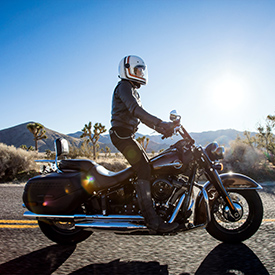
What to Pack for a Motorcycle Trip – 25 Essentials
Safety should be your top priority, so a reliable helmet should be the first thing you pack when planning a motorcycle trip. With high review ratings, this helmet will protect your head and is also lightweight and compact, making it easy to take along with you. It comes with ventilation panels that make it easy to breathe and keep it cool inside so your face doesn’t overheat. Its fully removable and washable microfiber inner material will absorb sweat without compromising comfort.

View on Amazon.com ➜
2. Quick-Dry Travel Towel
A microfiber towel will be really useful when riding long stretches of road where the weather can be unpredictable across long distances. In case you get rained on, a super-absorbent microfiber towel will help you dry off quicker. They are also fast-drying and odor resistant, meaning you won’t have to deal with a smelly towel that takes forever to dry.

3. Virtual Private Network (VPN)
If you’re planning on accessing public wifi in hotels, restaurants, or cafes while you’re on the road – it’s wise to protect your digital information with a VPN.
NordVPN keeps your sensitive information, like passwords and credit card numbers, safe from potential hackers who take advantage of public networks to steal information. It’s very affordable and we even use a VPN at home to protect your sensitive information.

View NordVPN.com Options ➜
4. Packing Cubes
If you’re planning on a multi-day trip, then organizing your things in packing cubes is essential. They eliminate the clutter from your bag because everything has a designated space in one of these different-sized cubes. You’ll know exactly where to find everything thanks to the notecard holder on each cube, where you can write exactly what’s inside. The two bonus laundry bags are perfect for keeping dirty clothes and shoes separate from your clean laundry.
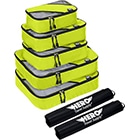
5. Tool Kit Organizer
Every biker needs a reliable and compact tool kit when planning a long road trip. This one comes with 22 pockets to organize your favorite tools, and is compact and easy to carry. It’s designed for travel and comes with buckles and a handle so you can attach it to your bike. It also comes with an internal elastic strap to keep all the tools in place, so you don’t have any fallouts during your travels.

6. Travel Insurance for Motorcycle Trips
It’s essential to come prepared on your trip, and what better way to do that than with motorcycle travel insurance? It’s cost-efficient and will give your family peace of mind while you’re out on the road enjoying your trip. Even if you don’t end up needing it, you’ll have it on the off chance that something does happen while you’re away.
It covers you for theft, travel delays, extreme sport, hotel protection, and trip cancelation. We use Faye since they make the claims and reimbursements super easy through their mobile app! * Note that you must be 100 miles from home to purchase travel insurance.

Get a quote in less than 60 seconds with Faye ➜
7. Cooling Towel
Cool off after wearing your riding gear all day with a cooling towel. They’re small and lightweight, making them easy to bring along for the ride, and they’re even easier to use. Just get it wet, wring it out, and you have a refreshing towel that’s 20-30 degrees cooler than the outside air temperature.
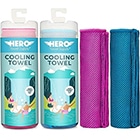
8. Tire Repair Kit
If you’re headed out on a long road trip, you’ll need to bring along a tire repair kit in case of an emergency. It’s always better to come prepared. This affordable kit includes everything you need to fix a flat tire until you’re able to get to an auto shop. The universal tubeless tire repair works with any make and model of motorcycle so you can share it with your travel companions.

A trusted GPS will make your cross country motorcycle trip even more enjoyable. You’ll be able to avoid getting lost and have more time to explore. The GPS is compact and attaches to your bike, so it’s easy to navigate during your trip. It’s also glove-friendly and easy to read in the sunlight. As an added bonus, you can pair it with a compatible smartphone for hands-free calling while you’re on the road. You’ll also be notified of upcoming curvy or hilly roads and avoid major highways when possible.

10. Lipstick-sized Portable Charger
Having a charger on-hand while you ride is a smart way to stay ahead of a dead battery. Whether you’re charging your phone, GPS, laptop, tablet, kindle, camera, or any other device that powers your trip – this little lipstick charger will keep batteries full on-the-go. It has multiple USB charging ports and is way easier than stopping at gas stations along the way to wait for a charge.
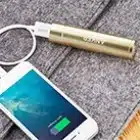
11. Leather Jacket
It’s a right of passage to have a leather jacket if you’re a biker. However, that doesn’t mean that it can’t be affordable. We’re giving you the best of both worlds. Get one made from 100% genuine leather, thermal lining, and micro-mesh lining so you can bike in any weather for a price you can’t beat! There is also removable padding on the back, elbows, and shoulders if you’d like to add extra safety precautions during your trip.

12. Protective Padding
If you’re planning a long motorcycle trip, your safety should be top of mind. These sturdy knee and elbow pads will make sure that you’re protected in case of an accident. They’ll also be lightweight and breathable, so you won’t even notice that you’re wearing them. The adjustable strap makes it easy to tighten or loosen the pads.

These outdoor gloves are ideal for motorcycle rides. They come with fingertip touch-screen technology on both the index finger and thumb that works with all touchscreen devices, so it’s hassle-free if you need to update your GPS or access your phone. These gloves come with full protection, including knuckle protection and palm pads. They are super comfortable and provide breathable air vents to help with better airflow in the pads.

14. Windshield Cleaner
This reliable plastic cleaner makes it easy to clean your motorcycle shield when you stop for a break. If you’re on a long road trip, chances are you’re going to hit a few bugs along the way, so you’ll want to make sure that you clean off the shield when possible so you have good visibility.

15. Neck Wallet
More secure than a traditional wallet, a neck wallet will keep your valuables safe and easy to get to. It’s discreet enough to wear underneath your shirt and can hold your credit cards, cash, passport, and phones so you won’t have to worry about anything accidentally slipping out of your pockets. It’s smarter to have it around your neck than where it could fall out on the road.

16. Motion Sickness Patches
If you’re in for a bumpy ride, it may be beneficial to use a gentle motion sickness patch. It will soothe any nausea and won’t make you fall asleep like similar brands. My wife field-tested a bunch of brands and this one came out on top!
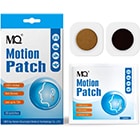
17. Bandana
It’s essential to have something that you can use to cover your face or keep your hair out of the way during a long ride. This classic set of bandanas makes it easy. They are lightweight, so you can throw a couple in your duffle bag so you’re prepared anytime that you may need one. They’re also a great gift that you can share with your fellow travelers.

18. Baselayer
The weather can be unpredictable, especially when you’re on a long motorcycle ride. A base layer makes it easier to control your temperature so you’re comfortable during your trip. You can easily add a jacket or vest to go over your shirt if you’re cold, especially in the fall and winter months. This classic waffle knit design traps heat so you’ll be able to stay warm even when it’s a bit chilly. It always fights odor and reduces sweat, so you stay comfortable during long hours of riding.

Boots are a motorcycle trip staple. And the Harley Davidson brand is just the cherry on top, right? These comfortable classics are the perfect addition to your motorcycle packing list. They’re made with genuine leather and a rubber sole that will easily grip the footholds of your motorcycle so you’ll be comfortable on your long trip.

20. Duffle Bag
This heavy-duty bag is perfect for your upcoming motorcycle trip. It’s water-resistant, so your clothes and personal items will be protected during long rides, even if you end up getting stuck in bad weather. It’s super simple to hook the bag to your motorcycle, and with plenty of pockets, you can easily access some of the compartments if you need anything during a rest stop. It comes with plenty of room for everything that you may need during your upcoming road trip.

21. TSA-Approved Locks
Locks are important to secure your items throughout your travels. We use them for checked luggage, backpacks in crowded areas, lockers in the city or our hotels, and even purses in a place known for petty theft. These are TSA-approved so they won’t cause you any delays through security checks, but you’ll find plenty of uses for them along the way.
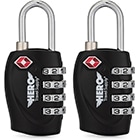
22. Toiletries Kit
Make it easy and get all of your toiletries at once to save time. The set comes in a mini travel bag so you can just throw it in your duffel, and you’re ready to go. You’ll have everything you need to keep up with good hygiene while you’re on the go. The best part is everything is mini-sized so you’ll be able to save plenty of room.

23. Rain Jacket
If you’re headed on a long cross-country road trip, chances are that you may come across rain at some point. To avoid getting drenched to the bone the moment it starts to rain and making you spend hours uncomfortable, get this lightweight and effective rain jacket. It comes with a hood and adjustable cuffs so you can keep the water out at all costs. It’s the perfect addition to your packing list that you’ll be glad you brought along.

24. Flashlight
If you’ll be riding in the dark, this is an essential item for your trip, especially if you have an emergency or problems with your bike at night. It’s ultra-bright and long-lasting, so you won’t have to worry about it running out of battery when you need it most. It’s compact, so you can easily toss it in your bag and access it whenever you need to. The best part is its water resistance, so if you need it during a rainstorm, rest assured it’ll hold up.

25. Compact Sleeping Bag
If you’re camping along the way or sleeping in some strange places, use this travel sleeping bag to create a hygienic barrier between you and those accommodations. This set is waterproof and great for backpacking or hiking. It folds up in its compact case and won’t take up much space strapped to the back of your bike.

Other Motorcycle Trip Packing List Items
- Waterproof Tail Bag
- Universal Adapter
- Global Tours
- Luggage Lock
- “Just in case” Bag
- Travel Umbrella
- Storage Canister
- Affordable Action Camera
- Portable Charger
- Waterproof Phone Case
- Flotation Straps
- Bug Repellent
- Mosquito Wristbands
- First-Aid Kit
- Degradable Toilet Paper
- Steripod Toothbrush Cover
- Bungee Cords
- Clear Glasses
- Mini Notebook
- Bag for Dirty Clothes
- Emergency Contact Info Card
- Hydration Pack
- Protein Bars
- Led Flashlight
- Mini Toiletries Kit
- Hanging Toiletries Bag
- Packing Cubes
- Hand Sanitizer
- Clothesline
- Sanitizing Wipes
- Sleeping Bag
- Sleeping Pad
- Portable Pillow
- Water Bottle
- Filtered Water Bottle
- Spare Bike Key
What to Wear on a Motorcycle Trip
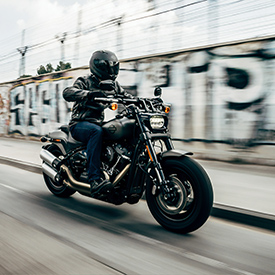
It’s also not a motorcycle trip without a genuine leather jacket . Not only will you look the part, but it’ll add an additional layer of protection while you’re out on the road. You’ll also never want to go without proper gloves so you can keep your hands comfortable during the duration of your trip.

Motorcycle trips aren’t just for men. It can be a fun way to bond with your significant other or a great way to spend time with your friends. When you’re preparing to pack for your upcoming ride, make sure to pack light. The majority of the trip, you’ll be on your bike, so you won’t need as much as you think. A duffel bag should allow for plenty of room for all your gear. The most important piece of gear that you’ll need is a comfortable pair of boots , and you’ll be wearing them most of the time. It’s also a good idea to pack along a bandana to keep your hair out of your face, especially on windy days. Also, bring along a comfy t-shirt that you can use a base layer. what MEN should wear on a Motorcycle trip – (Click to expand) Below is a sample men’s clothing list. (All items link to Amazon.com for your convenience).

Packing for the Seasons in Motorcycle Trip
Spring – march, april, may.
The springtime is popular for motorcycle riders. The weather is starting to warm up, and its the perfect chance to get your bike back out on the road. You’ll need to bring along a reliable rain jacket since rain showers are likely. You’ll also want to make sure that you bring along mesh gloves that allow easy airflow and vented motorcycle boots to stay comfortable during your long stretches of being on the road.
SUMMER – June, July, August
Although it can get very hot, it’s still a great time to head out on a cross country ride. Be sure to pack along a moisture-wicking t-shirt to avoid getting too hot and a Light-weight vest on the occasion that you may need to add an extra layer.
FALL – September, October, and November
September, October, November: This is a very popular time to venture out on a cross country trip. It will be a little chilly, so be sure to pack along a long sleeve shirt and a jacket that you can throw on as an added layer. You’ll also want to bring along some jeans and a comfortable pair of riding gloves .
WINTER – December, January, February
December, January, February: It’s not ideal to ride in the winter, but it’s definitely doable. Make sure to bring along a turtleneck to protect yourself from the windchill. A warm jacket is also a must in order to make sure that you stay warm enough. You won’t regret wearing insulated jeans or wool socks , so the bottom half of your body is nice and warm, especially on days when the weather is extra brutal.
What NOT to Bring on a Motorcycle trip
1. don’t pack headphones.
For the most part, it’s best to avoid having music or other audio recordings going when you’re on a bike ride. You’ll make sure that you’re fully aware and alert of your surroundings and listen for any danger so you can be safe on the road
2. DON’T TAKE Suitcase:
The key to a successful motorcycle trip is to pack light. A duffel bag or backpack should do the trick. You’ll be riding most of the time, so you won’t have any need for a large suitcase because you won’t need much. You’ll also want to pack light if you’re planning to stop along the way and need to bring your belongings with you on any detours.
3. DON’T BRING Flip Flops
Always wear closed-toed shoes on your motorcycle trip. This is a safety precaution to make sure that if you’re in an accident, your body is covered as much as possible to avoid injury.
FAQs About Motorcycle Trips
1. do i need a special license to ride a motorcycle.
Yes, a valid driver’s license with a motorcycle endorsement is required to legally ride a motorcycle. Check your state’s specific requirements before planning your motorcycle trip.
2. Are motorcycles good for long-distance road trips?
Yes, cross-country road trips are a popular pastime for motorcycle enthusiasts. The key is to take a bike that you’re used to and feel comfortable on and make sure that you are well prepared beforehand.
3. How far can you drive on a motorcycle?
Most riders plan to go anywhere from 250-500 miles a day. It’s important to take breaks along the way. You’ll also need to plan on driving fewer miles if you plan to stop at places along the way.
4. Where do you stay on a motorcycle road trip?
A motorcycle ride is similar to any other vacation. It depends on where your ride takes you, but the most common types of accommodations include camping or staying in hotels. It’s important to plan ahead, so you’ll know where you’re going to stop each night and what you need to pack along with you.
5. How many hours should I ride every day?
The key is to make sure that you’re taking rest breaks in between. It will vary for each person, so be sure to listen to your body. If you’re feeling tired, it’s time to stop and take a rest. This means making sure that you schedule in plenty of time for breaks if needed.
6. Is it safe to go on a motorcycle road trip alone?
Yes, if you plan it accurately, you should be safe. Make sure to let other people know the route you’re taking and come prepared if you have any bike problems or have an emergency.
7. Can I plan a motorcycle trip around the US?
Yes, it’s actually much easier than you might think. It’s a very popular pastime with other riders so there are plenty of routes that you can easily find online if you’re looking for inspiration and will also save you time in the process.

Asher Fergusson
Our editors carefully select every product we recommend. We may earn a commission from these links. Learn more
The 15 Best Motorcycle Road Trip Essentials For Two-Wheeled Touring
By: Gray Van Dyke Published: Aug 14, 2023
By: Gray Van Dyke and Tim Huber Published: Aug 14, 2023
Contributors
Although trips on two wheels are much more taxing on your body and your mind than those taken in a car , the payoff makes the hardship more than worth it. Because if there’s one thing you’ll come to appreciate after your first journey, it’s that only through exposing your vulnerabilities can you truly experience the transcendental effects of a motorcycle. Robert Pirsig said it best in his cult classic Zen and the Art of Motorcycle Maintenance — “On a cycle, the frame is gone. You’re completely in contact with it all. You’re in the scene, not just watching it anymore, and the sense of presence is overwhelming.”
But with more time on the bike comes more potential for things to go wrong. As such, it’s worth going into your packing with a plan of attack. Otherwise, you’re liable to forget small but necessary items such as that spark plug wrench or a tire patch kit. At best, you’ll be in for a minor inconvenience; at worst, you’ll have to call off the entire trip. Rather than going it alone and hoping you’ve thought of every possibility, have a look at our list of the best motorcycle road trip essentials and arm yourself with knowledge.
The Best Motorcycle Road Trip Essentials
Best Paper Maps
Butler Motorcycle Maps
Best Fuel Can
MSR 20oz Liquid Fuel Bottle
Adventure Medical Kits Ultralight/Watertight .7 Medical Kit
Best Tire Repair Kit
Moose Racing Tire Repair Kit
Best Tool Kit
CruzTools Speedkit Tool Kits
Best TPMS Unit
SYKIK Rider SRTP300 Wireless Tire Pressure Monitoring System
Best Headlamp
Fenix HM50R V2.0
Best Hydration Pack
CamelBak Classic Hydration Pack
Best Motorcycle Cover
Dowco Guardian Ultralight Bike Cover
Best Jumpstarter
NOCO Boost Sport GB20
Best Satellite Messenger
Spot Gen4 Satellite GPS Messenger
Best Panniers
Kriega Overlander-S OS-32 Drypack
Best Comm System
Sena 10C EVO
Best Moto GPS
Garmin zūmo XT2
Best Riding Suit
Aerostich R-3 One Piece Suit
Roadside ready.
Essential Skills To Keep You Riding
It helps to be armed with a few basic skillsets before embarking on a long-range two-wheeled journey. Below are a few of the more crucial abilities we recommend developing before setting off.
Maintenance: If you’re setting off on a trip of any considerable distance, it’s advisable to know some basic motorcycle maintenance. These days, services like oil changes and brake pad swaps are often left up to shops, but there’s no telling if someone will know how to work on your bike while on the road. Better to familiarize yourself with the ins and outs of your bike so that you have some kind of understanding should something go wrong.
Navigation: While GPS systems have quickly outpaced the road map, you should still be comfortable going it analog. For no matter how reliable your electronics claim to be, at some point, they will fail. Keep your optimism in check and practice navigating your route via a map before you find yourself lost on the side of the road.
Emergency Skills: It almost goes without saying, but if you’re bringing emergency essentials like a first aid kit and a portable flat pump, you should know how to use them before you depart. Otherwise, they’ll do nothing but take up valuable space in your bags and weigh down your bike. Even having an elementary understanding of in-the-field survival skills will serve you well when it comes time to make critical decisions.
Bits & Pieces
Moto-Specific Contingency Carry
There’s absolutely no shortage of items that one can argue deserve a place in your luggage when moto touring, however, there are several key product genres that are even more essential — the most important of which we’ll be highlighting below.
Cables: When embarking on any trip that takes you away from the familiar, it’s a good idea to pack some spare brake and clutch cables. That way, should you experience a failure, you can make the swap and be back on the road in no time. You might never need to use your spares, but without them, it’ll be a long walk to the nearest mechanic.
Tools: Although we provide a recommendation for a tool kit below, it’s not an end-all, be-all solution to roadside repairs. When building out an emergency kit, we suggest going over your owner’s manual with a fine-tooth comb to make sure there are no special tools needed for your particular ride. Additionally, seasoned tourers offer a wealth of experiential knowledge earned the hard way — they’ll be able to share any trip-saving secrets learned on the road.
Miscellanea: Ultimately, only you can determine what you need to keep you on the road. From everyday do-it-all items like duct tape to ride-specific sparkplugs and spare parts, be sure to fill out your tool kit expecting the worst. When packing these items, consider space-efficient solutions to minimize bulk. For instance, rather than bringing an entire roll of duct tape, wrap some around a battery for a more compact carry item .
Reflection On Selection
The Criteria For Making Our Picks
From purpose-built moto touring and moto camping gear to regular pieces of outdoor kit that just happen to lend themselves to motorcycle travel use, there’s absolutely no shortage of available options when buying gear for your two-wheeled travels. With that said, if you were to poll a sample population of riders that routinely take on long-distance trips, you’ll find the same items will come up over and over again — albeit sometimes with some variation or style on a particular piece of gear. In order to compile our picks for this list, we first started by making a shortlist of the genres of gear that we wanted to include — items that would generally be useful across the board, whether you’re moto camping or crashing in motels, and whether you’re riding in the spring, autumn, summer, or winter.
We then narrowed this list down to what we considered to be the must-have essentials. With this list in hand, we then looked to our own garages and gear lockers, spoke with several experts, and poked around online, reading blogs and forums and watching tests and reviews. Drawing from this collective wealth of both firsthand knowledge and secondhand intel, we then made our picks for what we considered to be the best three items from each category before finally landing on our final choice, based on a combination of performance, durability, overall quality, and value, price, and bang for your buck.
Why It Made The Cut
- A region-specific paper map made specifically for motorcycle travel.
Best Paper Maps: While GPS units and smartphones have made the road map all but obsolete, there’s still good cause to own one. For instance, should your electronic navigation system of choice fail on you — whether through a dead battery or a technological glitch — an analog alternative will keep you en route. Created by motorcyclists for motorcyclists, Butler Maps makes a variety of maps suitable for any type of rider. They’re region-specific, so you can get an intimate understanding of where you’ll be traveling. And with the road- and backcountry-oriented options, you can pick your flavor of adventure accordingly. The California-South Backcountry Discovery Route map featured here covers 820 miles of single and doubletrack dirt roads, leading riders through ghost towns, past ancient petroglyphs, and amid Joshua trees. Waterproof and tear-resistant, it’ll last the length of your trip and many to come.
Country: America Available Moto Maps: 12
- A tried and true vessel for transporting additional fuel while on two wheels.
Best Fuel Can: A motorcycle road trip of any length will put your familiarity with your bike’s range to the test. With luck, you’ll time fuel stops perfectly, breezing through towns on the way to your destination. But the reality is not everything goes as planned, and not every town has a gas station. What’s more, a fully-loaded bike coupled with uncertain terrain can do a number on your consumption. Should you overestimate your bike’s efficiency and come short of a stop for fuel, an emergency supply could mean the difference between a sleepless night on the side of the road and a comfy bed in a warm hotel room. Made from a single piece of aluminum, this bottle from MSR is leak-free, fuel-preserving, and pressure-resistant. It can hold white gas, kerosene, automobile gas, mineral spirits, and even jet fuel, so it’ll work for our purposes just fine. Available in 11oz, 20oz, and 30oz sizes, you can fit it according to your needs.
Construction: Aluminum Weight: 0.25LBs Size: 20oz (or 11oz or 30oz)
- A compact yet robust first aid kit popular amongst motorcyclists.
Best FAK: Incredibly popular amongst motorcyclists, the Adventure Medical Kits Ultralight/Watertight .7 Medical Kit is a compact yet robust first aid kit that comes loaded with a host of essentials for addressing everything from minor cuts and scrapes to major trauma. Weighing only 8oz, this entire first aid kit’s contents come housed inside of two inner DryFlex watertight pouches that are stored in a zipper-secured ripstop silnylon outer bag. Made in America, the FAK is comprised of a plethora of different medications, bandages, adhesives and tapes, and a selection of other essential wound-care items — enough supplies for one-to-four people on trips up to four days.
Size: 8.5” x 6.5” x 2.0” Weight: 8oz Packed Volume: 2.5L
- An all-in-one tire repair kit that includes everything needed to patch or plug a flat.
Best Tire Repair Kit: Made in America, the Moose Racing Tire Repair Kit is a compact, all-in-one kit containing everything need to patch or plug a flat tire. This includes five 4” rubber plugs, an insertion tool, a screwdriver-handled reamer and rasp tool, half a dozen patches of varying sizes, a 0.5oz tube of rubber cement, and a thumb buffer. Whether you’re patching or plugging a tire, this kit also features a trio of 16 gram 0.375 threaded C02 cartridges and an accompanying 4” CO2 inflator hose to refill a tire ounce it’s been repaired. Each cartridge also produces 8-9 PSI — making them the perfect size for moto tire-filling applications.
Included Plugs: 5 Included Patches: 6 Included C02 Cartridges: 3
- A dependable roadside tool kit available in a variety of different specs.
Best Tool Kit: Although we suggest outfitting your emergency kit with tools tailored to your bike, it helps to have a solid starting point. At the very least, this little tool kit will provide you with an ultraright contingency plan in the event things go awry. Stocked with a spark plug socket and tire gauge, as well as wrenches, hex keys, and pliers, the Cruztools Speedkit Tool is a must-have for any time you’re on a ride. It comes in four different varieties, with standard, metric, euro, and off-road sets suitable for every kind of bike. Housed in a durable zip-up pouch, it’ll last you for many a road trip.
Versions: Euro, Metric, Standard, & Off-Road Included Items: 8
- A live tire pressure and temperature monitoring system with an included handlebar-mounted LCD display.
Best TPMS Unit: For pretty much all of motorbiking history, motorcyclists have begun each ride by first checking their tires’ air pressure. Offering an easier alternative to this vital safety check, the SYKIK Rider SRTP300 is comprised of a pair of motorcycle-specific tire pressure sensor monitors that screw onto the bike’s tires’ valve stem in order to relay real-time metrics on said tires’ air pressure and temperature. This real-time data is transmitted to an included water-resistant 1.5” LCD display that shows tire pressure, temp, and battery life . Speaking of this item’s battery, the SRTP300 features a rechargeable cell that typically affords anywhere from 9 to 12 months of use before needing to be recharged — an element that makes it even more conducive to motorcycle touring and road trip use. SYKIK Rider also offers a slightly more expensive inner-tire TPMS unit known as the SRTP400.
Included Units: 2 Display Size: 1.5”
- A potent 700-lumen headlamp with a more than 370’ throw in a rugged aircraft-grade aluminum housing.
Best Headlamp: Whether you’re camping out or you’re riding overnight, roadside repairs in the dark are made all the easier with a headlamp. Because although your phone may have a flashlight, you’ll have half as many hands free to work on the fix. A second-generation followup to what was already one of our absolute favorite headlamps , the Fenix HM50R V2.0 now puts out 700 lumens on its highest setting, plus features a throw of over 375’. Tipping the scales at just 2.75oz, the headlamp is constructed around a rugged aircraft-grade and crushproof aluminum body. What’s more, the HM50R V2.0 also includes a 700mAh rechargeable battery that works with a disposable CR123A battery, so you’ll never be without light. And with IP68 water resistance, it’s protected against dirt, dust, and water. But the best part is that it includes a lifetime guarantee against defects as well as a 5-year repair guarantee.
Max Lumens: 700 Water Resistance: IP68 Weight: 2.75oz
- A classic lightweight hydration pack developed specifically for cyclists — and motorcyclists.
Best Hydration Pack: After hours on the bike, dehydration will sneak up on you. If you’re not looking to stop every time you have to grab a drink, it’s in your best interest to wear a hydration pack for easy on-road sipping. As the inventor of the hands-free hydration category, CamelBak knows how to make a quality water bladder. The Classic Hydration Pack comes with a breathable air mesh back panel for a comfortable fit, as well as a secure zippered pocket to hold your carry. The included Crux reservoir features an ergonomic handle and a two-position lever, making refills a cinch and leaks a thing of the past.
Reservoir Volume: 85oz Weight: 0.37LBs
- An all-weather layer to keep your two-wheeled pride and joy covered and protected no matter where your travels take you.
Best Motorcycle Cover: Even if you have the luxury of covered parking, a quality cover will prevent condensation from soaking your bike overnight. And should you experience an added cold snap, it’ll keep frost clear of your electronics. But most important is that covering your bike dissuades prying eyes. Because while it may only be a softcover, it sends a clear message. The Dowco Guardian Ultralight motorcycle cover packs down tightly in a stuff sack, making it an ideal choice when packing space comes at a premium. And with a 75D rip-stop polyester construction as well as a UV and water repellent coating, it’s protective against dirt, pollution, sunlight, and rain. A premium-material cover that packs down this small should be a part of any packing list.
Primary Construction: 75D Rip-Stop Polyester Sizes: M, L, XL, & ADV Touring
- An IP65-rated jump starter with 500 peak amps and enough juice for 20 jumpstarts.
Best Jump-Starter: It’s a terrible feeling (not to mention an inconvenience) expecting to set off on the next leg of your trip only to find that your bike won’t start. When you’re doing any kind of significant mileage, you should carry a portable jump starter with you. These NOCO Boost models are great for motorcycles because of their small form factor and relatively little weight. As denoted in its name, the GB20 is good for 20 jumpstarts on a single charge. And in addition to being a car jump starter, it’s also a portable power bank and a 7-mode LED flashlight. Housed in a rugged and IP65 water-resistant enclosure, it’s a choice to well-suited to life on the road.
Weight: 2.45LBs Weather Resistance: IP65 Peak Amps: 500 Average Jumps Per Charge: 20
- A global GPS messenger with up to 10 preloaded contacts and a built-in SOS beacon.
Best Satellite Messenger: A satellite communicator may seem like overkill, but if you’re taking off on your own, it’s better to be safe than sorry. For if you go down and you can’t access your phone, a communicator can be a truly life-saving device. Or, should you take a wrong turn and find yourself without cell reception, having one of these devices on hand will give you a far better chance of getting back on track. Now in its fourth iteration, Spot’s Sattelite GPS Messenger is one of the best in the biz. It comes with built-in S.O.S. functionality, relaying your exact coordinates to the GEOS International Emergency Response Coordination Center at the push of a button. What’s more is that with customized tracking , you can set up your SPOT to send updates when you’re moving and to stop whenever you do. Thanks to its pre-programmed text message and email updates, you can send your location information to up to 10 contacts.
Maximum Preloaded Contacts: 10 Service Plan Required: Yes SOS Beacon: Yes
- Ultra-rugged fully waterproof soft panniers crafted from insanely-rugged Hypalon and mil-spec CORDURA.
Best Panniers: It goes without saying that you’ll need a set of saddlebags to haul all of your gear on a motorcycle road trip. Because unlike a car, wherein you’ll have a trunk and ample extra seating, your carry on a bike is limited by the bags you bring. While you may not need waterproofing on every adventure, it’s a worthwhile feature to consider, especially if you can only have a single set of saddlebags. Specializing in motorcycle luggage, Kriega makes everything from commuter backpacks to ADV dry packs. Their Overlander-S series is made from durable Hypalon and 1,000D Cordura nylon, ensuring long-lasting, abrasion-resistant performance. And with a roll-top closure and semi-rigid walls, these particular bags retain their shape for easy loading and convenient gear access.
Primary Construction: 1,000D CORDURA Capacity: 32 Liters Waterproof: Yes
- A state-of-the-art action camera and Bluetooth comm system in a single compact device.
Best Comm System: Coming on the heels of the brand’s already-stellar 10C Pro, the Sena 10C EVO is a state-of-the-art moto gadget that sees a cutting-edge action camera and a Bluetooth comm system shoehorned into a single, compact housing. Beginning with the comm unit, the 10C EVO boasts a four-way device with Bluetooth 4.1 connectivity, HD call clarity, a range of up to a mile, and Sena’s Advanced Noise Control feature which manages to massively mitigate unwanted wind and background noise. Moving on to the action camera component, Sena’s 10C EVO packs a 4K cam that’s capable of capturing 4K video at 30FPS. What’s more, this particular action cam and comm combo can also be controlled via voice prompts, or by using an optional handlebar-mounted remote. Rounding out the 10C EVO are other features and abilities including video tagging, audio integration for adding narration or music over video, dual mobile phone pairing, and a battery that affords up to 20 hours of talk time and 1.5 hours of video recording on a single charge.
Video Quality: 4K, 2160p, 1440p, 1080p Resistances: Waterproof Recording Time: 1.5 Hours
- The latest, greatest, and most cutting-edge motorcycle-specific GPS unit from the leader in the product space.
Best Moto GPS: Although smartphones have all but overtaken GPS units in their use within four-wheeled vehicles, they’re not advisable for navigating on a motorcycle. Even the most fleeting of glances at your phone is like asking for an accident. Optimized for use on the bike with features like waterproofing and glare-reducing screens, a moto-specific GPS is a worthwhile addition to any road trip. As the leaders in consumer GPS technology, Garmin is a need that needs no introduction. The brand’s latest and greatest moto-specific GPS unit, the Garmin zūmo XT2 shown here is a rugged, adventure-ready option, with IPX7 water resistance and glove-friendly operation. This modern moto gadget also comes with a host of helpful tech, including embedded rider alerts, Bluetooth connectivity, and Garmin Adventurous Routing. No matter if you’re playing it safe on the highway or taking the road less traveled, this GPS is sure to get you where you need to go.
Water Resistance: IPX7 Display: 6.0” TFT Weight: 12oz
- An absolutely legendary single-piece riding suit meticulously made by hand in America from top-shelf materials.
Best Riding Suit: Though it may not sport the sleekest or hippest appearance, those in the know are well-aware of the fact that, when it comes to one-piece riding suits, nobody does it better than Aerostich, full stop, period. Crafted by hand in America, the Aerostich R-3 One Piece Suit features a 500-denier seam-sealed CORDURA primary construction with a full underlying GORE-TEX membrane, 3M Scotchlite reflective patches, and even more hardwearing 1,000-denier overlays across all major slide-prone areas. On top of a wealth of adjustable points that practically guarantee a snug fit, the R-3 One Piece Suit — which is offered in a variety of different colors and model variants as well as in a two-piece-spec — also comes loaded with a handful of other genuinely useful and practical features such as a mini carabiner helmet holder, nine strategically-placed pockets, a fold-down dual-height Ultrasuede collar, and adjustable armor pockets throughout.
Primary Construction: Seam-Sealed 500D Mil-Spec CORDURA Membrane: GORE-TEX Armor: Yes
The Best Tents for Motorcycle Camping
Planning a long-range trip on your bike? Then be sure to cruise on over to our guide to the best tents for motorcycle camping for a hand-picked list of easily-totable shelters for you and your two-wheeled pride and joy.
From Our Partners
Wellen’s Performance Lined Swim Trunks Are Also Perfect for Activities Before and After You Go Swimming
Presented by Huckberry
This Windbreaker from lululemon Is the Perfect Golf Companion
Presented by lululemon
The Best USA-Made Everyday Carry Essentials [VIDEO]
Presented by Gerber
More Motorcycles
2025 Mercedes-AMG GT 63 S E PERFORMANCE is an 805HP Plug-In Hybrid
By Tim Huber
The 2024 Shelby Super Snake Sees Ford’s 7th-Gen Mustang Tuned To Over 830HP
Tested: The Best Motorcycle Jackets For Everyday Protection
Lamborghini Unveils Limited Edition Matte-Camo Huracán Sterrato
The Rezvani Retro Is a 750-HP Porsche 911-Based Track Weapon That Does 0-60 In 2 Seconds
The Draco Polaris XPEDITION Was Custom-Built For a Leading Adventure Photographer
Motorcycle Tourer
12 Motorcycle Touring Essentials (You Never Thought Of!)
Motorcycle Tourer | 28 November 2022 25 February 2021 | Accessories , Gear
Last updated: 28 November 2022
When it comes to motorcycle touring essentials, we all want to pack everything for all eventualities.
And because of this, we end up with a mass of stuff packed into multiple holders, compartments, and bags that we can never find even when we need it.
Whilst most people remember the obvious items (passport, GPS, cash, etc), most forget about these useful (yet underrated) motorcycle touring essentials.
For ease, we’ve split them into three sections:
- Storage & Luggage
- Practicality
- Personal
Straps, Bungees & Cable Ties
Small day pack, toilet paper / hygiene wipes, motorcycle touring essentials: storage & luggage, luggage net.
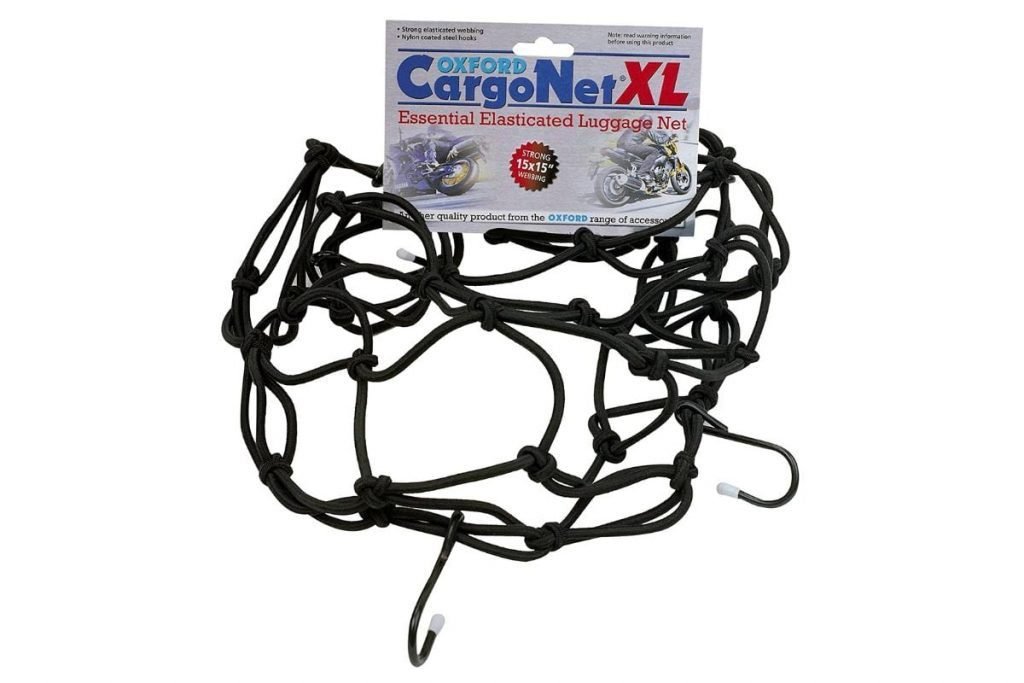
A basic luggage net is one of the most versatile motorcycle touring essentials you can buy – and they cost next to nothing.
They’re cheap, weigh nothing, and can be stored away easily when not in use.
Wrap one around your roll bag and it provides an easy-to-reach compartment where you can store water, food, or rain gear on the way to your location.
Remove the net once at your accommodation and take it to your hotel. Here you can use the attached hooks to construct a makeshift washing line to dry your clothes after washing.
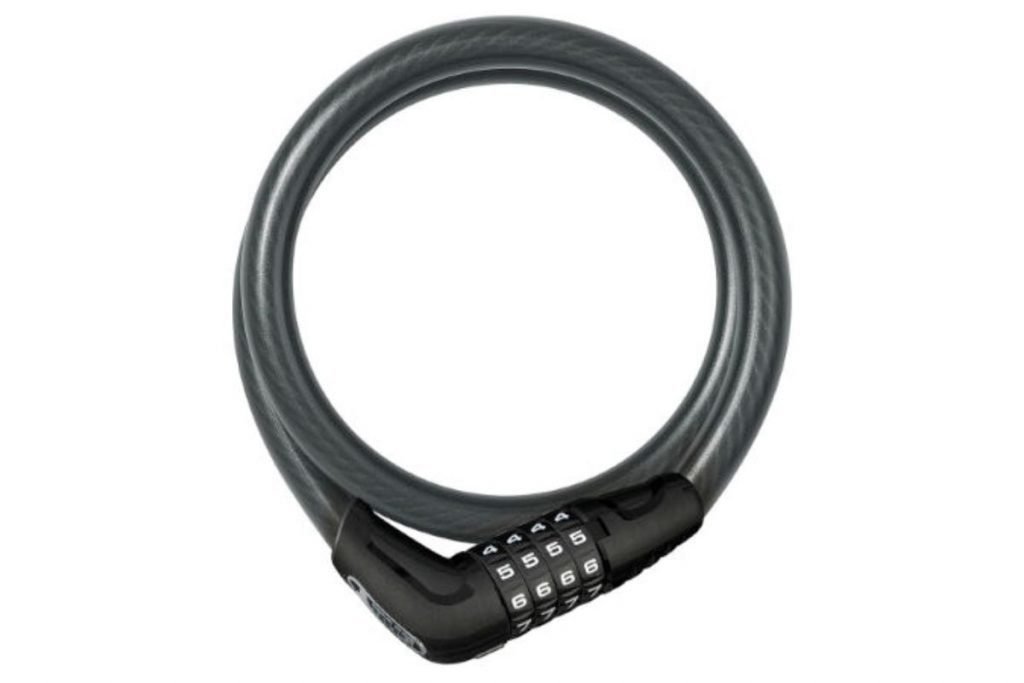
A simple cable lock is another item that made it onto our list of motorcycle touring essentials.
Get one that’s a few metres long, and it will prove to be one of the most useful items in a multitude of scenarios.
Travelling with a roll bag? Wrap the cable lock tightly around the roll bag. Not only does this act as ‘storage’ for the cable lock, but it will also help secure your bag – making it more difficult for people to get into it.
Stopping off for lunch and have nowhere to store your helmet and jacket in the 35-degree heat?
Feed the lock that’s wrapped around your roll bag through the chin guard on your helmet. Once locked, your helmet and bag will now be (somewhat) securely fastened to your bike.
You can also secure your motorcycle jacket to your roll bag in the same way (depending on the jacket.)
Related: Choosing the Best Security For Your Motorcycle
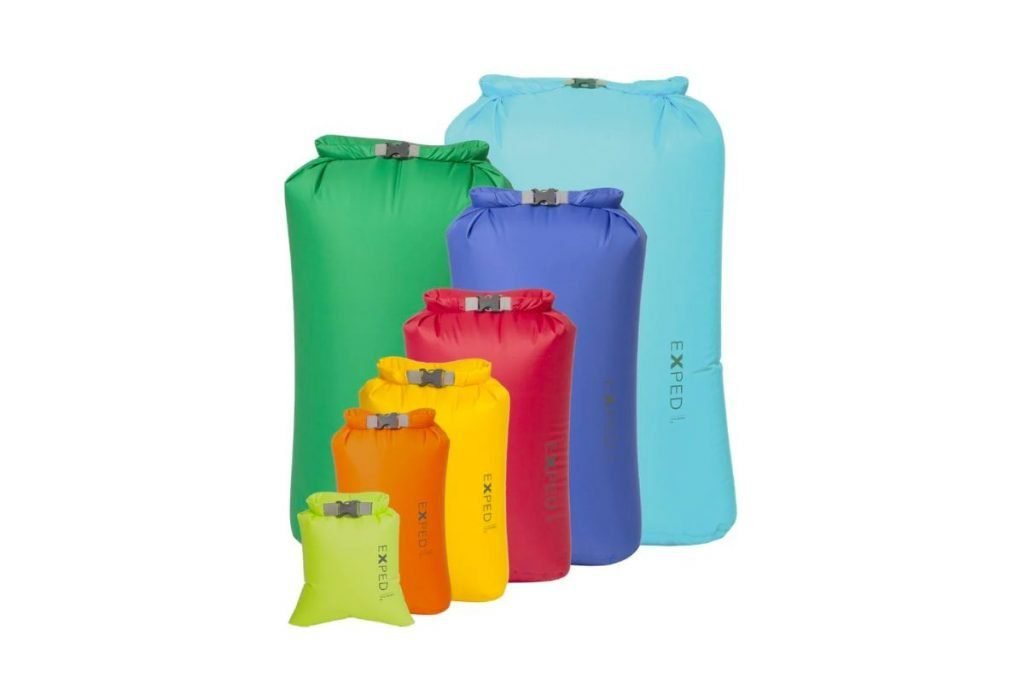
These little dry bags are excellent for various uses. And this makes them one of the most resourceful motorcycle touring essentials you can carry.
You can use them as an ordinary bag, or (especially if camping ) you can use them to store away wet clothes – so they don’t get your dry clothes wet.
I actually use them the other way around. So I use them to store emergency dry clothes – so I have something to change into if I get soaked.
As well as storing wet/dry clothes, you can also use them to store your passport, cash, or other documents to save them from getting wet.
I’d recommend getting the ones that fold down from the top, making them 100% waterproof.
Related: Motorcycle Camping Gear Checklist
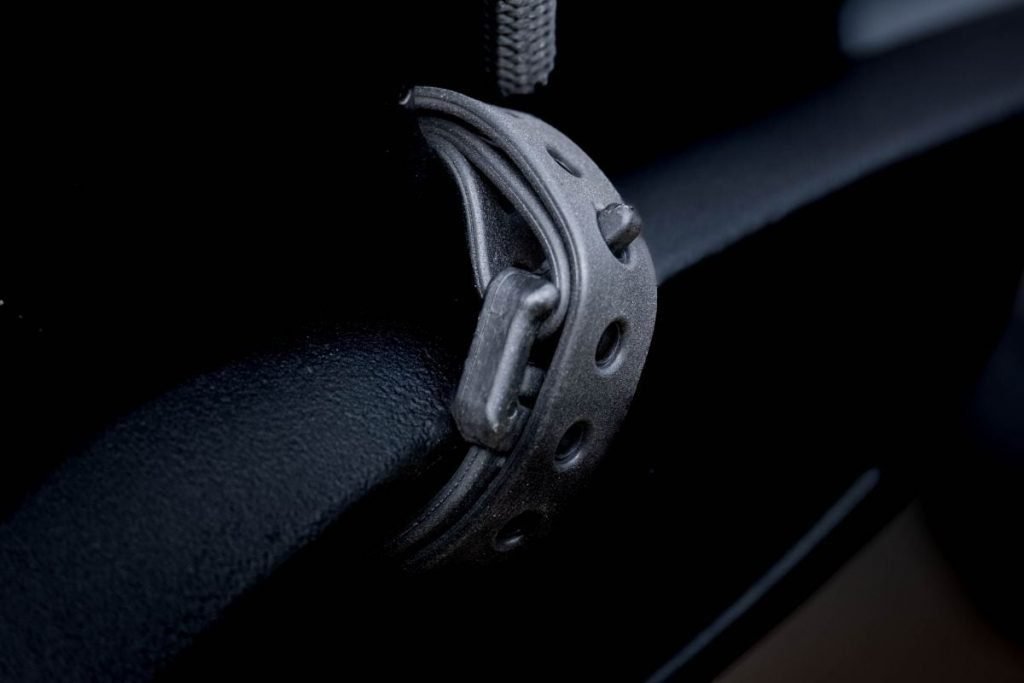
As well as your luggage net (above), keep a roll of duct tape to hand along with some string, a plethora of bungee cords, and some ratchet straps. If you have the cash to splash, get yourself some Voile straps – so good we wrote a dedicated post about them here .
All of these things are light, versatile and take up very little space.
Whatever breaks or needs re-attaching along your travels, you can almost always make a temporary repair using a combination of tape, string, bungees, and straps!
And this is why they make perfect motorcycle touring essentials to keep in your top box.
Motorcycle Touring Accessories: Practical
Kickstand plate.
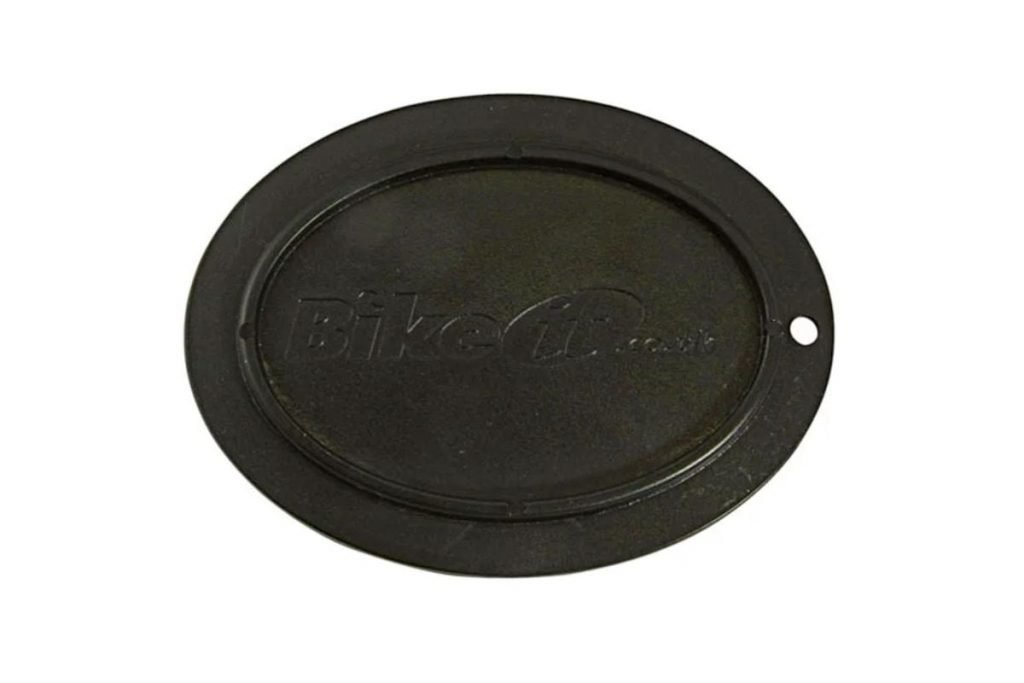
You’ve gone to all the effort of packing your bike meticulously. It weighs a tonne , but you’ve done a great job of perfectly distributing the load.
Don’t ruin it by parking on grass, mud, or other soft surfaces and having your perfectly packed bike fall over.
Of course, in an ideal world, you wouldn’t park on those surfaces at all. But sometimes it’s simply unavoidable. And that’s why a kickstand plate can be one of the most underestimated motorcycle touring essentials.
Keep a kickstand plate to hand to distribute the weight of your bike evenly on an uneven surface.
Want another top tip? Drill a small hole through the kickstand plate. Tie some string through the hole, then cut it so it’s long enough to tie around your handlebars.
This way, you get on the bike whilst it’s on the side stand and simply use the string to lift the plate up to your hands. It’s much easier than trying to bend down and pick it up whilst on the bike.
You can thank me later for that frankly excellent little nugget of advice!
Related: Practical Slow-Speed Riding For Motorcycle Touring
Leatherman / Multipurpose Tool
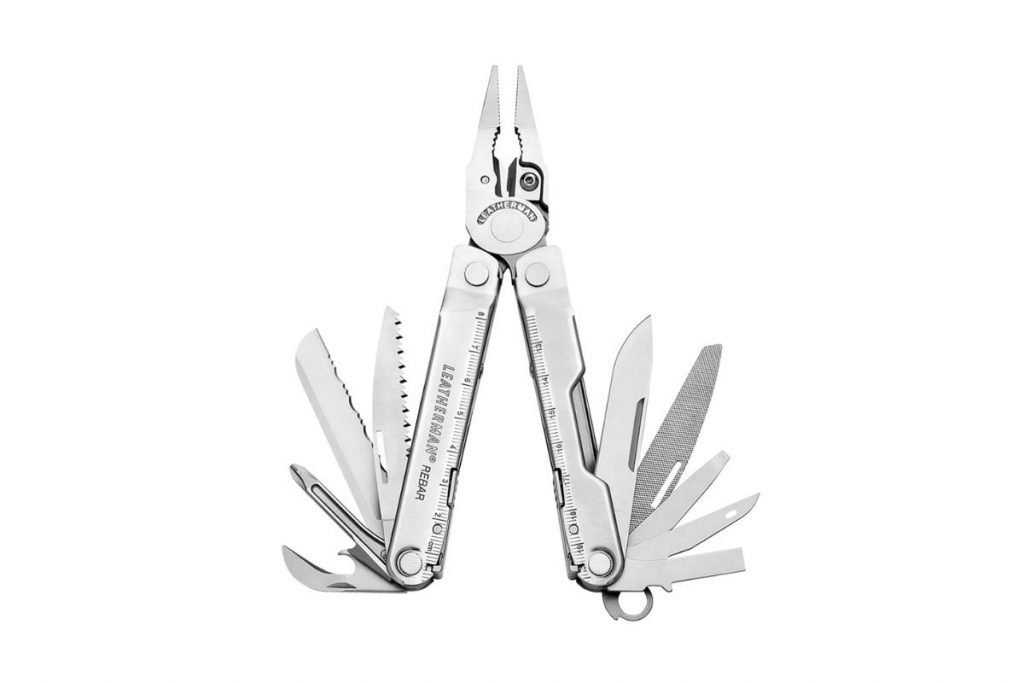
This is especially important if camping, but a multipurpose tool also has its uses on the road. The fact it’s lightweight and versatile puts it firmly on our list of motorcycle touring essentials.
For camping, find an aluminium multipurpose tool that houses a knife, fork and spoon, as well as basic tools. This makes it easy to keep clean and sterile whilst preventing rust.
For general use, keep a leatherman or basic multipurpose tool to hand. You’ll be surprised at how many things you’ll have to fix, mend or create along your travels.
Head Torch (LED)
This is yet another find from my hiking adventures! An LED head torch can be a lifesaver. And that’s why it’s made it onto our list of motorcycle touring essentials.
Head torches are incredibly bright, and the batteries (or charge) can last for ages – depending on the brand.
Have you ever tried fixing your bike in the dark whilst holding a torch in your mouth? It only takes a few minutes before your teeth and jaw are in agony.
Pop the head torch on instead, and you can tend to your bike under the light of a thousand suns without making your jaw ache.
In our experience, breakdowns are actually few and far between. However, packing and unpacking in the dark is far more common.
Have you ever had a full day on the road only to then have to unpack your bike in the dark? Not fun is it. Use the head torch to make early-morning packing (or late-night un packing) a hundred times easier.
Related: Our Top 5 Motorcycle Touring Packing Tips For 2022

You’re going to need somewhere to keep all of the above items. And we recommend keeping them in one place where you know where they are and where you can access them easily.
A small day pack is perfect for holding these items. You can even get detachable bags that serve as a tank bag on the bike and a day pack when off it – making them true motorcycle touring essentials.
If you are travelling by ferry, use this day pack to store your essentials when on board – as you usually can’t return to your bike whilst the ship is sailing.
Throw in some underwear, a clean t-shirt, your phone charger, and a wallet, and you have everything you need in one convenient little day pack.
Motorcycle Touring Accessories: Personal
Latex/rubber gloves.
You can be pretty certain that you won’t be performing any medical procedures whilst on your motorcycle tour.
But you probably can’t be as certain that you won’t get caught in a thunderstorm with waterproof gloves that turned out not to be so waterproof after all.
If you’ve only got one pair of gloves, it means riding the rest of the day with cold, wet hands.
And this is why latex gloves rank on our list of motorcycle touring essentials.
As a last resort, wear latex gloves underneath your riding gloves. Not only will they shield your hands from the wet fabric, but they will also keep you warm.
And the best bit? You can pick them up for free at petrol stations.
Related: Top 10 Winter Motorcycle Gloves For Toasty Hands!
Zip-Off Pants
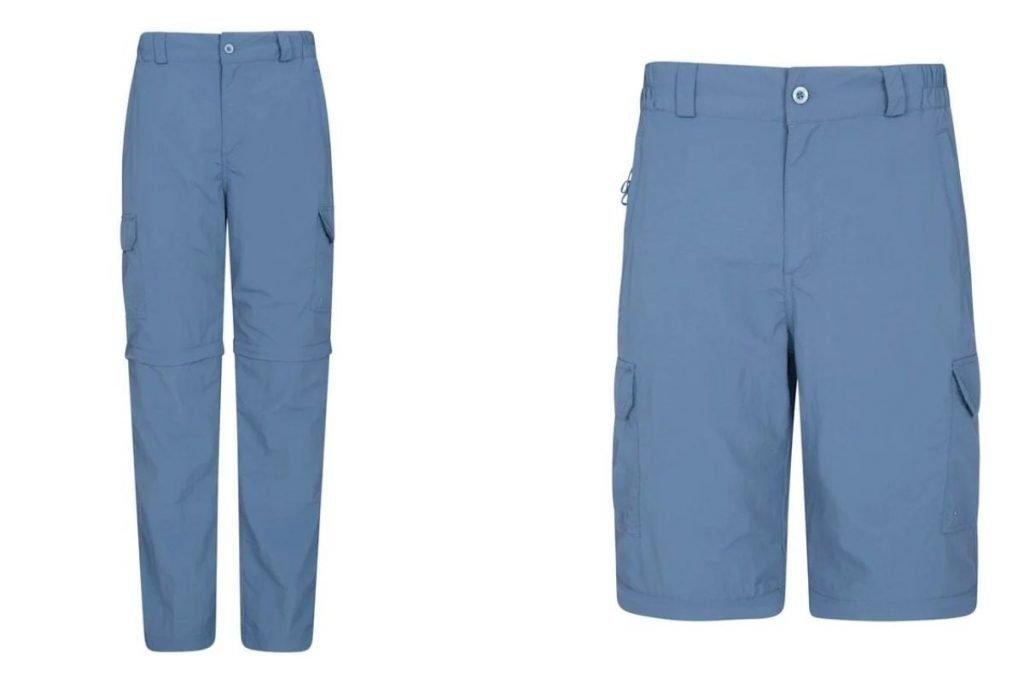
I discovered the multipurpose use of these bad boys whilst on a hiking trip up to Gelmersee in the Swiss Alps .
And whilst they’re not motorcycle touring essentials per se, zip-off pants make for incredibly useful items whilst on an adventure.
For a start, you can use them in most situations. They’re smart enough to wear for dinner and comfortable enough to wear during the evening at your hotel.
But if you’re an adventurer-type like me, they come in handy for day trips and hiking on your days off the bike.
They usually come with at least four pockets meaning you can securely carry your phone, wallet, and keys. And if it gets too warm, unzip the legs, and your pants turn into shorts. Voila!
If you buy zip-off pants made of synthetic materials, you can wash and dry them in no time.
When it comes to touring, these are the only type of pants I take, except for my riding pants.
Related: 6 Ways To Stay Organised When Motorcycle Touring
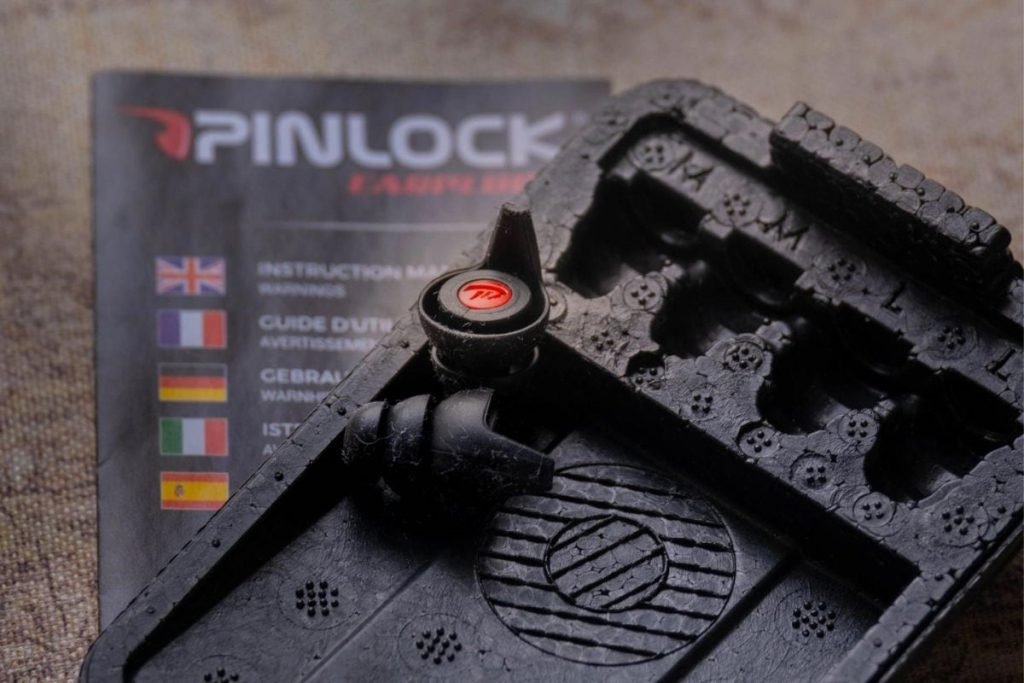
Some people wear earplugs all the time. Others choose not to wear them at all, and others pick and choose when they wear them.
You can probably get away with not wearing them for a quick ride out. But if you’re embarking on a 12-hour ride across borders and countries, then we absolutely class earplugs as motorcycle touring essentials.
Whilst you probably love the sound of your bike, the thud, thud, thud of your v-twin engine will continue to pound away in your head for hours. Even after you get off the bike.
To make winding down that much easier, wearing earplugs can alleviate the pounding in your head. Not only this, but the noise reduction of your earplugs makes all-day riding less exhausting mentally.
Related: Decibullz Custom Molded Motorcycle Earplugs: Review
Yes, I know you’re laughing! But this is one of those motorcycle touring essentials that you really don’t want to get caught without!
Toilet paper is so light that it’s silly not to shove some in your top box. You don’t even need the full roll – just enough to get you out of an ’emergency’ situation in a bush somewhere.
Averse to good old-fashioned shit tickets? Fine, treat your delicate botty to some hygienic wipes instead which will leave you feeling cleaner and fresher from your trip into nature.
Finally, if you’re travelling in a group , at least one person on your tour will get caught short. In which case, toilet roll becomes the ultimate mountain currency.
Provide someone with toilet roll in their hour of need, and they’ll owe you drinks for the remainder of your trip.
Motorcycle Touring Essentials: Conclusion
The theme of this post is pretty much a continuance across the rest of our posts. And that is to make touring easier!
You could, of course, pack everything you can think of. But then you’ll probably be over -packing which means you’ll be adding to the burden of your tour rather than taking away from it.
Pack the most useful motorcycle touring essentials that can be used for multiple purposes.
And don’t over-pack! Pack smart instead.
Top image: LouisMoto via Unsplash
Group Motorcycle Riding: Top Tips You Should Know
10 top dual-sport & adventure motorcycle helmets in 2022.
About - Contact - Editorial Guidelines - Terms and Conditions - Privacy Policy

- Packages & Tours
- Eaglerider \
- Information \
What to Pack for a Motorcycle Trip
Posted On: Oct 17, 2018
Start a Reservation
With so many great landscapes to explore, riding motorcycles in the United States of America is incredibly fascinating and enjoyable. Being such a large country there is almost every kind of riding imaginable— from the twisty mountain passes of the Rocky Mountains to the flat grasslands of Oklahoma, from the curvy Pacific Ocean highways to the sweeping Cherohala Skyway in the mid-Atlantic region. America has been called the land of the free and the brave, which could also be called the credo of motorcyclists everywhere.

If you have a packing checklist on your fridge and have everything in perfectly organized pouches for every trip you take, we are all jealous of you! Most riders are not like that and the question of what to pack comes up for every trip.
We have narrowed down the items that we know will make your ride an enjoyable one while ensuring you have only what you need. The key to enjoying yourself along the way is early preparation, planning, and effective space management.
Let’s look at the essentials to bring on the road.
A LOT DEPENDS ON 4 KEY FACTORS
How long the trip is - we all can agree that you will pack less stuff for a shorter trip. A day ride doesn't require as much gear as doing a 2-week or a month long trip. So the first thing to consider is the length of your ride.
How much space you have - you will be limited to the available storage space on your motorcycle unless there is a support van carrying the luggage for you and the group. All of EagleRider guided tours include a support can, a spare bike, cold water, and a first aid kit. On the opposite, a backing camping trip requires you to carry everything on your bike.

Trip location and terrain - what you pack for a ride to Baja California on a dual sport bike can be very different from packing for a Route 66 trip on a touring bike. You may choose a different type of protective gear, for example.
Riding solo or with a passenger - if you have a second rider on your bike, how light you pack can be crucial. On top of that, chance are your passenger will always pack more stuff than you.
A FEW THINGS THAT WILL ALWAYS BE TRUE
Weather conditions can change quickly - No matter where you ride, weather can be very unpredictable. You can start your day on a frosty morning in Bryce Canyon in mid-May, ride through Zion where the temperatures will start increasing dramatically and then end the day with a 70-mile highway ride to Las Vegas where it will be even hotter.Rain, the extreme heat of the deserts, gusty winds, and other dramatic weather changes can affect your ride and what you pack.
Road conditions are often an unknown - not the most important consideration for packing, but definitely a helpful thing to keep in mind is that you may not always know when you have to take a service or fire road, or when you'll be riding on an old bumpy or brick stretch of the road. You want to make sure you can always balance the motorcycle well and how much you pack can affect this.
There will always be something you forgot to bring - it's one of those things that happens to all of us - you hit the road without some essential you really need. No matter how prepared you think you are, there is at least a small chance that you may have to buy something along your trip. For this, the only thing you'll need is a credit card or cash, possibly the most essential thing to pack of all!
POPULAR STORAGE OPTIONS AND STORAGE CAPACITY ON VARIOUS MOTORCYCLES
Before we move on to the checklist, let's look at the storage capacity on the popular motorcycle.
If you need more information about a specific motorcycle, please take a look at the our motorcycle rental page for each specific model where we provide all the essential specs. OEM website will be your ultimate source of everything on each specific model.

Saddlebag liners - typically measuring 18″ x 6″ x 10” (or 17.5 liters) each, saddle bag liners are a very convenient way to quickly put in and take out luggage. You can simply take these to your hotel room every night. Most of EagleRider locations offer these for purchase when you arrive for your trip. Harley-Davidson® Street Glide®, Harley-Davidson® Road Glide®, and Harley-Davidson® Road Glide® Special all have hard case saddlebags.
Tour pack liners - typically measuring 15" x 21" x 8" (or 41 liters) these liners are very handy, but you can also just as easily fit any carry-on size bag. Most airlines limit the carry-on size to 40 liters. Motorcycles such as Harley-Davidson® Electra Glide® Ultra and Harley-Davidson® Road Glide® Ultra come with these tour packs and offer this additional storage.
And for add-on storage bags that can be attached to the back seat or a sissy bar, we have a new option.
INTRODUCING THE EAGLE PACK
For motorcycles that don't have a top case for storage we are now offering an add-on called the Eagle Pack. At 73.5 liter capacity and expandable sections, this travel bag is an amazing companion that's sturdy, well-made, and give you that additional storage space you do now have on motorcycle models such as Harley-Davidson Street Glide.
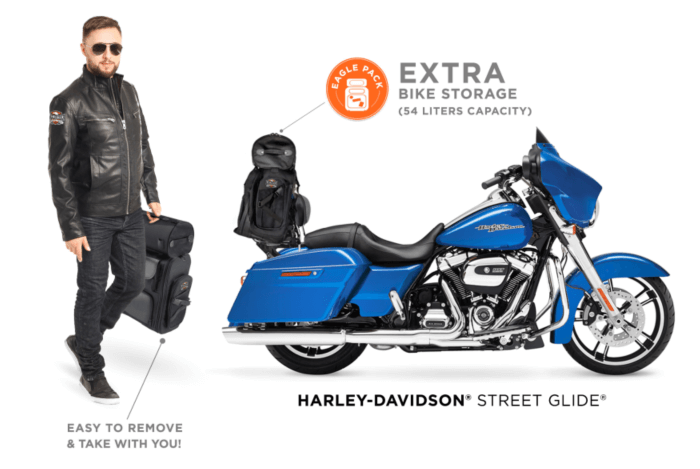
Eagle Pack costs $149 and you can take it home after your rental is done. So once you add it to the rental reservation, it's yours to keep and enjoy on your own bike and your future rentals.
To add the Eagle Pack to your booking, visit the reservations add-on page and select the Eagle Pack option before proceeding to checkout. Our rental team at the location will be notified that you've added it to your trip will be ready for your pickup.See more information about the Eagle Pack in another blog post.
PACKING CHECKLIST

EagleRider provides standard half-shell “Harley-style” helmets at no charge to all riders and passengers, but you are of course welcome to bring any of your own personal riding gear with you on the trip.
If you require a newer helmet, ¾ helmet, or full-face helmet, please arrange to purchase one locally at EagleRider, or bring it with you. If you require communication systems (Intercoms) please arrange to purchase one locally at EagleRider, or bring it with you.
All riders on EagleRider rentals and tours are required to wear a helmet at all times.

While riding in leathers with no helmet and showing lots of bare skin was popularized by movies like Easy Rider, the fact is that it’s safer and more comfortable to ride with protective gear.
- Cold Weather Jacket(s) – For trips at the beginning or end of our summer riding season, we recommend a “Layering’ system of base layer of wool or Capilene (synthetic) shirt, wind jacket, and cold weather jacket
- Cold weather riding boots, socks, and gloves
Wearing protective gear not only protects you should the worst happen, but also protects you from the elemental forces of sun, wind and rain and their attendant dehydration, sunstroke and hypothermia. These days there are excellent choices in leather, textiles and high tensile nylons that are not only superbly comfortable, but also offer first-rate protection.
Riding pants are useful because they give riders a better grip on their seats, and the ones with built-in pockets for armor are an excellent choice because of the added protection they offer. The best pants come down and cover your over-the-ankle boots, providing complete protection all down the rider’s leg.
Leather boots with heavy soles and without laces are the best option for motorcycle riding because they protect feet from abrasive asphalt and don’t get caught on the pegs during starts and stops of the motorcycle.
The main impact points during a crash are the head, shoulders, hips, hands and knees, so wearing gear that not only covers these vulnerable points but also offers impact-resistant padding is your best bet should the worst happen.
Wearing quality gloves protects your hands’ sensitive skin from hard surfaces. Quality motorcycle gloves have full fingers, palm protection and ideally some hard knuckle protection. Mesh summer riding gloves are available on the market now, and are a terrific choice for bridging the gap between protection, comfort and coolness.

On the longer trips, rain is something you can definitely expect. But what about day rides when you try to pack light and just enjoy the road? It's definitely a great visual, but the reality can sometimes be unexpected.
- Lightweight rain suit –Weather can be unpredictable even in the warm summertime, so we definitely recommend having a rin suit stored in your saddlebag
Most of EagleRider stores carry a least a few options of rain gear. You are welcome to bring your own, but can also count on buying it locally ahead of the trip.

Although the number of layers depends on the location of your ride and the season, it’s always a good idea to pack several layers of clothing to wear under your gear. In the mountains there can significant elevation changes, which means considerable changes in temperatures.
In the plains and deserts the days start of cool and warm up quite quickly, so you’ll want to wear either a base layer or some other thermal protection that can be shed easily. Riding in the American West storms can brew up quite quickly, so it is always a good idea to have your rain layers easily accessible as well.
- Long-sleeve white t-shirts
- Some type of face covering (i.e. bandana) for desert crossings
- Swim trunks, shower sandals
- Long sleeve and short sleeve shirts, warm weather shorts
With the wind on your bare skin it’s easy to get dehydrated and/or not to notice that you are getting sunburned. Mesh gear is widely available in the USA now, and these garments have quite good air cooling.
Also widely available now are cooling vests and collars—while not actually protective gear, they do make such gear more comfortable while riding by employing evaporative cooling techniques.

We all have the essentials that provide the daily comfort on the road and for an overnight stay. Even though you may want to add more to this list of daily use items, here are the most common and widely used things we recommend to bring.
- Personal hygiene (toothbrush/toothpaste, comb/hairbrush, razor, tweezers, deodorant)
- Ear plugs, sunglasses/eye protection, sunscreen (recommend 35 SPF or greater)
- Eye protection/clear glasses for evening riding or cloudy days
- Wool or Capilene socks, underwear, gloves
- Neck scarf/bandana/tube for protection from neck sunburn
- Bungee straps or cargo net
We often find comfort in the little things. Riding on the open road is an experience that takes you away from all the daily clutter and business of things around you and things to do. No matter how big your bags are, some of these small essentials will absolutely put a smile on your face when you need them the most and realize they're all neatly packed up in your bag.

A small pouch with medications for the most common needs on the road goes a long way in keeping your ride enjoyable. Even if you won't use any of them for yourself, there might be a rider in your group who will be grateful to receive a helping hand with some basic pain issues.
- Daily prescriptions
- Aspirin, Tylenol, Ibuprofen, eye drops, allergy medication
On our guided tours , all tour guides and van drivers have first aid kits for the group and are CPR certified. Some of our tour guides are retired firefighters and paramedics, so you will absolutely be cared for, no matter the situation.

Most of us have two main reasons to get on the road - to connect or to disconnect. Whichever reason is right for you for the trip ahead, here are some communications tools and gadgets to bring along to document the trip and make sure you've got ways to pay for anything you need during the ride or tour.
- Smart phone
- Laptop/USB drive (optional)
- Camera with extra batteries, international charger (120 volts) and storage cards
- iPod or MP3 player (optional)
- Driver’s License with motorcycle endorsement
- Cash, credit cards
You can absolutely capture your trip on your smartphone. But having a small and light camera might be one of the best additions to document the ride to remember and relive it later.
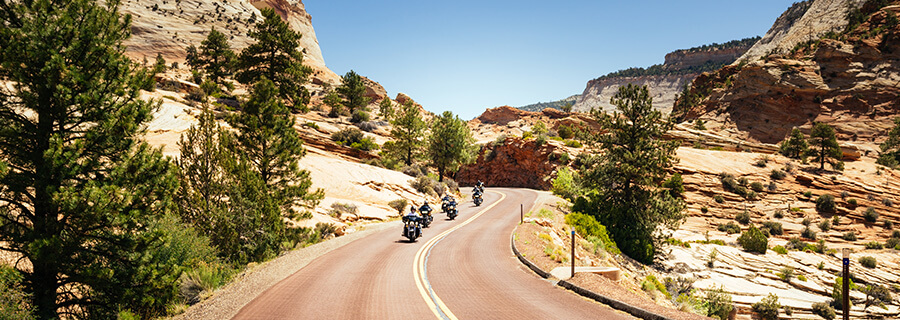
FINAL NOTES
On guided tours, we ask that you limit the number of bags you bring to no more than one medium-sized suitcase and one carry-on bag. The chase van will accommodate your luggage so all you have to think about is the ride. Here are our tips for what to bring. Use your experience and best judgment to supplement this list. If you have any questions then please consult your Tour Leader for pre-riding conditions and expectations. Your tour leader can recommend specific products based on your needs.
If you're not sure about your specific needs and the trip you're about to book, whether a rental or a tour, please contact our reservations team to assist.
The Ultimate Motorcycle Trip Packing List

Ten years ago when I started riding motorcycles, I was immediately hooked on long-distance motorcycle trips. Seeing the country from two wheels and being fully self-sufficient along the way is extremely invigorating. Especially when you have everything you need packed on your bike, and not having an “oh no!” moment 1,000 miles from home.
The most popular question I get asked by y’all is what gear I camp with and take with me on motorcycle trips. If you’ve never done a long-distance motorcycle trip, preparing for it can be a little overwhelming at first. Every year I get a little bit better at packing my motorcycle up for the long haul. And, for 2020, I’ve really done some upgrading to all of my gear. Here’s my Ultimate Motorcycle Trip Packing List, filled with all the goodies I make sure to take with me on the road.
>>> Read Next: How to Pack Your Motorcycle Like a Pro
Riding Gear
Riding Gear is one of the most variable factors involved in packing for a motorcycle trip. Something you’re going to want to consider is the climate where you’re headed. Is it Fall in the Rockies ? S ummer in the South ? Maybe reading over my Winter Riding Essentials Guide will help out if you plan to ride in chilly weather. Below is a list of the riding gear I always pack on trips.
- Full Face Helmet – A lightweight, aerodynamic, full face helmet with great ventilation is going to be ideal for a long distance motorcycle trip. My personal favorite (still, after 7 years!) is the Bell Race Star .
- Leather Jack et or Riding Shirt – You’re going to want a quality riding jacket that can protect you and is ultimately comfortable for those long miles. I love all of my Roland Sands Design Jackets, but the Maywood tends to be my go-to.
- Riding Boots – There are plenty of great boot manufacturers out there. I personally really enjoy the H-D Footwear lineup, specifically the Beechwood and Walfield styles. Some people need compression socks to keep their lower legs comfortable on long hauls. A tight pair of tall boots could also help. They also keep my legs warm, deflect debris from hitting my shins, and are comfortable to walk around in all day if needed.
- Gloves – Consider the weather you’ll be riding in. I always pack a pair of Summer Gloves and Colder Weather Gloves. It’s always nice to have a second set of gloves just in case your hands get soaked!
- Heated Gear – What a game-changer this stuff can be!
- Rain G ear – Every time I don’t pack it, it is guaranteed to rain for hours on end. It also doubles as a windbreaker if you need an extra layer of warmth. Don’t forget to keep your boots covered , assuming they aren’t waterproof already.
One year I went to Sturgis and somehow forgot to pack a leather jacket. That was quite a mistake, as temperatures dipped into the low 50’s at night, and I was nowhere near prepared. You can always buy a t-shirt or underwear on the go, but quality riding gear is an investment you usually only want to make once. Don’t forget the basics!
Camping Gear
Camping Gear comes in a variety of forms, but to anyone who is an avid outdoors enthusiast, you’ve probably already noticed how backpacking gear is ideal for motorcycle camping.
>>> Read more motorcycle camping blogs , here !
If you haven’t noticed, and you’re wondering what that means, here’s a mild explanation: Backpackers carry everything they need on their backs. Sometimes for a night, sometimes for months. Pack size and weight of camping gear are vital to making the backpacking experience a breeze. Not to mention the quality. Backpacking gear has to stand up to Mother Nature at all times, so it typically is of higher quality. Motorcycles only have so much room for storage. The lighter your pack, the less likely your bike is going to handle poorly, too.
- Tent : My two personal favorites are the Big Agnes Fly Creek UL1 BikePacking Tent and the Big Agnes Copper Spur UL2 Bikepack Tent . Both pack down smaller than any other tent I’ve seen on the market and are exceptionally well made. Make sure to purchase the footprint for added versatility, to ensure the floor of your tent lasts as long as possible and is protected from any rugged terrain.
- Hammock with Straps
- Sleeping Bag : Choosing a sleeping bag that will meet your needs in regards to budget, pack size, and warmth will be a lot of variables to consider.
- Sleeping Pad : I recommend an inflatable pad with a decent R-Value (higher if you’re cold weather camping). I own a handful of Big Agnes pads – all in Long-Wide dimensions since I enjoy the extra room to roll around. They pack down extremely small and are lightweight. If you’re on a budget, a foam pad may work well. They’re a bit more bulky and have low insulative properties, though.
- Big Agnes Pumphouse Ultra – This little guy is pretty versatile. Its primary purpose is to help inflate the Q-Core sleeping pad, but it can easily be used to wash your clothes on the go.
- Head Lamp – Ever get to camp after dark and have trouble setting up your tent, holding your phone in one hand and a tent pole in the other? With a headlamp, you’ll have your tent set up and dinner cooking in no time.
- Camping Pillow
- Earplugs – I’m a light sleeper when I camp. Earplugs definitely help me get a better nights rest, and I can definitely tell a difference the next day. These are also helpful after a few hundreds miles of hearing the rumble of my exhaust. Sometimes, your ears just need some peace and quiet.
My Minimalist Camp Kitchen
Let me start off by saying that investing in this minimalist camp kitchen setup to cook my own meals at camp was the best upgrade I’ve done in a very long time. I LOVE going out to eat when on the road. (I mean, that’s part of the reason this blog exists in the first place!) But, being able to be self-sufficient while saving money for extra tanks of gas or a nice campground is a huge plus.
There’s a ton of other things I could carry in addition to this minimalist “kitchen” setup, but I wanted it to be easy to transport while not taking up tons of room in my pack.
Check the price at REI , or Amazon
I chose the Jetboil MicroMo over other options due to it’s size and ability to cook food. Some Jetboil systems are better for just boiling water (like the Flash ), and others are better at doing a little bit of everything.
The Minimo is a slightly larger version of the Minimo and is great if you plan to cook or boil water for more than one person often.
The MicroMo has worked well for me and is still the number one piece of gear in my camp kitchen years after purchasing it.
Here are a few more items you’ll need to consider packing with you:
- Cooking Utensils
- Sea to Summit Collapsable Bowl
- Fuel Canister – I buy the 230 gram canister. It’s only $1 more than the 100g and is still fairly small.
- GSI Outdoors Dish Cleaning Cloth – Helps to clean out my JetBoil after cooking.
- DIY Camp Cozee – Another backpacking world inspiration. These help save on fuel when rehydrating meals, or even rice! I followed the directions on this YouTube video to make my own.
I can store the cleaning cloth and utensils inside the Jetboil while it’s in transport, so it really is an optimal “minimalist” kitchen kit. If you’re one of those people who needs caffeine in the morning to function, there’s tons of accessories out there that will easily allow you to make a fresh cup of coffee at camp. Check out the Sea to Summit Coffee Dripper and the Jetboil French Press for starters.
Storage & Luggage
Everyone always asks me about the bags on my Dyna and Low Rider ST . They’re the LeatherPro retro FXDXT Bags . Any saddlebag is a great option if you need additional storage space, but I love the look and versatility of these bags.
In 2021, I upgraded to the Kuryakyn Momentum Vagabond Bag to use with my sissy bar setup, replacing my camera bag. This has been a great luggage option for all of my trips. You can read the full review, here .
I also use a detachable sissy bar with a luggage rack. You can purchase an OEM one from H-D or surf Revzilla for an aftermarket option.
Updated in 2022: For years, I used cargo nets to mount extra gear to my bike. Ever since I found ROK Straps , I’ve thrown all of my cargo nets and bungee cords away. These adjustable straps are rugged, and secure my dry bags to my motorcycle MUCH better than any bungee or cargo net ever has. I also carry a set of their commuter straps in my Kuraykyn luggage bag just in case I need them.
Camping Gear and Food Storage
- Sea to Summit 20L Big River Dry Bags : I use two of these. One for my Camp Kitchen, and one for my Camp Gear (both listed above). I purchased the Big River versions of these dry bags over the thinner, lightweight options for overall durability purposes. Nobody wants to get to camp and realize their sleeping bag is a soggy mess. Keeping your gear in a dry bag will definitely save you some unexpected headaches.
- Odor Proof Bags : I keep all of my prepackaged food in these bags. They do keep food odors down (especially coffee). Be sure to still be mindful of wildlife where you plan to camp.
Clothing Storage
Over the years I’ve primarily used Ziploc Bags to store my clothes, but this past year I upgraded to compression travel cubes. I use both the REI Brand travel bags and the Eagle Creek Compression Bags . The REI ones feel a little more durable, but both brands work extremely well. You can pack a TON in these. So again, try to not overpack.
Depending on how far you intend to ride, and for how long, will definitely determine how much clothing you’ll need. My general rule of thumb is, if I’m leaving for 5 days or more, I pack for 3-5 days:
- 1 extra pair of jeans
- 4 extra T-shirts or tank tops
- A Hat or Beanie (usually both)
- 1 pair of leggings for sleepwear or activewear purposes
- 1 pair of shorts
- 2 bras (sports bra, bralette, whatever you want)
- 5 pairs of underwear
- 1 Long Sleeve Shirt
- 2-4 pairs of socks
- 1 pair of shoes
- 1 pair of flip flops (LOVE my
Any additional clothing I pack usually involves a sweatshirt or wind breaker for added layers on the go. These don’t get compressed into the cubes since I need quicker access to them.
You really don’t need a ton of clothes on the road. From a friend’s house, Washaterias (that’s what us Texans call laundromats) to DIY sink laundry machines or the Big Agnes pumphouse, there’s always an opportunity to get your clothes cleaned.
In 2015, I purchased this 5 liter Herschel Supply Bag to use as my daily makeup bag, and still use it on a daily basis to this day. I store all of my makeup and general toiletries in it when I’m on the road without a hitch.
As far as Shampoo, Lotions, and other Shower Gels go, I’ve tried the tubes you can get from Target or other grocery stores, and I’ve also tried the higher-end ones like Go-Toobs . If you’re on a budget and you don’t travel often, the Target 3oz tubes will be just fine. As an extra precaution, I usually store the cheaper tubes in a ziplock sandwich bag to avoid leaks. If you’re more of a quality person, the GoToob brand is great for all of the above.
For showering and face washing, I use the REI Mini Towel and these Large Microfiber Towels . What a game-changer to be able to pack a towel with you on the road that takes up barely any space! From hot springs, watering holes, and campground showers, the travel towel has comes in handy on various occasions.
I usually try to avoid buying travel-size items when possible. I take my regular hairbrush, toothbrush, paste, and deodorant usually. And, the most important toiletry of all: toilet paper! It wouldn’t hurt to throw some in a ziplock bag and stash it somewhere convenient.
Water / Outdoor Recreation / Daily Use Items
Of course, don’t forget to pack sunscreen, chapstick, and any other items you think you might need.
I always carry water with me on the road via a 48oz Nalgene bottle , HydroFlask , or water bladder. The HydroFlask is awesome at keeping water cold or hot, but it isn’t a necessity. Always fill up your water bottle when you have access to clean drinking water, or pack a small water filter if you plan to get off the grid.
If you plan on riding in any hot weather, I’d advise purchasing this 3 Liter Camelbak water bladder . Mine fits in my armor pocket on the back of my jacket, but you can also purchase bladder/backpack combos. You can read more about tips for riding in extreme heat, here .
If you want to get off the bike and into the outdoors on foot, or perhaps just want an easier way to carry your clothes and toiletries to the shower facility, a stuff-able backpack is a great option. These backpacks fold up to be smaller than a soda can when not in use.
A tool kit is definitely important to take with you. However, if I threw a list of sockets and wrenches into this blog, they might not fit your bike. Make sure to take the most useful tools with you, but not the entire tool box. Additional things that you should consider beyond the wrenches include:
- Tire Repair Kit
- Extra Spark Plugs
- Electrical Tape
I’m not a very good mechanic, but I can do basic roadside maintenance, like plug a tire or change a battery. It’s always a good day when you can avoid paying a dealership an absurd amount of money to fix something simple, if you just bring along the right things to do the job. Do a little research on your bike and find what works best for you.
Content Creation / Tech Gear
Taking camera gear with you is a great idea. I’ve always loved documenting my adventures, and I’m sure you do, too!
>>> Read Next: My FULL Camera Gear List
- DSLR Camera
- Action Camera (check out my favorite mounts, here !)
- Travel Size Drone
- Memory Card Holder
- Storage Bag for charging cables, batteries, etc.
Charge Your Things On the Go!
If you enjoy camping, you probably already know that you can’t always rely on power sources to be readily available. Here’s two different charging options:
- Portable Charger : A small-capacity portable charger is great for someone who doesn’t need much juice. However, I carry a large-capacity portable charger so that I can keep my camera batteries charged on the go.
- Battery Tender USB Charger Adaptor
Feeling a little overwhelmed? Don’t be. It took me many years to invest in all of this gear. In fact, my motorcycle trip packing list has changed dramatically over the years as I’ve learned more about traveling on two wheels. But, having quality gear is worth the investment when you enjoy trips on two wheels. Have any other comments or questions? Leave a comment on the blog! Think a friend could find this information useful? Share it with them on your favorite social channel.
Most of the links in this post are affiliate links. Any purchase you make through them supports this site at no additional cost to you. Thanks for your support, and I’ll see y’all on the road!
You may also enjoy

Little Switzerland, North Carolina: Everything You Need to Know!

How to Pack a Motorcycle Like a Pro

My Favorite Motorcycle Camping Gear of 2023
Grab some gear for your next ride

31 Comments
Wow thanks a bunch for the packing ideas. This will help me plan a little better and lighter for my first trip from Houston to Sturgis this year.
Thanks again,
Awesome. Glad to hear it! See you there! Ride Safe.
We are going to Sturgis also. Live in Houston but biking from Grand Junction. Thanks for packing tips.
Thank you! Been waiting for this blog! It’s funny the small creature comforts that can make a trip a lot more fun!
Glad you enjoyed it. 🙂
Love the list! I still pack toilet paper for camp, but for when I’m on the road, I’ve purchased a kula cloth! Great for us ladies and is just snaps to your bag to air dry. Definitely a game changer for me!
That’s a great idea! Thanks for sharing. 🙂
6 thoughts on “The Ultimate Motorcycle Trip Packing List”
Great article! So, much I forwarded to my FB groups that I’m a member of who premises are around camping. I’ve learned a lot, and I’m sure members in my groups will too. Thank you for a great article!
Awesome! Thanks for sharing it, too! 🙂
I’d add a couple things to your list. A camping chair (high back), battery tender USB charger adapter (to charge your cell phone), and kick stand pads. Most places I’ve camped have picnic tables, but they can be a bit uncomfortable so the camping chair is very nice. The charger adapter was so nice because I didn’t have to find a place to charge my phone…just plug it into the bike.
Ah yes, I have a Big Agnes chair I take along on some trips. Although I don’t feel it’s a necessity, so I didn’t list it. Still a great tip! And, the USB charger is already listed under portable charging. That is a must! 🙂 Thanks for dropping a few tips!
Hi. I just found you on YouTube. I don’t see any word on what bike you have. Is it a Dyna? Year? Also it seems like the dyna either has different pipes in some video or it is a different bike altogether. I ride 2014 dyna street bob. Thanks
It’s a 2015 FXDL. Also has the same exhaust system in every video (RedThunder).
Great info, very nicely placed. Really enjoyed all of it. Thanks
Glad you enjoyed it! 🙂
What an inspiration. I love both your Youtube stuff and your internet site. Even at 70 years old I find your equipment interesting and your delivery top-notch. I have extensive long-distance backpacking experience but not so much motorcycle camping experience. At the risk of lapsing into “mansplaining, I have only two suggestions for you.
Two mantras, “wear-&-a spare” and “dual-purpose”. A wise long-distance backpacking (not me) once said that if your pack (or most of it) is not empty when you have set up camp, you may have packed too much. By necessity, you are most likely doing the dual purpose stuff already like no need for two knives or two screwdrivers (multi-use tools succeed at most things adequately if not admirably).
That brings me to wear & a spare. Typically while backpacking, I will carry only one change of synthetic underwear/socks that can be rinsed out and dry while I wear the other pair. The wear & a pare mantra may not apply as well to motorcycle camping as long-distance backpacking since you can carry more on a bike and you don’t wear leather & denim on the trail.
Obviously YMMV. Good luck!!!
This is great advice! Thanks, Jack! 🙂
Looking forward to newsletters.
Wow, great list! I’m watching yours videos on YouTube in Brazil, and that inspiring me. Maybe can you suggest what apps or softwares do you had used for editing yours videos. What you use on the way? Thank you for your amazing videos.
Thanks for watching! 🙂 There is an entire blog dedicated to my camera gear, here: http://ridetofood.com/camera-gear/
I use Adobe Premiere Pro, and I don’t edit while traveling.
Great videos, tons of good info.
Thanks Mark! 🙂
Staci, Really enjoy your content, keep up the great work!
This is a great article on where to find free camping. I love that it includes tips on using apps to find dispersed camping sites.
Glad you’ve enjoyed it! 🙂
Hi Staci, I have been off my bike for a few years and plan to get back on it soon. Have travelled to California, Sturgis, and South Carolina to name a few. Looking forward to getting back on the bike and spending some time riding. You have some great tips on gear and packing. Thanks, Kevin
Awesome!! Hope you have a blast out there. enjoy! 🙂
Great packing list! Planning a motorcycle trip can be a daunting task, but this checklist simplifies the process. You’ve covered everything from essentials like riding gear and tools to those often-forgotten items like ziplock bags and sunscreen. This will be my go-to resource before hitting the open road. Thanks for sharing!
This packing list is a lifesaver for riders like me who often forget essentials. Thanks for keeping it short and practical – just what I needed for my next adventure!
Super handy checklist! ✅ Thanks for making trip planning easier.
Super helpful packing list! Will definitely use this for my next trip. Thanks!
Leave a Comment Cancel Reply
Sign me up for the newsletter!
10+ ESSENTIAL Motorcycle Touring Tips
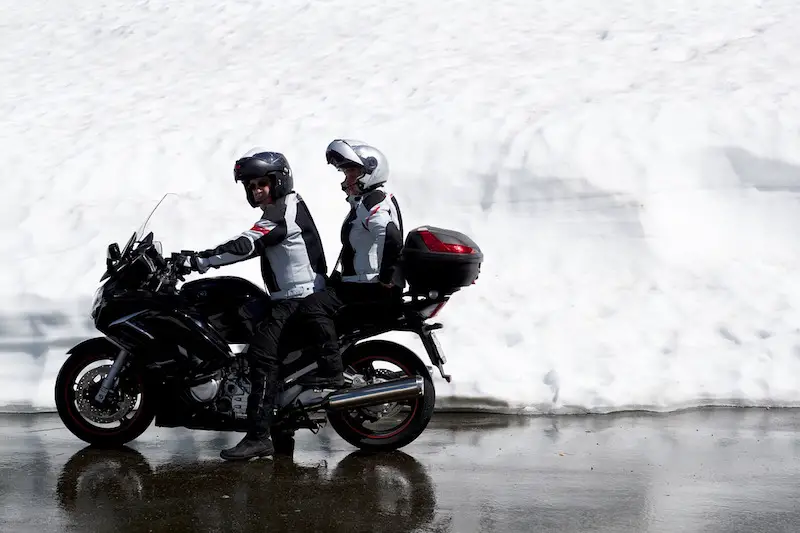
As an affiliate, we may earn a commission from qualifying purchases. We get commissions for purchases made through links on this website from Amazon and other third parties.
One of the main reasons I bought my first motorcycle was to on motorcycle touring adventures. The best part of riding for many people are those epic motorcycle road trips you get to experience.
Surprisingly, there is a lot that goes into planning a motorcycle tour. Not only do you have to worry about logistics, there are plenty of other details to consider. What to pack, finding the right motorcycle touring gear, how to prep your bike, and choosing a budget are just some of the details.
In this post, we’re going to look at the best motorcycle touring tips. With these tips in mind, you’ll be able to have the motorcycle road trip of a lifetime. Instead of sweating the small stuff, this list will help you focus on enjoying the riding experience.
If there’s anything we missed or any helpful tips you’d like to add, let us know in the comments below. Otherwise, let’s jump right into it!
Jump Ahead To:
The Best Motorcycle Touring Tips and Motorcycle Road Trip Guide
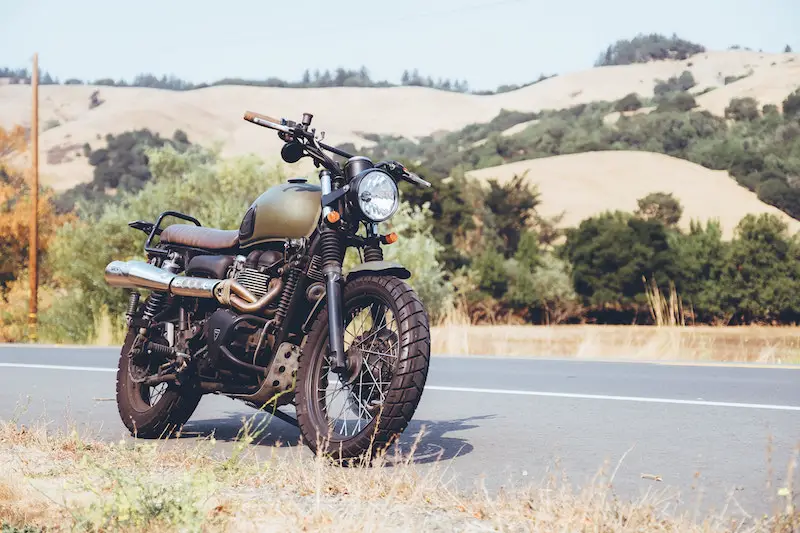
Commit to the Trip by Setting a Date
It’s all too often that people daydream about going on a motorcycle adventure. These people talk about going on a motorcycle tour but the dream never turns into reality.
Instead of saying “some day”, make the effort to commit to a road trip. Set a specific date, Book the time off work, and make the commitment.
This is the first step towards heading out on an epic adventure. It doesn’t matter if it’s three days or thirty, simply commit to a motorcycle trip and follow through with your commitment.
Without a firm commitment, you’ll keep avoiding taking the time to experience your venture. With a set date in mind, it’s easier to plan for the road trip and gives you something to look forward to.
This is one of our best motorcycle touring tips. If you’re daydreaming or skirting around the idea of a tour, set a date and commit. It’s really that easy!
Ride in the Late Spring, Summer, or Early Fall
No matter where you’re riding, it’s guaranteed you’ll run into bad weather and poor riding conditions. However, the best time of year to ride is during the late spring, throughout the summer, and into the early fall season.
In North America, and especially in the northern hemisphere, this time frame provides the best window of great weather. The temperatures will be warm enough for riding and the rainy season will be nearing its end.
During this timeframe you’ll also have the best options for tourist sites and attractions. Many places close down during the winter, late fall, and early spring. By riding during the summer season you’ll have the most options available to you when it comes to attractions, accommodation, and dining.
Some riders might prefer a late fall ride in order to catch the stunning fall colors. The problem with this approach is that you’re likely to run into freezing temperatures.
Overall, the main summer season provides the best weather for motorcycle touring. If you can get time off during this period, this is when we recommend going on your motorcycle adventure.
Decide How You’ll Ride (Your Own Bike/Rent/Motorcycle Tour)
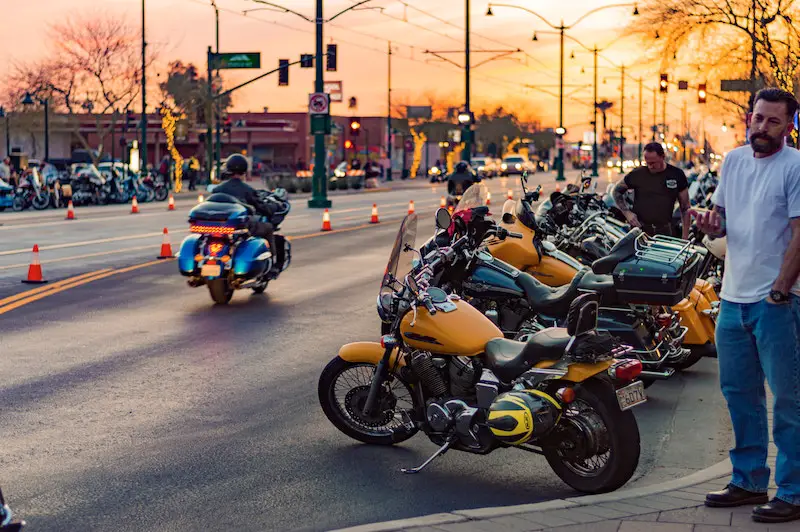
Depending on where you’re going, you have three main options for riding a motorcycle:
- Ride your own bike
- Rent or borrow a motorcycle
- Participate in a guided motorcycle tour
Most of you will be riding your own motorcycle on a local, multi-day adventure. This is the most cost-effective way of going motorcycle touring.
With just basic motorcycle touring gear, any bike can be used for a road trip. There’s no need to have an expensive touring motorcycle , whatever you have in the garage will do just fine.
Renting a motorcycle is another option if you’re traveling to a faraway destination. While not everywhere has motorcycle rentals available, many destinations have one or two rental locations.
Renting gives you the option to explore somewhere that isn’t close to home. The downside to renting a motorbike is that it’s cost prohibitive and not a budget style of travel. However, for shorter trips a motorcycle rental can be a great way to explore somewhere new.
Finally, guided motorcycle tours are the easiest, yet most expensive way of going motorcycle touring. On the plus side, a guided tour means you have to worry about travel arrangements or logistics.
These tours bring you through local areas with an experienced guide. You also get the chance to explore and hangout with other like-minded riders on the tour.
Take Lots of Photos and Videos
Everyone has a smartphone these days. There’s no reason not to be taking photos and videos on a regular basis.
Without these photos and videos it’s going to be impossible to remember everything about your motorcycle tour. While you might remember the highlights, most of the other details will be lost to time.
Photos and videos act as a digital memory and allow you to relive your venture over and over again in the future. It’s also fun to share your experience with your friends and family back home.
Capturing the best moments on your trip will make for a nice memento in the future. You’ll be able to look back and remember all of the great times you had on that specific tour.
After your motorcycle trip, consider printing out the best photos you took and framing them. This provides sentimental value and a great reminder of your experience whenever you walk by the photos.
- Related : The Best Motorcycle Helmet Cameras
Pack Lightly
If you’re motorcycle camping you’re going to need a lot more gear compared to someone that’s staying at hotels or AirBnb’s. Regardless of your travel style, aim to pack as lightly as possible.
With a credit card you can replace anything that breaks or pay for anything you need. As long as you bring the essentials, there’s no need to go overboard with your motorcycle trip packing list.
Unsurprisingly, it becomes a burden if you’re traveling with too much gear. The more you have, the more you have to worry about.
Even if you’re motorcycle camping , bringing the bare essentials is going to make it easier on you, your bike, and even your fuel economy. You’ll need even less gear if you’re staying at hotels or with friends along the way.
Clothes can be washed if you’re planning on traveling for longer than a week. While you don’t need to eat out every meal, it’s easy to buy fresh food and prepare items when you’re on the road.
It’s a good idea to bring twice as much cash and half the clothes you think you’ll need. Anything can be purchased in an emergency.
With that in mind, always be prepared for the elements you’ll be riding in, just don’t overdo it. Strive to be a minimalist and bring only the minimum essentials that you have room for.
Use Weatherproof Bags and Rain Gear
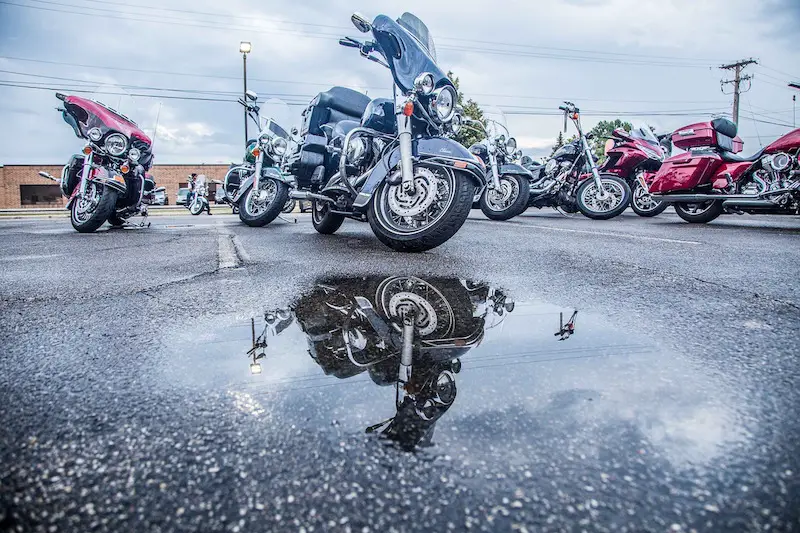
Weatherproof bags are necessary for protecting your packed gear from the rain. Unless you get lucky with the weather, there’s a good chance you’ll end up riding in the rain at some point.
The weather is impossible to protect. Even with a clear forecast, it’s possible that you can get stuck in a downpour.
Without weatherproof luggage, all of your gear and clothing is going to end up soaking wet. That’s why it’s a great idea to use waterproof or weatherproof motorcycle luggage on your tour.
If you’re using soft motorcycle saddlebags , most of them come with a waterproof cover. Alternatively, consider wrapping your gear, clothing, and other luggage using garbage bags or Ziploc bags.
It’s also a good idea to bring along a set of quality motorcycle rain gear . This is gear specifically designed to keep you dry when you get caught in the rain out on your motorcycle.
Always Wear Your Safety Gear
It’s impossible to predict a motorcycle accident . You can never be sure what’s going to happen when you’re out on the bike.
Whenever you’re riding, and especially on a motorcycle trip, it’s important to always be wearing your motorcycle safety gear . This is the gear that will protect you in case of a crash or accident.
Wearing the right protective gear can be the difference between walking away from a crash or ending up in the hospital. With so many options to choose from when it comes to gear, it’s easy to find things that are practical and comfortable.
These days they have specific motorcycle touring jackets , gloves, and boots. This gear is designed to be lightweight, comfortable, and practical for a longer rides while providing you with the protection you need.
You might be thinking it’s okay to skip on safety gear, but never skip on wearing a helmet. Even when you’re traveling in places where helmets aren’t required, you stand a better chance in all scenarios with your helmet on.
Wear Long Sleeves in the Summer
If you don’t want to take our advice about safety gear, you should at least wear long sleeves when you’re riding during the summer. This is going to protect you during an accident or crash. However, long sleeves will protect your skin from the sun and improve your riding experience.
When it’s sunny and warm during the summer, it feels nice to ride in just a T-shirt. The problem is that this isn’t a good idea and can lead to some serious issues.
Riding with just a T-shirt exposes your skin to direct contact with the sun. This is going to result in a nasty sunburn, even after just an hour of exposure.
Without any protection from the sun, you’re more likely to get dehydrated. Suffering from dehydration on your bike can compromise your ability to safely control and balance your motorcycle.
Wearing a long sleeve shirt will protect your skin from harmful UV rays and getting sunburned. It’s also going to make it less likely for you to become dehydrated or suffer from heat stroke.
Avoid Cotton shirts
Speaking of wearing long sleeve shirts, avoid using cotton materials when you’re out riding. The problem with cotton is that it traps heat close to your body and causes you to over-sweat.
Once you begin sweating in a cotton shirt it starts becoming wet, heavy, and moisture-logged. This isn’t comfortable and a soggy cotton shirt gets pretty gross.
Instead, consider wearing lightweight and moisture-wicking materials when you’re riding during warmer temperatures. These materials, such as polyester, nylon, and merino wool offer a number of different benefits for riders.
Moisture-wicking materials don’t stop heat from being released and help keep your body temperatures at an optimal level. With these materials your body stays dry and maintains its temperature balance. The clothes protect you from the elements while releasing your body heat and sweat.
Bring Your Smartphone or a Small Camera for Photos
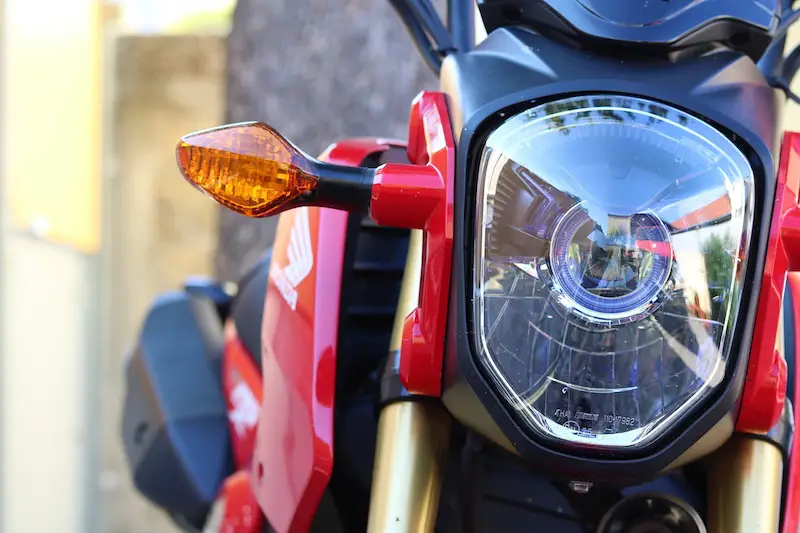
We already mentioned taking photos and videos earlier in this post. This helpful motorcycle touring tip expands on that in a practical way.
Most of you probably already have a smartphone that is capable of taking amazing quality photos and high resolution video. For the most part, this is all you’re going to need for capturing the best parts of your trip.
With how amazing smartphones are, there’s really no need to bring a large camera or dedicated DSLR. These tend to be heavy, bulky, and end up being more trouble than they’re worth.
Instead, your phone should be able to take all of the high-quality photos and videos you could want. They also easily slip into your pocket and offer plenty of other uses when you’re on a motorcycle trip.
If you truly are into photography, consider bringing a small and portable point-and-shoot camera. Modern point-and-shoot cameras are also capable of taking amazing quality photos.
Of course, there’s no one telling you that you can’t bring along your fancy, expensive DSLR camera. Just decide whether or not the hassle of dealing with batteries, tripod, and the stress of traveling with your camera is worth it.
Book Your Accommodation in Advance
It might seem like a blast to pack your bags and head out on a trip without booking anything. I’ll let you know upfront that this is a terrible idea.
Trying to find somewhere to sleep at the end of a long day of motorcycle touring is going to be the last thing you want to do. Instead, it’s easier to book in advance and have a destination in mind.
This makes the trip planning process easier and more streamlined. It also helps you find places for the best rates and before everything gets booked up.
With websites like Booking.com and AirBnb it has never been easier to find and book accommodation. On these platforms you can look at images, read guest reviews, and compare prices to find the best rates.
Once you have set a date and decided where you want to go, book your accommodation. It’s better to get out of the way than to worry about where you’re going to stay on the road.
There’s always the possibility find free campsites last minute and take advantage of motorcycle stealth camping. This is better suited for the experienced traveler or those riding on a tight budget.
Wear Sunglasses
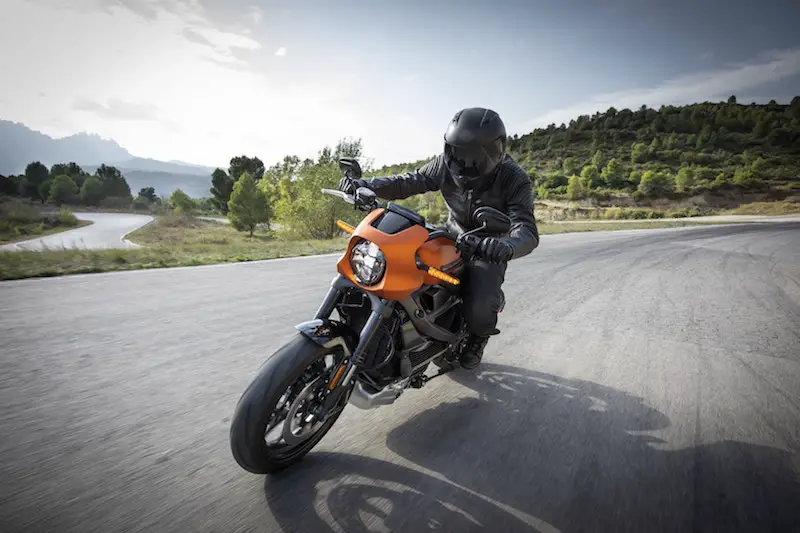
It’s essential to wear eye protection for any motorcycle ride. Sunglasses, along with a full face helmet, are the best way to protect your eyes.
Even if your helmet has a dark or tinted visor, wearing sunglasses is still a great idea. They offer a number of benefits that can improve your riding experience.
For starters, sunglasses help to keep dust, dirt, and road debris out of your eyes. They make it possible to ride with your visor open while keeping your eyes safe and protected.
Sunglasses also protect your eyes from harmful UV rays. Prolonged exposure to the sun can damage your eyes and lead to headaches.
Bring a pair of sunglasses that are comfortable to wear with your helmet. Try them on beforehand to make sure you’re comfortable with wearing them.
Roll Up Your Packed Clothes
Rolling up your clothes is the most efficient way of packing them. When they’re rolled up there are less folds, that would otherwise take up precious storage space.
Another benefit to rolling your clothes is that it reduces wrinkles, since there aren’t any folds. It’s also easier to keep everything organized when it’s rolled up and easily accessible.
This applies to any of your packed clothing, including underwear and jeans. Another helpful tip, lay your socks out instead of rolling them into one another. This can help you save even more space!
Layer the Clothing You’re Wearing
Layering is a great way to save space and adjust to temperature changes. This is the key to surviving any of the weather conditions you expect on your motorcycle trip.
For most trips, you really don’t need to pack that much clothing. One or two sweaters and some practical base layers is all you’ll need.
With layering, you can easily add or remove items of clothing depending on the weather conditions. This way, you’ll always be prepared for whatever the weather decides to throw at you.
Use Google Maps
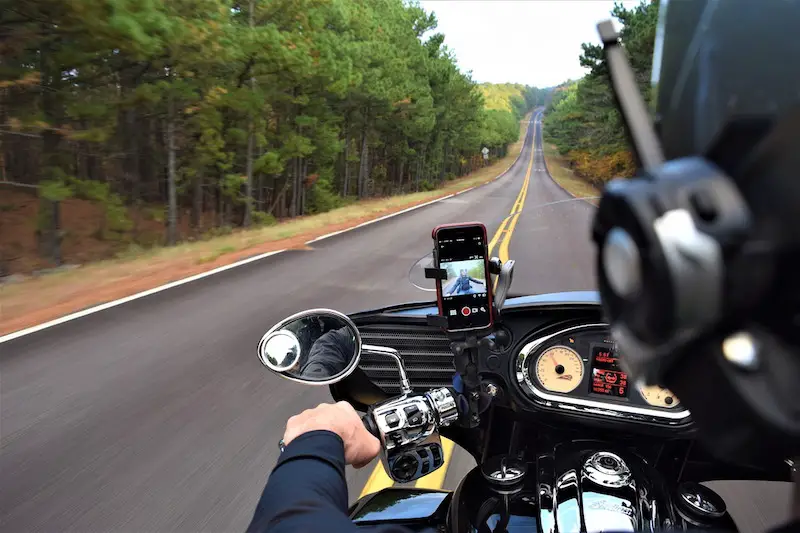
The best motorcycle smartphone app when it comes to touring is Google Maps. Most of you are probably familiar with this app and are already using it on a daily basis.
Google Maps makes it easy to plan your route and find interesting scenic roads along the way. It also gives you updates on traffic, estimated drive time, and can be used to find tourist sites or other specific destinations.
Printed maps are outdated and a hassle to use. While some of you might prefer them, Google Maps is a superior navigation app and the best way to plan your routes.
Another great feature of Google Maps is the ability to easily find local attractions, fuel stops, points of interest, and historical sites. From the app you can read reviews, find out opening hours, and learn more about whatever you’re looking for.
Even if you’re using Google Maps, don’t forget to stop at tourist or visitor centers along your route. You can find interesting local maps at these places. The people working will also be able to help you with local tips and other off-the-beaten-path places for you to check out.
Have a Kit With a Few Small Essentials
It’s a good idea to have a kit with a few small essentials that’s easily accessible. This can be stored in your motorcycle tank bag or at the top of your luggage for quick access.
There are a number of essential items you’ll want to keep in this kit. These items include things like bungee cords, a multi tool, small first aid kit, USB charger, duct tape, and a kickstand puck.
Having these items easily accessible means you’ll be able to quickly find them when you need them. The last thing you want to do is have to unpack everything just to find your USB charger at the bottom of your luggage.
Make Sure Your Bike is Road Ready
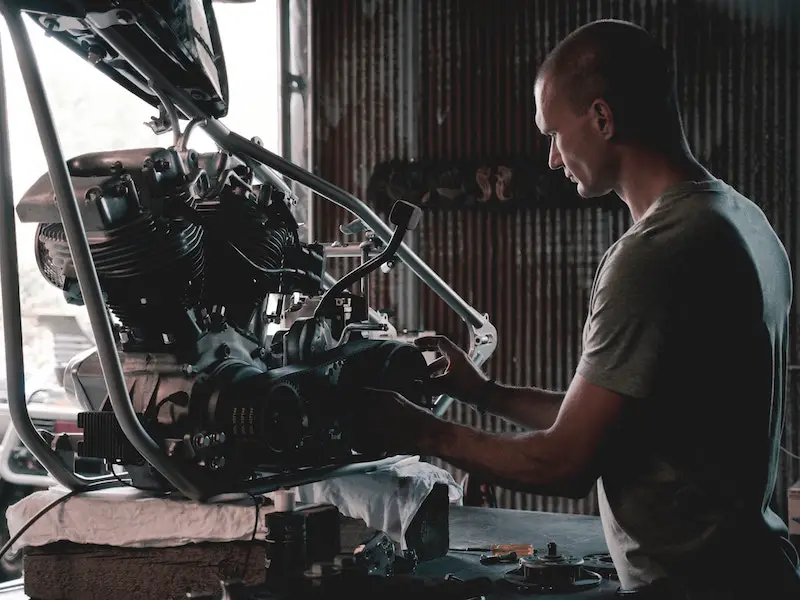
Unless you’re renting a bike, it’s important that your own motorcycle is road ready. Always check the mechanical condition of your bike before heading out on a long trip.
Not only should you be performing basic motorcycle maintenance , it’s a good idea to go into a deep dive that covers all of your motorcycle components. Everything needs to be operating in great condition since you won’t want to deal with any major mechanical issues out on the road.
For starters, check the tire tread, condition, tire pressure, signals, brakes, and lights. Always start your trip with a fresh oil change and perform any fluid or filter changes that are coming up on scheduled maintenance.
Speaking of scheduled maintenance, check whether you have any tune ups or valve adjustment that need to be done. Get these done before leaving on your trip.
It might also be worth it to start out with new tires, especially if you’re going on a longer tour. The bike will handle better with a set of new tires and give you more confidence in your ride.
Finally, consider joining an auto club for peace of mind. These include services such as AAA, CAA, Geico, and even your bank or credit card provider might offer roadside assistance.
Auto clubs are worth the annual fee, especially if you need any roadside assistance or towing. Do some quick research and price compare beforehand to find the right auto club for your needs.
Buy a Motorcycle Seat Cushion
Motorcycle seat cushions can make a world of difference for longer rides. For day trips, it’s not a big deal, but for multi-day adventures having a seat cushion can be beneficial to your experience.
Seat cushions help with ergonomics and reduce pressure points on your legs. This results in a more comfortable, enjoyable ride that lets you gobble up those miles without any pain or suffering.
Depending on your bike, there are a number of different motorcycle seat cushions available to choose from. Check out our post on the best motorcycle seat cushion for some inspiration and to see our top recommendations.
Don’t Forget Earplugs
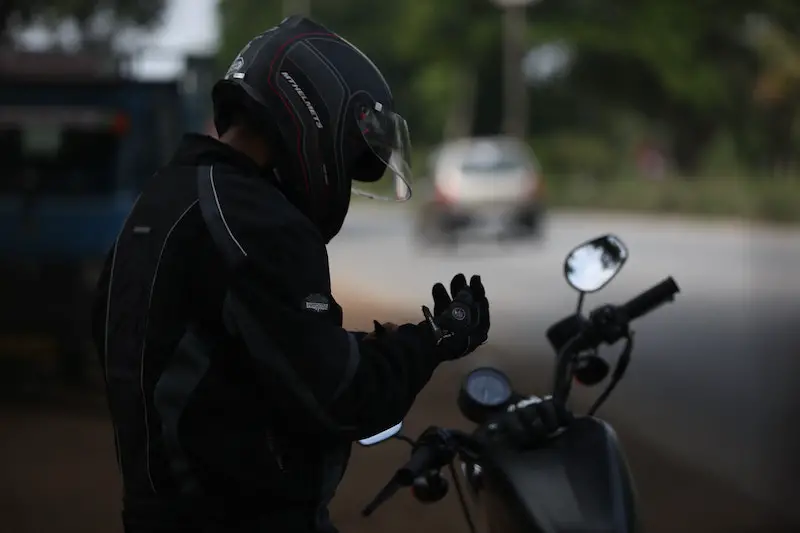
Even if you’re riding with a quality, noise-cancelling helmet, it’s important to bring earplugs as well. The ongoing wind noise can damage your hearing, especially when you’re spending all day on the bike.
There are studies that show your hearing is especially susceptible to damage at highway speeds on the motorcycle. To avoid getting tinnitus or dealing with permanent damage, ear plugs are an obvious choice.
Believe it or not, earplugs can actually enhance your riding experience. You’ll be able to hear your motorcycle better and, if you’re using a motorcycle headset, they make it easier to hear your music.
We put together a helpful post on the best motorcycle earplugs . Feel free to check it out for some inspiration as well as for our top recommendations.
Leave a Reply Cancel reply
Your email address will not be published. Required fields are marked *
Latest Posts
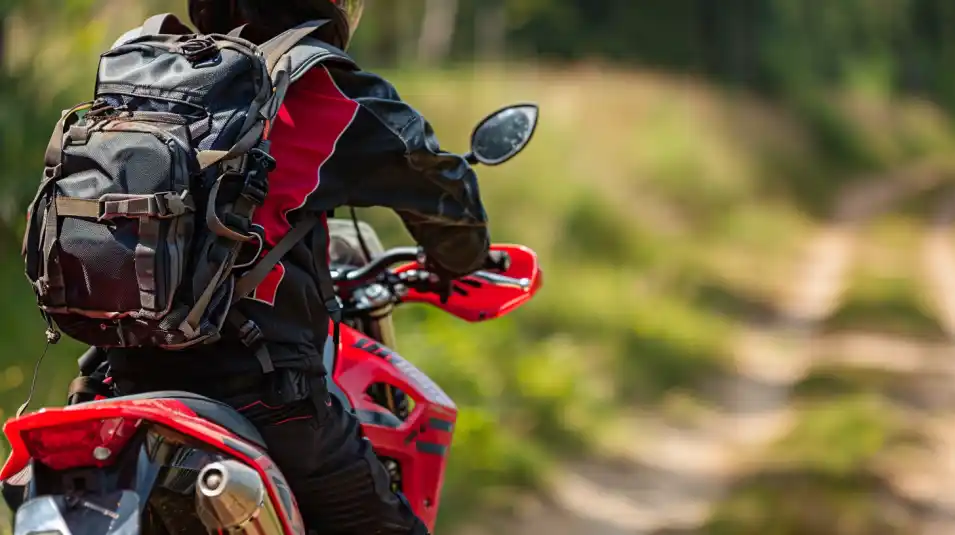
4 Best Hydration Backpacks for Motorcycle Riding
Staying hydrated is crucial for safe and enjoyable motorcycle rides, especially during the scorching summer heat. Dehydration causes fatigue, muscle cramps, and weakness, making it harder to control your motorcycle effectively. Kriega Hydro 2 Hydration Backpack Silver HYRUC2-S USWE Moto Hydro 12L Hydration Pack with 3.0L/ 100oz Water Bladder, a High End, Bounce Free Backpack…
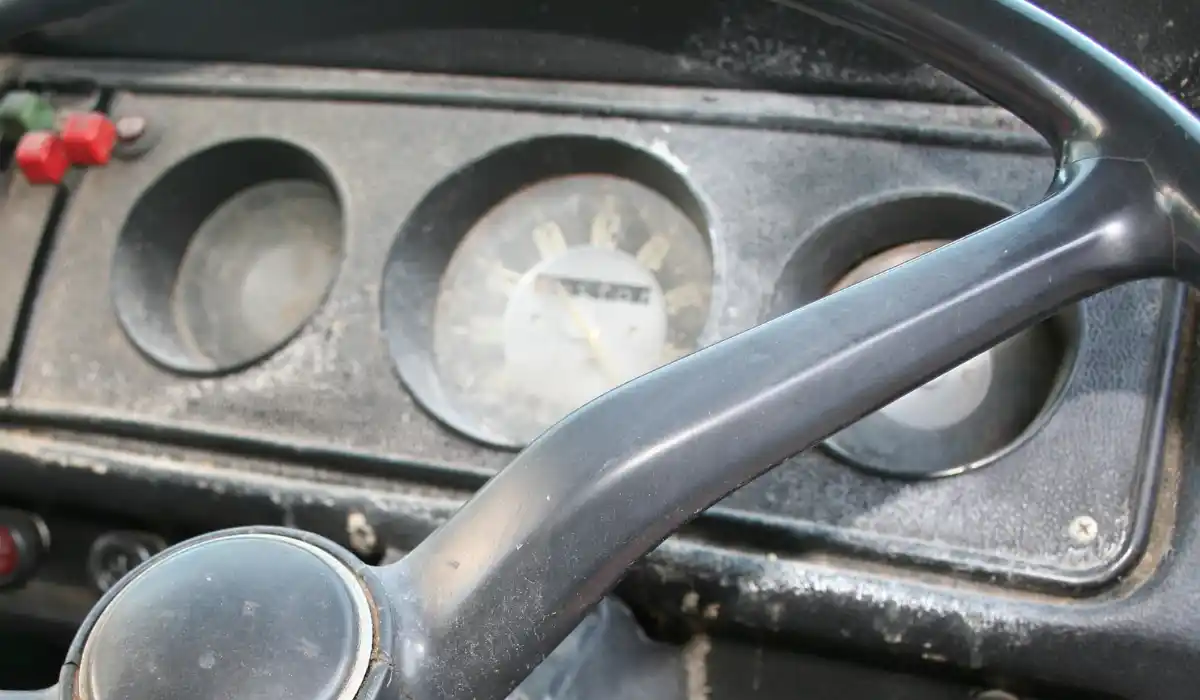

How to Clean Foggy Speedometer Glass: A Step-by-Step Guide
Has your speedometer glass developed an annoying foggy or hazy film over time? Restoring clarity to the glass not only improves visibility while driving, but makes your dashboard look cleaner too. With some patience and the proper polishing technique, you can safely remove foggy speedometer glass without damaging it. Invisible Glass 92084 22-Ounce Clear Plastic…
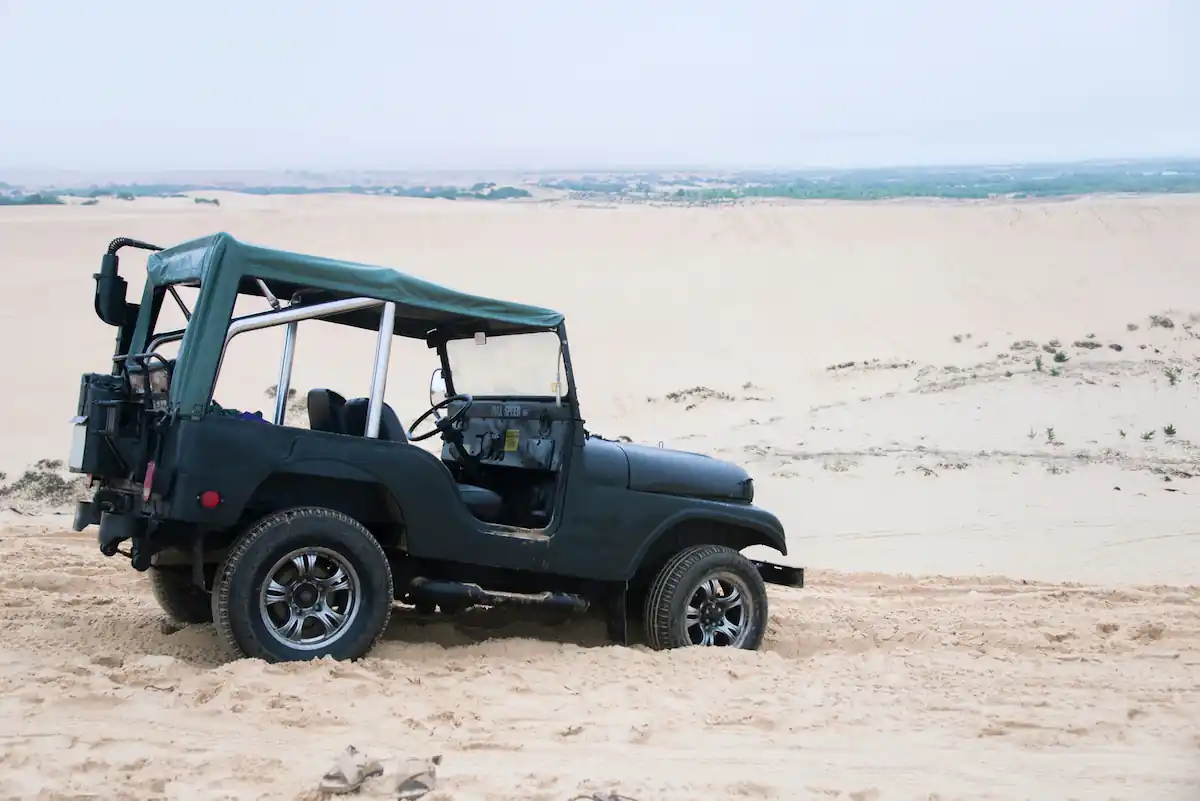
How to Clean Jeep Soft Top Windows
So you’ve got a beloved Jeep with soft top windows that could use some TLC. Don’t sweat it! With the right techniques and products, you can get those windows looking crystal clear again. In this guide, we’ll walk through everything you need to know to clean Jeep soft top windows the proper way. You’ll be…
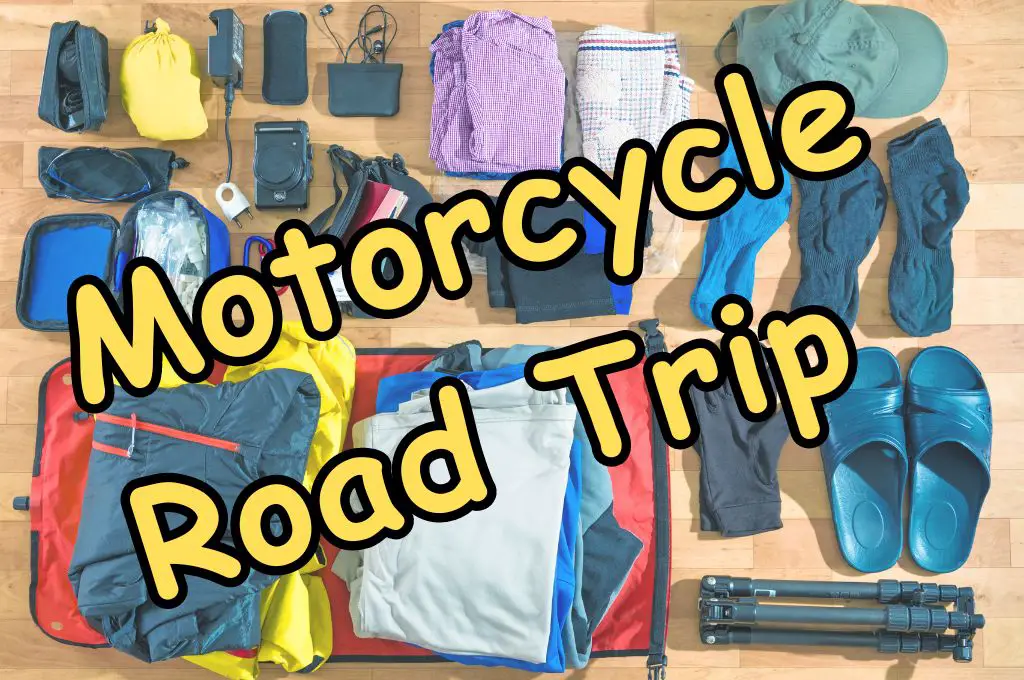
Motorcycle Road Trip Packing: 20 Things You Might Not Think To Pack
By lynnette, harley davidson , luggage , packing tips , travel necessities.
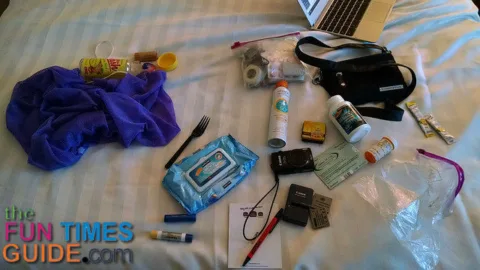
I’m a minimalist when it comes to packing for a motorcycle road trip.
I only want to take the bare necessities… and a few things that make traveling by motorcycle even better/easier.
Of all the items we take on long-distance motorcycle trips, these are the ones that I think most people wouldn’t think of.
Perhaps you’ll find them helpful and worth packing as well…
#1 – A Mesh Laundry Bag
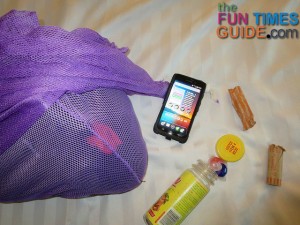
You don’t want to use a traditional laundry bag… because it traps air inside making it bulky and difficult to pack around. A mesh laundry bag is filled with holes, so it’s easily repositionable and squishable to fit in any space within your luggage, saddlebag, tour pack, etc. Not to mention it’s less likely to hold onto odors. Still, it can be tossed into the wash whenever it lacks that “clean fresh scent.”
TIP: The larger the laundry bag, the better. We have this one — it’s 24×36.
#2 – Rolls Of Quarters

For laundry and vending machines. In the past, we’ve checked into the hotel so late after a full day of riding that vending machine snacks were our only meal. One time we didn’t have any quarters, so we didn’t have any meal (we were out in the boonies).
TIP: I always stop by the bank the day before our trip. If they give you a roll of quarters in the clear plastic wrapper, ask for a tubular paper wrapper instead. (They’ll give ’em to you for free at any time.) The reason? Because you want to “collect” quarters the entire time you’re on your motorcycle trip to ensure that you’ll always have plenty. Since you’ll be adding them in the same coin wrapper, you need paper (which is reusable, with ends that can be folded down), not plastic (which is a single-use wrapper). BONUS TIP: A good place to get quarters is at self-serve car washes. You can usually get up to $20 worth at a time!
#3 – Laundry Detergent Pods (or Laundry Detergent Sheets)
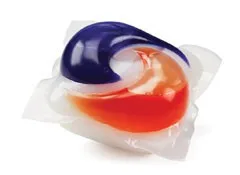
I use Kirkland (from Costco) or Tide laundry detergent pods . They both work really well, and they leave your clothes smelling fresh & clean. The laundry detergent sheets are easier to pack, but I’m not sure they clean as well.
TIP: On our last 5-1/2 week (10,000-mile) motorcycle road trip, I did laundry twice (5 medium-sized loads each time). That’s $15 worth of quarters at $1.50 per load and 10 laundry detergent pods total (which I packed in a non-crushable Mrs. Dash plastic container to last the entire trip, but I might just put ’em in a freezer-type zippered plastic bag next time because I’ve found that they’re pretty durable). Plus, $5 worth of quarters for the dryer at $1 per load. (I air-dry some things and put 2 loads in the dryer sometimes.) I do so much laundry in hotels that I bought one of these 8 ft. small & compact travel clotheslines . They’re great because you don’t need clothespins! (Or you could use bread bag tags.)
#4 – Wet Wipes
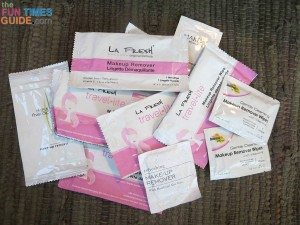
To wipe down TV remotes before using them in hotels, wipe hands after eating or doing bike repairs, wipe motorcycle boots clean after riding, use as toilet paper on the road, etc. Think I’m kidding about the hotel TV remotes? I’m not. Hotel remotes are dirty ! (Here’s more proof .) Some people even go so far as to put the hotel remote in a zippered plastic bag or to slip the complementary shower cap over the hotel remote before touching the hotel remote control!
TIP: I buy flushable wipes because they’re safe for most septic systems. My favorite: Kirkland flushable wipes from Costco. I’ve noticed they also sell travel-size packets of flushable wet wipes in the “travel health & beauty products” aisle at stores like Target and Walmart. However, my absolute best tip is to save all of those individual makeup remover packets that hotels leave out for you! Pack a few of them on the bike (as disposable hand towels after bike repairs, etc.) and a few in your suitcase (so you’ll have them when you arrive at a new hotel room — in case they don’t have the freebies there, for the reasons mentioned above).
#5 – Ibuprofen

A big bottle of fast-acting liquid gels . (Yes, they really do work fast!) I usually buy the Kirkland brand at Costco when they go on sale, but all brands work the same. As seen in the photo, I like to replace the child-proof cap with a flip-top from a bottle of vitamins. It’s just quicker and easier to access that way.
TIP: The maximum dosage for adults is 800 milligrams per dose or 3200 mg per day (4 maximum doses).
#6 – Tan Towels
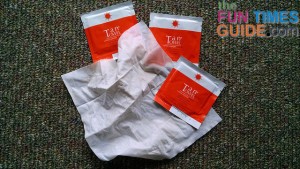
Only if you’re semi-vain like me and prefer that your face, arms, and legs look evenly tanned after riding the motorcycle several sunny days in a row. You know… to get rid of raccoon eyes from wearing sunglasses so long, a white chin strap mark from wearing a helmet, white wrists after wearing motorcycle gloves, sleeve marks on the arms, even pale feet and ankles that have spent too many days inside boots (if you’ll be wearing sandals soon). Keep in mind, we’re talking about long distance motorcycle trips where you’re riding for weeks — even months — at a time!
#7 – Packets Of Shampoo
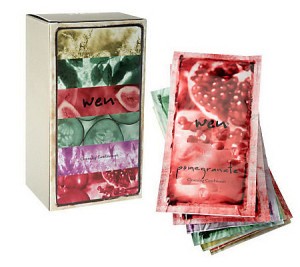
TIP: I usually take 2 WEN travel packets. They’re huge! I only use a fraction of the packet each time, folding over the opened edge and clamping it shut with a small binder clip (see below). On motorcycle road trips, I actually use the hotels’ free shampoo & conditioner most of the time, and only use my own shampoo to bring my hair back to a good condition every few days.
#8 – Flip Flops
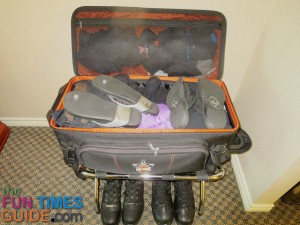
They’re better than sneakers, because they’re easy to slip on, lightweight, and easily packable. They’re also perfect for exploring nearby places whenever you’re not on the bike. Plus, you can wear them in the shower (if camping), walking through the halls (in a hotel) and on the beach — since they can get wet. They take up virtually no space inside your motorcycle luggage.
TIP: Since you’re wearing riding boots most of the time, you’ll really appreciate wearing flip flops whenever you’re walking short distances in your free time. Personally, I like Sanuk yoga mat flip flops and Jim likes Havianas .
#9 – Extra Camera Batteries
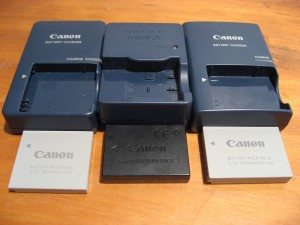
If you haven’t already purchased spare batteries for your point-and-shoot camera, do it now.
TIP: I bought 2 replacement batteries for my Canon Powershot Elph — which I love, Love, LOVE! (Here’s my review of the camera .) I keep the extra batteries in my pocket when we’re on the bike, so I’m never without a backup. (When you snap a lot of photos in a row like I do from the back of the bike — sometimes 600+ each day — it’s not unusual to go through 2 or 3 batteries a day.) Charge ’em all back up each night, and you’re ready for another day of photos shot from a motorcyclist’s point-of-view!
#10 – Gallon Size Zip-Closure Bags
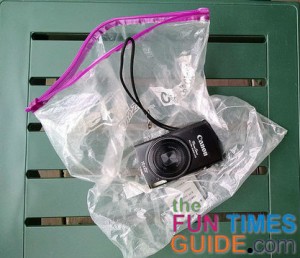
I keep a couple of these on the motorcycle at all times — because you never know when you might poke a hole in one, or you just need an extra waterproof bag for something.
TIP: The #1 reason I recommend keeping one of these zippered plastic bags on your person at all times is: as a rain protector for your digital camera! Not only will it keep your camera (and phone) dry if it starts to sprinkle, the bag (zippered shut and folded over several times) will also keep your camera (and phone) dry in a downpour — until you can safely put it in the tourpack or saddlebag or something. A zippered bag is so small and lightweight… it stuffs away nicely in your pocket. BONUS TIP: Always keep your passport, stamps, and important papers inside a zippered plastic bag. No matter how “protected” your luggage is, things inside will get damp if it happens to rain for a long time. (Learned that the hard way. Lost an entire book of stamps.)
#11 – Durable Plastic Bags
TIP: I keep ’em in the front pocket of our motorcycle luggage. I use them to tote munchies that we’ve purchased along the way, t-shirts we’ve bought, or anything that just needs to make its way from the bike to the hotel room — for better packing or for consumption.
#12 – Travel Sewing Kit
For ages, I’ve been carrying the one that some hotel left for us next to the shampoo and lotion on the counter. I use it much more than I ever thought I would, so I’m considering buying my own travel sewing kit with heavy-duty needles (instead of the flimsy one that almost breaks every time I use it) and a needle threader. The hard part: finding one that’s small enough without a bulky container that could break. This sewing kit with pre-threaded needles seems handy. I also like this one and this one for motorcycle travel.
TIP: You’ll use a sewing kit more than you realize! I used mine twice on our most recent motorcycle road trip — once to sew the suspenders back on Jim’s rainsuit (that he pulled off in frustration when the pant legs stuck to his rubber-soled Harley boots) and once to sew the spaghetti strap on my cami top (the adjustable “slider” is just made of plastic; it got crushed at some point, so the strap wouldn’t stay up anymore). Plus, the buttons and safety pins might even save the day on future motorcycle trips!
#12 – Note Taking Items
I keep a small notepad & pen in the tourpack at all times — because it seems like the right thing to do… and the FlipNote is so darn handy. (It’s a palm-sized notepad & pen with a lightweight metal cover where the pen locks the cover shut .) In addition to taking random notes throughout the trip, I use my Flip Note pad like an old school photographer: to take a picture of a handwritten note on paper then throw it away. ( Example : “These next shots were taken on the XYZ Scenic Byway, July 12th” Or after the fact: “The last few shots were from the XYZ Scenic Byway.”)
TIP: I do use my notepad a lot, but my favorite method of taking notes on the fly — either on the bike or not — is to use an app on my smartphone. I like GTasks (or TickTick ). They’re both minimalist task managers for everyday To Do Lists. I currently have 10 different “lists” stored in my GTasks app, and each list contains anywhere from 2 to 200 individual items or tasks spelled out in words or sentences. It’s a cinch to jot notes and add items to a list on the fly. It syncs with every Google device that you log into.
#13 – Extra Gallon Of Gas
It wasn’t until we actually ran out of gas while riding the beautiful backcountry roads of Colorado a few years ago that we decided to carry extra fuel on board with us at all times. ( I hung out under a shade tree on a road that got very little traffic, while tumbleweeds blew by me, as Jim walked a mile away to get gas.)
TIP: After that experience, we immediately bought a Reda gas can . It’s awesome — fits perfectly in the saddlebag ! It gives us great peace of mind no matter where we are — which is helpful since we usually travel on roads that we’re not familiar with.
#14 – Cargo Net
You never know when you’ll need extra space to tote a box, a bag, or your helmets! A cargo net makes it possible to get just about anything from point A to point B strapped to your bike seat or tour pack.
TIP: We put our cargo net to good use on our most recent trip. Jim had to go find an RV fan for our friend whose generator stopped working in 90-degree temperatures — and he didn’t have a car to go get it himself. Jim stopped at a few different auto parts stores until he found the right one, strapped it down on top of the tour pack, and the RV was fixed (temporarily).
#15 – Compression Stuff Sacks
We use 2 of them to permanently “smush” our rainsuits into a smaller shape, so they’ll more easily fit in our saddlebag (along with a bunch of other stuff). But you can use them to pack anything from microfiber towels to undergarments… socks… t-shirts you buy as souvenirs… or anything else that’s soft.
TIP: A stuff sack is basically a tote bag with a cinch closure on top. A compression stuff sack is a tote bag with a cinch closure on top and 4 side straps that enable you to make the bag and everything in it much smaller. Compression stuff sacks are best for motorcycle packing with limited space. Try to get a thinner gauge material rather than a thicker gauge — because you want a lightweight bag that also compresses. We’ve found that the thin bags have a lot of “give” to them; they stretch without tearing! They come in a multitude of sizes. BONUS TIP: Stuff sacks easily can be strapped to the bike or to your luggage (with motorcycle cargo straps or bungee cords with rubber hooks ) — in the event that you need to free up space in a saddlebag.
#16 – Flavored Water Packets
We always buy bottles of ice cold water at gas stations whenever we’re on long-distance motorcycle trips. I don’t know about you, but I get tired of drinking plain water all the time — especially after several weeks on the road. That’s why I always put a handful of flavored water packets (the ones you add to a bottle of water) in the tour pack of the motorcycle before we head out on a long trip.
TIP: Even if you pack a bunch of ’em, they’re light as air and hardly take up any room at all. And with the wide variety of flavors, you’ll never grow tired of plain ‘ol water again!
#17 – Binder Clips
There are so many great travel uses for these things! Use the regular sized binder clips as a razor cover protector (take it from me… I cut my finger really bad reaching into the toiletry bag one time before we started using binder clips), as a money clip, as a toothpaste tube squeezer, as a keyring, and more — all described here .
TIP: I use small binder clips to keep anything that comes in a bag or packet closed after opening. I also use them to keep hotel curtains closed, to keep maps & papers together, etc.
#18 – Whipped Argan Oil
It’s a moisturizer that is super hydrating and so moisturizing, without feeling greasy. We use ‘regular’ Argan oil in lots of different ways . The whipped Argan oil is my all-time favorite when traveling.
TIP: Whipped Argan oil
#19 Pee Funnel (For The Ladies)
I don’t currently carry a pee funnel with us on the bike, but I’ve considered it . Hey, if it’s good enough for The Hunger Game ‘s Jennifer Lawrence, then it’s good enough for me! By the way, the GoGirl motto is: “Don’t take life sitting down.”
TIP: Before you laugh, I’m not alone here. A pee funnel makes a lot of sense for motorcycle travel.
#20 – Detangler Hair Brush
I’ve found that a detangler brush works much better than a regular hair brush on ponytails that spend a lot of hours blowing in the wind. If your hair extends beyond your motorcycle helmet, then you’ll wonder why you didn’t get one of these sooner!
TIP: I started out using my wet brush as my motorcycle travel brush — because it’s lightweight, smaller, easier to pack than most hair brushes, and I only need it to brush my wet hair after the shower. But I quickly realized that it wimped out on all the tiny knots and tangles I got after wearing a ponytail on the bike for long hours and the bristles “pushed into” the brush itself when packed inside my toiletry bag, so they became even weaker over time. Then I remembered that I had gotten my niece a Tangle Teezer for Christmas and she loves it! So I thought I’d give one a try myself. I like the Tangle Tamer best because of the longer handle (while still a compact size) and the individual bristles don’t budge. They stand firm against tangles, yet they’re soft enough to not cause any pain.
And finally, because I’m a minimalist when packing for a motorcycle road trip, I don’t bring one of these — but I know several people who do…
BONUS #21 – Travel Power Strip
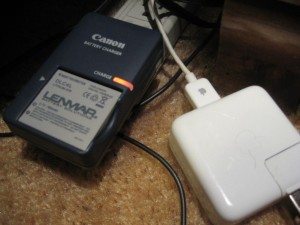
Yep, a multi-outlet power strip is a smart option when you’re staying at hotels — because you seem to never have enough outlets to plug in and charge all of your gadgets. The extension cord itself brings the outlets closer to you, and these days travel power strips also have USB ports built-in. Personally, I like this one because it has a 5ft power cord, 2 AC outlets, 4 USB ports, and surge protection. And I like this one because it’s small and compact with 4 AC outlets and surge protection. Either one would accommodate our needs while traveling.
TIP: You could also carry a portable power source on the bike (like we do), which can double as a power strip in your hotel room too. It doesn’t have the extension cord built-in, but you’ll have plenty of outlets!

As a lifelong traveler, I like to help people find unique ways to do things that will save time & money — so I write about "outside the box" Travel Hacks that most wouldn't think of. I'm SUPER organized and I love to pack! I've lived in 6 different states (Florida, Indiana, New York, Ohio, Tennessee, and Texas) and have visited every other state in the U.S. — except Hawaii. (Can you say bucket list?) I've been on several different cruises, airplanes, and boats in my life and I currently enjoy the outdoors by bicycling, motorcycling, Jeeping, RVing, camping, or just walking my dogs. My favorite "hobby" is riding on the back of our Harley-Davidson Road Glide traveling cross country — which we usually do at least once each year. We even rode from Tennessee to Alaska once! When I'm not on the road, you will find me at the corner of Good News & Fun Times as publisher of The Fun Times Guide (32 fun & helpful websites).
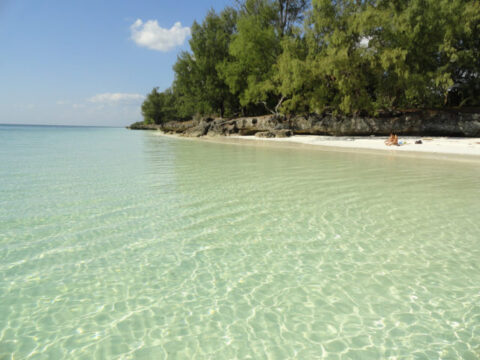
Featured articles
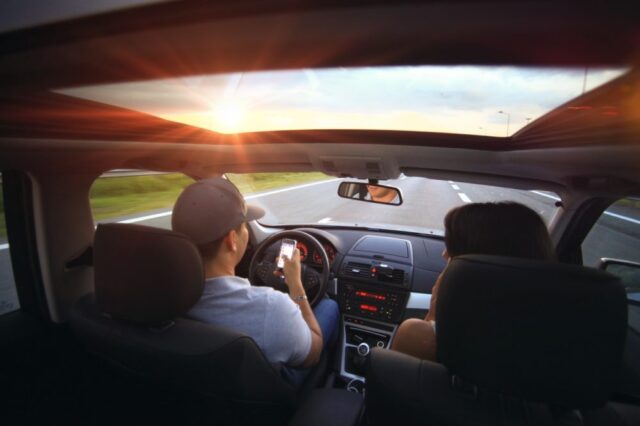
April 2, 2024
Our 2017 Eclipse Trip Was 1,200 Miles And So Worth It! My Tips For Planning A 2024 Eclipse Trip (…And A 2045 Eclipse Trip, Too!)

April 1, 2024
How To Increase Your Odds Of Finding Fairy Stones At Fairy Stone State Park In Virginia
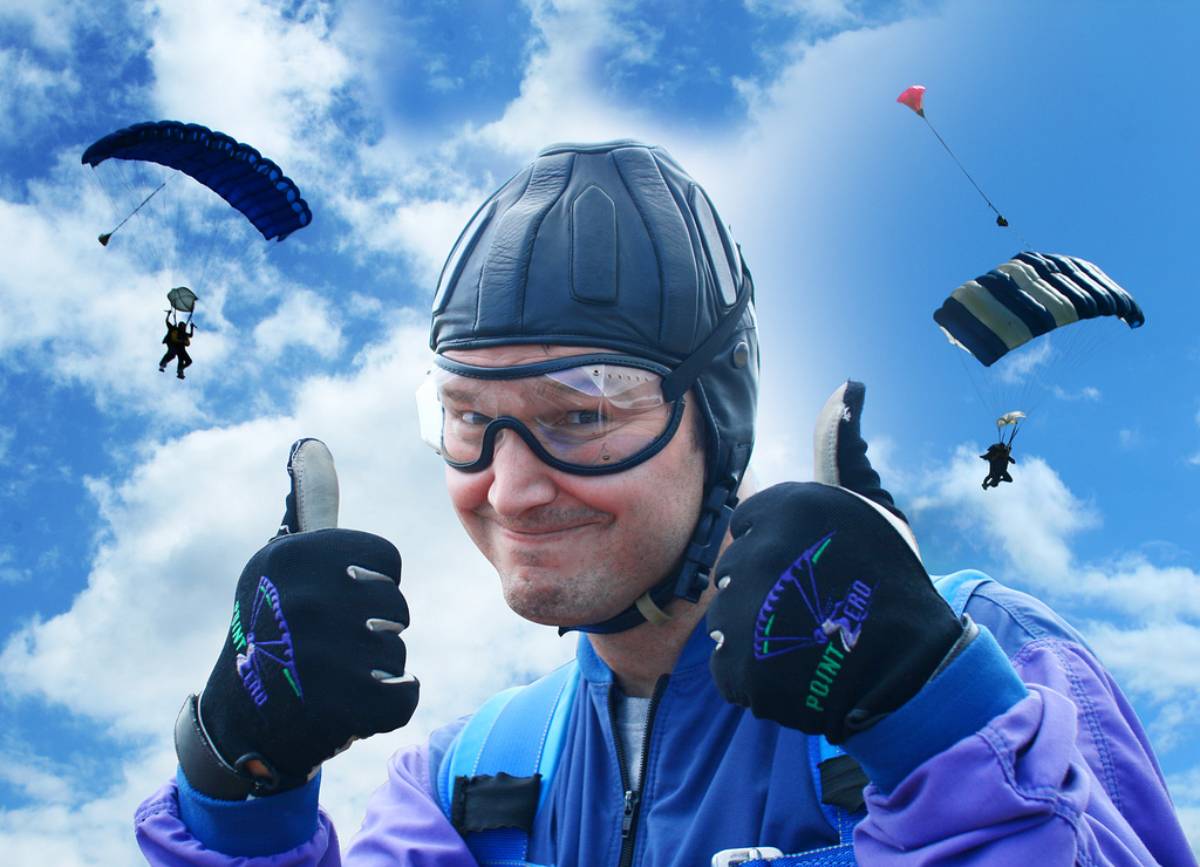
February 4, 2024
My Personal Skydiving Experience – How Tandem Skydiving Has Changed
back to the blog
Motorcycle Road Trip Packing List - What Do I Need?

Jake T · May 27, 2021
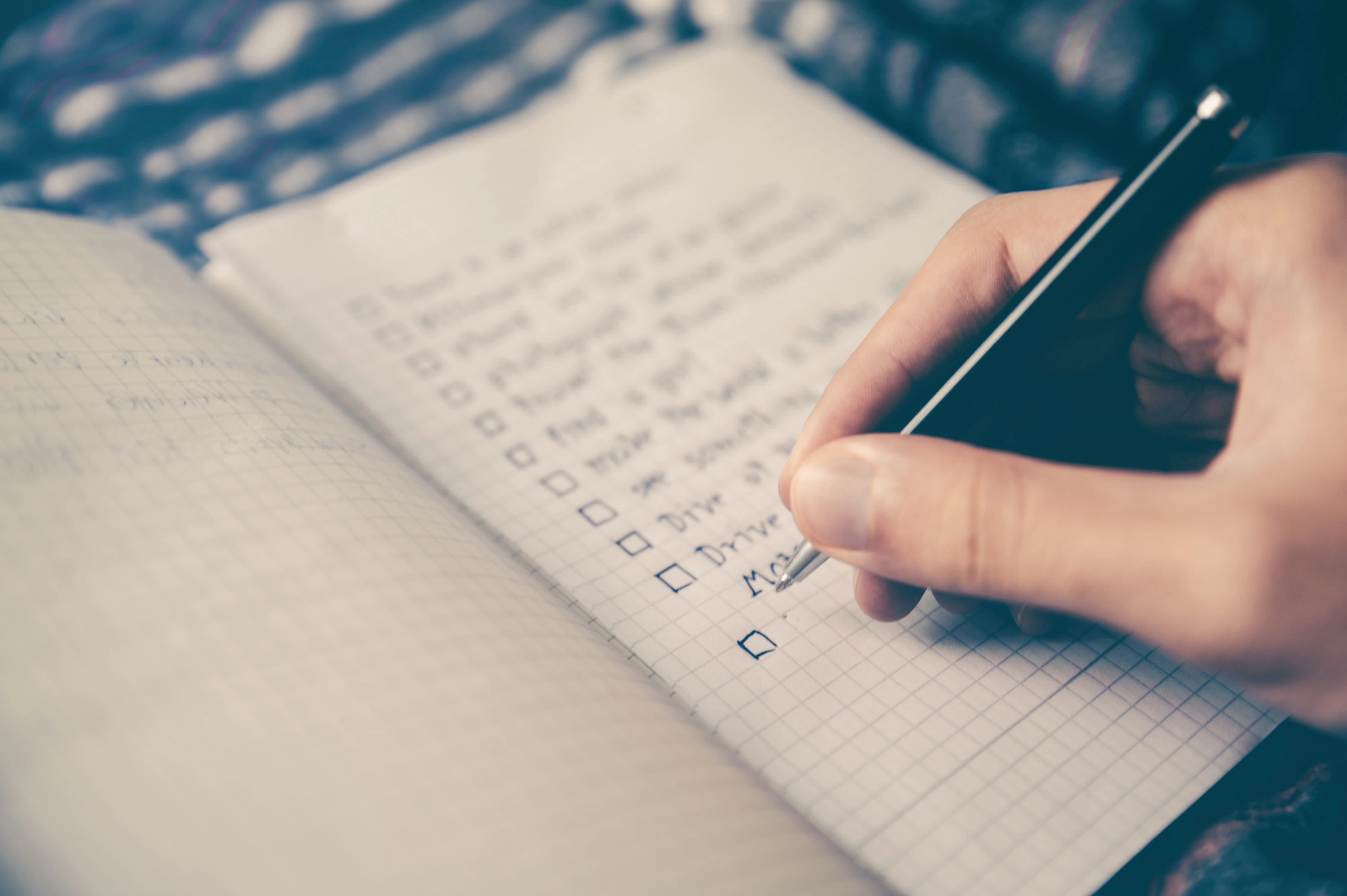
Before setting off on any road trip, it's good practice to run through a checklist to ensure you're not missing any essentials. We've put together a quick list that we feel every rider should take with them, to get the most out of your 2 wheel adventure.
Helmet - Make sure the motorcycle helmet you take is comfortable and fits you well, you’re going to be spending a good few hours in it so don't take one that pinches or pulls on points on your head. Think about the type of roads you’ll be riding, lots of motorways? Make sure your helmet is comfortable and quiet at high speeds.
Best Motorcycle Helmets for Road Trips :
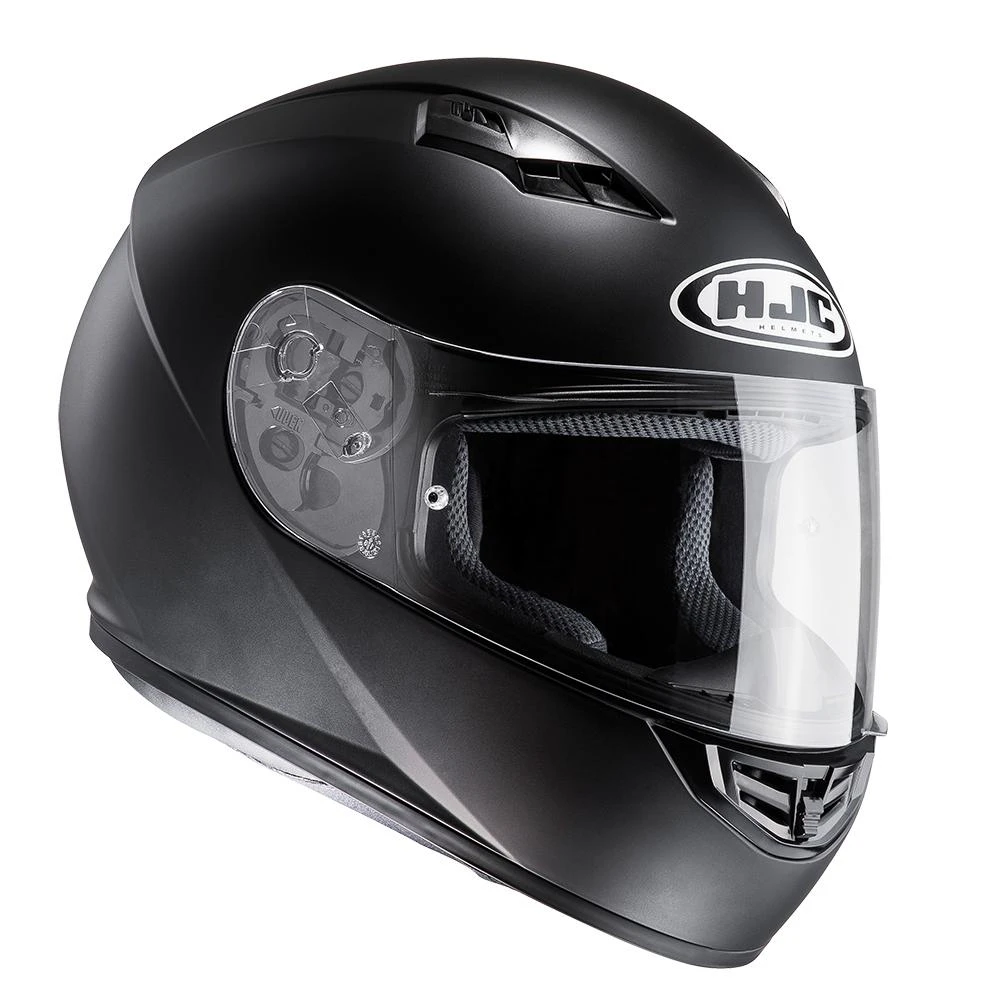
Clear visor - Might be an obvious one but if you’re riding at night then you’re going to want to make sure you can see.
Dark visor - On those brighter days a dark visor can help take the strain off your eyes when riding for long periods, sunglasses would do the job depending on what style of helmet you prefer.
2 Pairs Of Gloves - A decent pair of summer gloves can never go a miss, keeping your hands cool and comfortable for when the temperature rises. Although, with the temperamental weather in the UK it would be wise to pack a pair of warm waterproof gloves as well. We always recommend packing two pairs of gloves, just in case!
Best Motorcycle Gloves for Road Trips:
Summer Gloves
- RST ADVENTURE-X
- RST STUNT III CE MENS GLOVE
Winter Gloves
- RICHA PEAK GLOVES
- ALPINESTARS ANDES V3 DRYSTAR GLOVES
Waterproof Clothing - Now if you’re going to be doing a few miles it's always a good idea to have some decent waterproofs handy in case you get caught in some bad weather. If you don't want to fork out for full waterproof textiles then you can just pack waterproofs or a rain suit that packs down small and will go over the top of your existing riding gear.
Best Waterproof Clothing for Road Trips:
- RST WATERPROOF JACKET
- RST LIGHTWEIGHT WATERPROOF PANT
- RICHA TYPHOON RAIN OVERALL
Waterproof Boots - Having wet feet whilst riding miles on end can be a truly miserable experience, so a good pair of waterproof boots are highly recommended to keep those feet dry and you happy.
Best Waterproof Motorcycle Boots for Road Trips:
- RST AXIOM CE MENS WATERPROOF BOOT
- RST IOM TT CROSBY SUEDE CE MENS WATERPROOF BOOT
- RST RAID CE MENS WATERPROOF BOOT
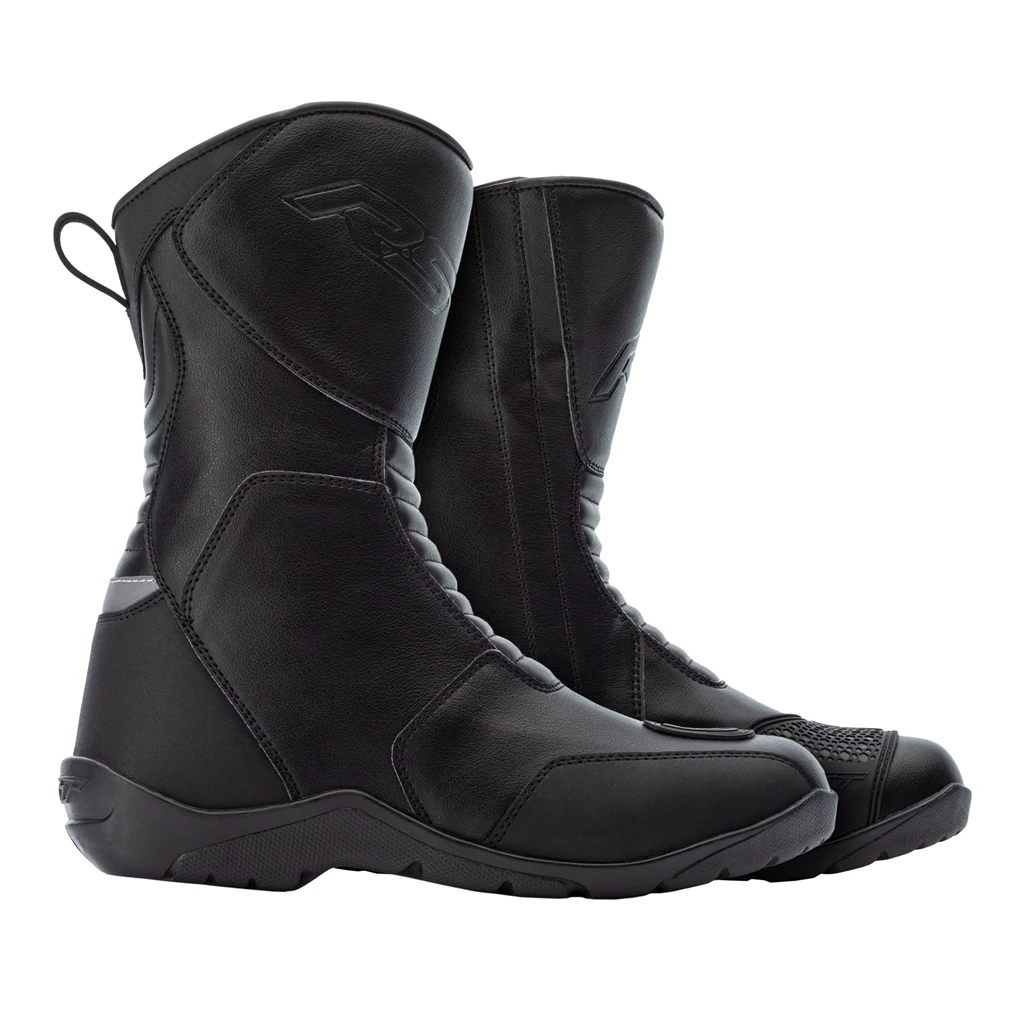
Layer up - Be prepared for all riding conditions by packing a variety of layers that will keep you warm on those colder days and quick to whip off for when you get a little warmer. A windproof jacket/gilet will always come in handy on a long trip.
Best Base Layers for Road Trips:
- RST TECH X COOLMAX MENS SHORT SLEEVE TOP
- RST THERMAL WIND BLOCK MENS PANTS
- RST THERMAL WIND BLOCK MENS GILET
Motorcycle Phone Mount: - If you’re wanting to use your phone to navigate your journey then a phone mount is a must. Make sure it's securely mounted to your handlebars and positioned within an easy glance of your eye line.
TOP TIP : Always make sure you know the number for emergency services and try to mentally note the last village/town name you passed through should you get into any issues.
Portable Charger - Always handy for keeping your devices charged up when on the road.
Tools : - A tool roll containing essential tools for your bike will always be handy to help get you out of any sticky situations you may find yourself in. Sockets, wrench, spanners and Allen keys will probably be the most useful to include.
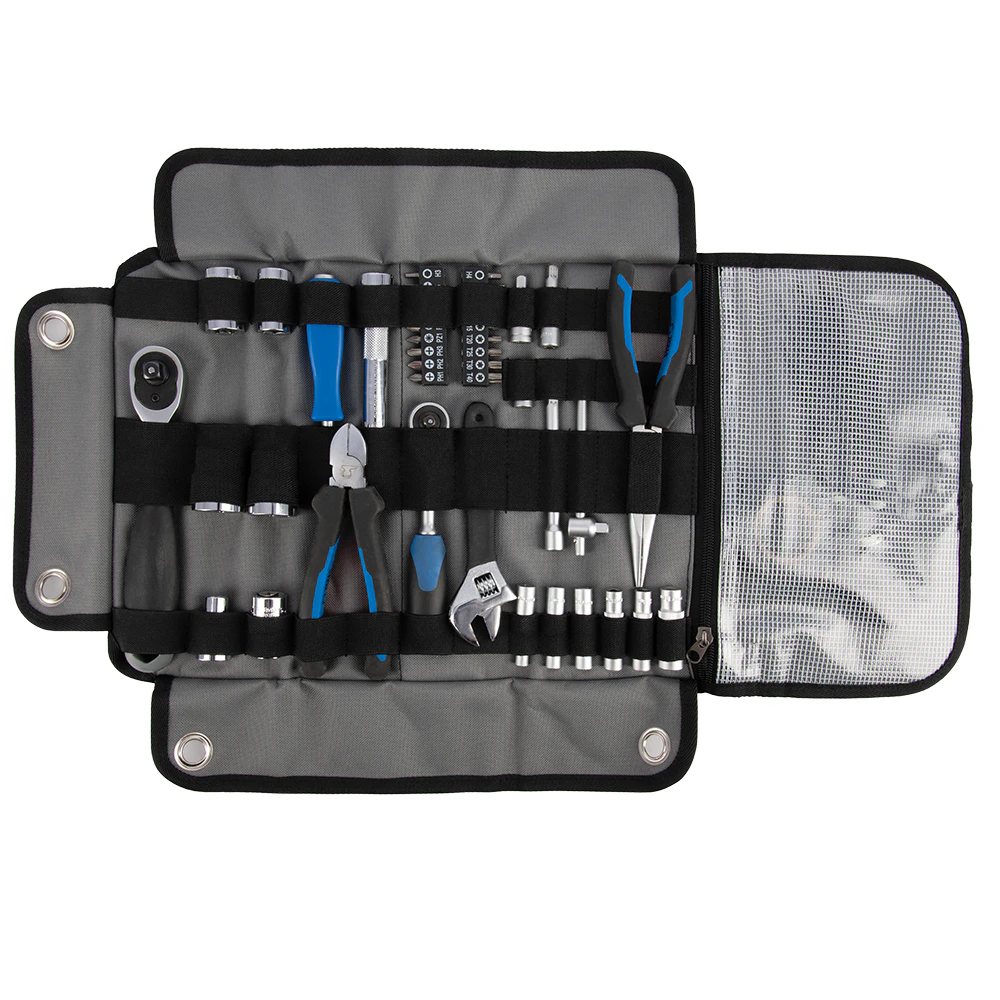
Energy Bars - Vital for those who get snacky. It's always good to pack some emergency snack bars to make sure you’re keeping those energy levels up and stay focussed in between cafe stops.
Gaffer Tape - One of the most useful materials known to man, Gaffer tape can be useful for emergency fixes which will get you by until you’re able to do a proper job. *** Don’t mix it up with duct tape as this could cause damage to your bike and leave a horrible residue when removed.
Carrier Bags - Always useful to keep your gear in overnight to make sure you don't wake up to soggy clothes and if you forget your waterproof boots, pop the bags over your feet and slip them into your boots to help keep them dry.
Luggage - You’ve got to get all that gear packed in safely on your motorcycle so having some good panniers/bags are a must. You’re going to want to make sure they’re strong, sturdy and as with most things….waterproof. It's important that any luggage you take on your bike is fastened down correctly and won’t cause any danger to your ride.
Best Motorcycle Luggage for Road Trips :
- OXFORD HERITAGE BACKPACK
- RICHA DESIGNER TANK BAG
- OXFORD HERITAGE PANNIERS
Visor cleaner - We all come out of the woodwork in the summer and so do the insects, which can quickly get collected on your visor. Keep your vision clear and make sure you’re riding safely by packing some visor cleaner and make sure you wipe down your helmet and visor when you can
We Recommend : MUC-OFF HELMET, VISOR & GOGGLE CLEANING KIT
Chain Lube - Make sure your chain is flowing freely and not clogged with any dirt from the road. It’s good practice to check over your chain before you head off but make sure you pack a Mini Chain Lube Kit for when you’re on the road.
It's also worth double checking you have the correct insurance for the area you’re travelling to and we’d highly recommend taking out breakdown cover if you don't already have it in place All that's left now is to get out on the road and enjoy the adventure. If you don't have a destination already check out some of our favourite routes and our Top Motorcycle Rides in the UK .
This information is given to you as a guide to support you in your choice of licence and RideTo has made every attempt to ensure the accuracy and reliability of the information provided about motorcycle licence and training requirements. However, RideTo cannot guarantee the information is up to date, correct and complete and is therefore provided on an "as is" basis only. RideTo accepts no liability whatsoever for any loss or damage howsoever arising. We recommend that you verify the current licence and training requirements by checking the DVSA website.
- Delivery jobs
- Paying With Klarna
- Terms & Conditions
- Terms of Use
- CBT Training
- Introduction to Motorcycling
- Full Motorcycle Licence
- Gear Conversion
- CBT Renewal
Get the latest on rides, events & more
You need to enable javascript to use bike tests..
Please check that you have JavaScript enabled. There's a useful guide on how to do that here .
- Harley-Davidson
- Royal Enfield
- Adventure & Dual-Sport
- Sport Touring
- Retro/Vintage
- Trikes, Sidecars & Scooters
- Buyers Guides
- New & Cool
- Electronics
- Parts & Accessories
- Books, DVDs & Other
- Latest News
- Tips & Tricks
- Rallies & Clubs
- Learning To Ride
- Other Features
- Favorite Rides
- Midwest U.S.
- Northeast U.S.
- International
- Favorite Rides & Destinations Digital Edition
- Rider Magazine
- Rider Enewsletter
- American Rider
- Woman Rider
- Powersports Business
- Market Research
- Consumer Panel
- Subscriber Login
- Customer Service

20 Most Essential Things You Need on a Motorcycle Tour
Free spirits throw caution to the wind and hope everything works out. City slickers think their smartphone and a credit card will bail them out of whatever trouble may arise. But smart motorcycle travelers, those who have logged enough miles to learn that anything can go wrong, know that common-sense preparation goes a long way toward keeping you on the road when it does. These are the essential things we never leave home without.
1. A Good Map
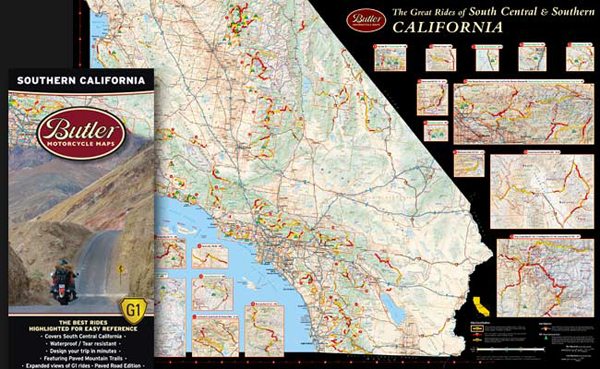
The best motorcycle rides are about the journey rather than the destination. How you get there is more important than where you end up. We love spreading out maps before or during a tour to get the big picture and to identify good roads (the squigglier the line, the better!). Butler Motorcycle Maps provide descriptions and details for the best motorcycling roads in particular states or regions, and they’ve mapped out Backcountry Discovery Routes in several western states. Plus, they’re made of waterproof/tear-resistant material. Read our review of Butler Motorcycle Maps
2. GPS Navigation Unit
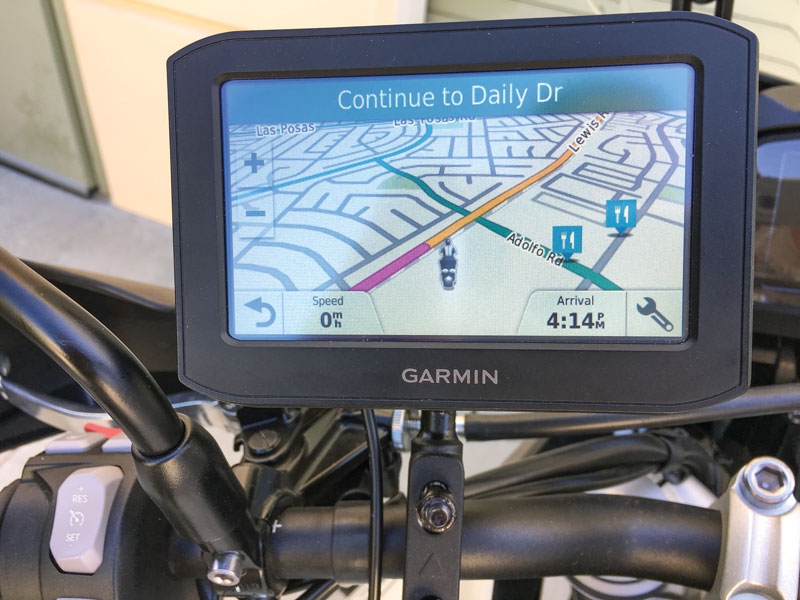
As much as we love maps, you can’t look at them while riding, nor can you program in a ride route. Although smartphones are quickly replacing point-and-shoot cameras and navigation units, there’s no substitute for a dedicated motorcycle-specific GPS, such as the TomTom Rider. It has a rugged, waterproof form factor and its buttons are glove-friendly. The TomTom also offers voice-guided navigation via Bluetooth (a helmet communicator is #3 on our list), map updates and trip-planning software. And when you need to find the nearest gas station or hotel, you can search for one even if you’re out of cellphone range. Read our review of the Garmin zumo 396LMT-S GPS
3. Bluetooth Helmet Communicator
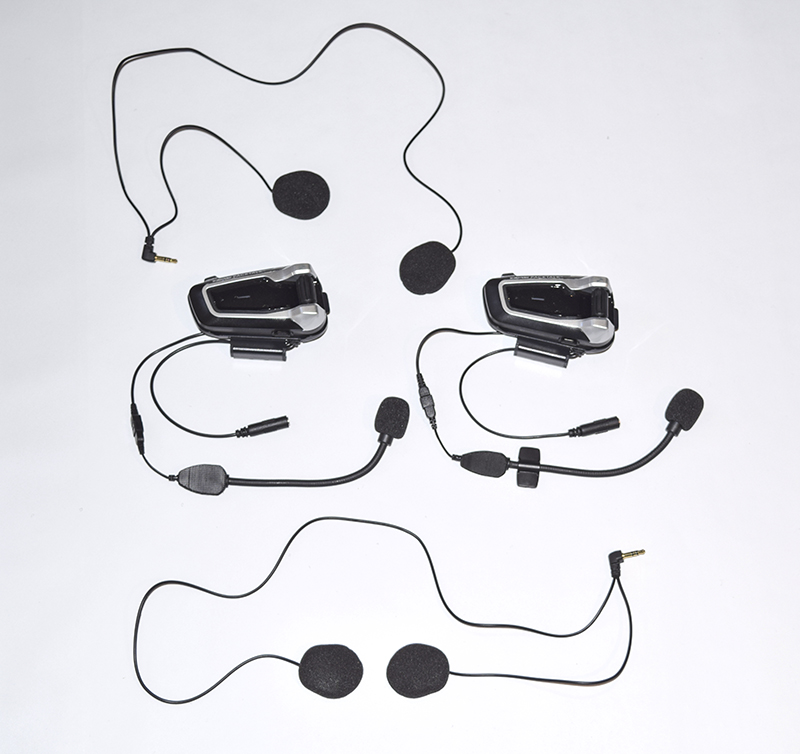
Solitary time inside a helmet, with nothing but the sound of the wind and your engine to soothe you, can be very relaxing. But sometimes its nice to listen to your favorite tunes, to chat with your passenger or fellow rider(s) and to hear GPS navigation commands through helmet speakers. Today’s Bluetooth helmet communicators, such as Cardo’s scala rider Q3, are nothing short of incredible. They pair with multiple devices and transition seamlessly between different functions. We’d advise against taking cellphone calls while riding, and if you want to enjoy some peace-and-quiet, you can always hit the “off” button. Read our review of the Cardo scala rider PackTalk Bluetooth Communicator
4. Emergency Communicator
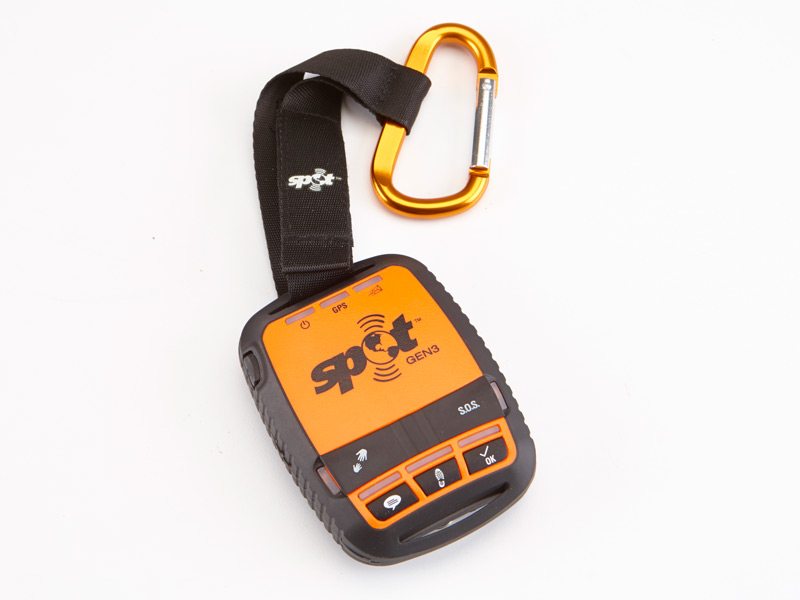
A friend of ours crashed his BMW on a remote highway and got trapped under his bike with an injured leg. Out of cellphone range, he waited overnight for more than 18 hours until someone found him. Situations like that are why we carry the SPOT Gen3 GPS messenger, which communicates with satellites to determine your location anywhere on the globe and send messages to family and friends via text or email. In an emergency, hitting the “SOS” button notifies the GEOS Rescue Coordination Center, initiating a rescue effort by local personnel. Sending customized “I’m OK” messages when riding in far-flung areas provides peace of mind to loved ones, and non-emergency “I need help” messages pinpoint your location. The rugged, weatherproof, pocket-sized Gen3 ($149.99; service plans start at $199.99/year) is easy to use, and we love the optional Google Maps tracking function. Giant Loop’s Tracker Packer firmly attaches the Gen3 device to your pack’s shoulder strap, handlebars, fork tube, arm or other location. Read our review of the SPOT Gen3 Satellite Personal Tracker
5. Motorcycle Towing Service
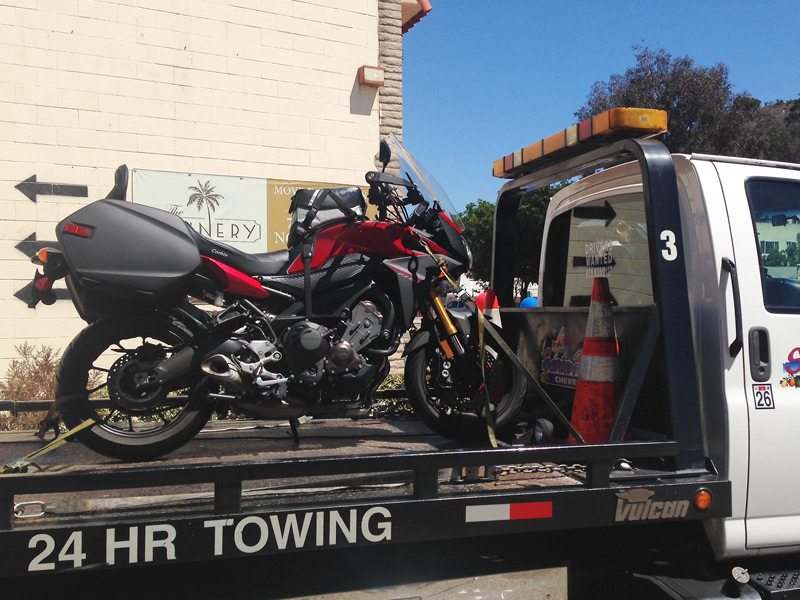
When I foolishly rolled over a curb in our Yamaha FJ-09 long-term test bike and ripped a hole in the oil pan, I was left stranded in a pool of hot, black motor oil. ( Read our long-term reports on the Yamaha FJ-09. ) Even though I was only a few miles from home, I didn’t have access to a truck or trailer. So I pulled out my handy American Motorcyclist Association (AMA) membership card, turned it over and dialed the number of AMA Roadside Assistance, which is one of the many benefits of joining the AMA (roadside assistance is free if you sign up for automatic renewal of the $49 annual dues). Service is friendly and prompt, and it covers up to 35 miles of towing. Furthermore, your membership dues support the AMA’s efforts to protect motorcyclists’ rights—a cause we can all get behind. Learn more about AMA Membership
6. Evacuation Insurance
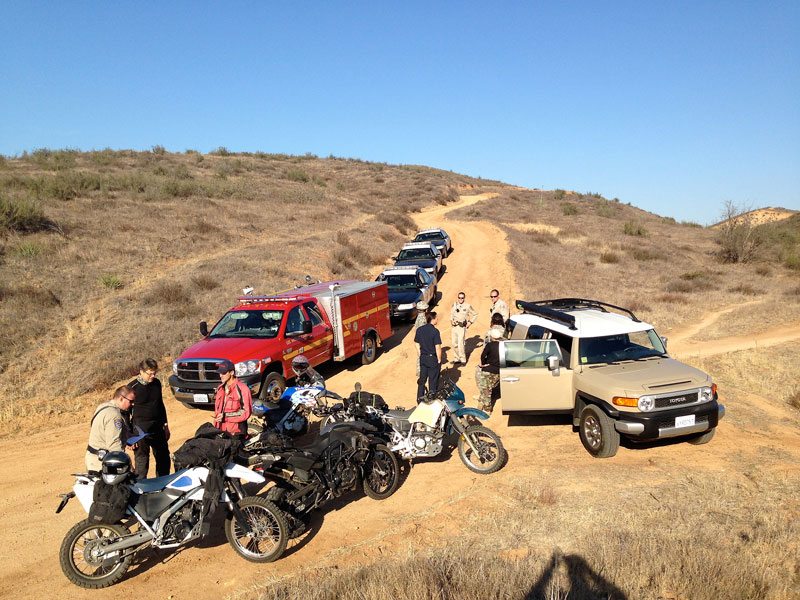
When the excrement really hits the propeller, you may need to be evacuated to the nearest medical facility and, ultimately, back home. Depending on your insurance coverage, you could end up with a very costly transportation bill. Medical evacuation insurance can provide peace of mind for you and your loved ones, and potentially save you a pile of money. A good option is Medjet Assist, an annual membership program that provides domestic and global air-medical transportation and related services. Annual memberships start at $270 for individuals and $395 for families. Medjet Assist’s Motorcycle Transfer Protection Program is a $35 add-on that will cover up to $3,500 to have your motorcycle transported to a dealership or shop of your choice. Learn more about MedJet Assist
7. Flat Repair Kit
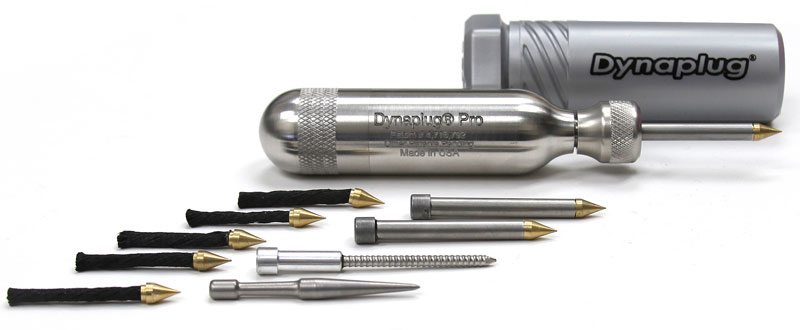
Modern motorcycle tires provide good grip in dry and wet conditions and typically last for thousands of miles. But all tires are vulnerable to cuts and punctures, and a flat can quickly bring your journey to a halt. If your motorcycle runs tubeless tires, a good flat repair kit can get you back on the road in no time. The Dynaplug Pro Tubeless Tire Repair Kit ($59.99 and up) allows you to make an on-the-spot, on-the-wheel repair. The compact, lightweight kit includes the Dynaplug Pro tool, eight tire repair plugs, three insertion tubes, an air stopper, a clearing attachment, a pipe cleaner and a handy polyethylene carrying case. Read our review of the Dynaplug Pro Tubeless Tire Repair Kit
8. Portable Air Compressor
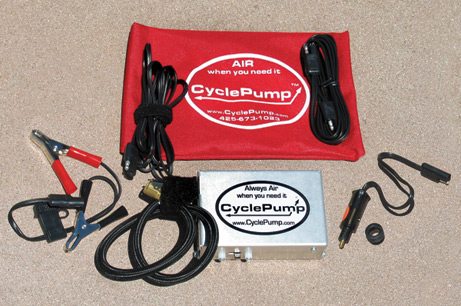
After you fix your flat tire, you’ll need a way to reinflate it. (Or, if you’re an adventure rider, you may need to pump your tires back up after airing-down for off-road riding.) Some flat-repair kits come with a few CO2 cartridges, but depending on the size of your tire, you probably won’t have enough to get inflate it fully for safe operation (especially if some leaks out while trying to secure the adapter to the valve stem). The best way to reinflate your tire is to use a dedicated air compressor that connects to your motorcycle’s battery, such as the Cycle Pump, a tried-and-true 12V compressor that’s ruggedly built and compact enough to store in your motorcycle luggage. Read our review of the Cycle Pump Motorcycle Air Compressor
9. Fuel Siphon
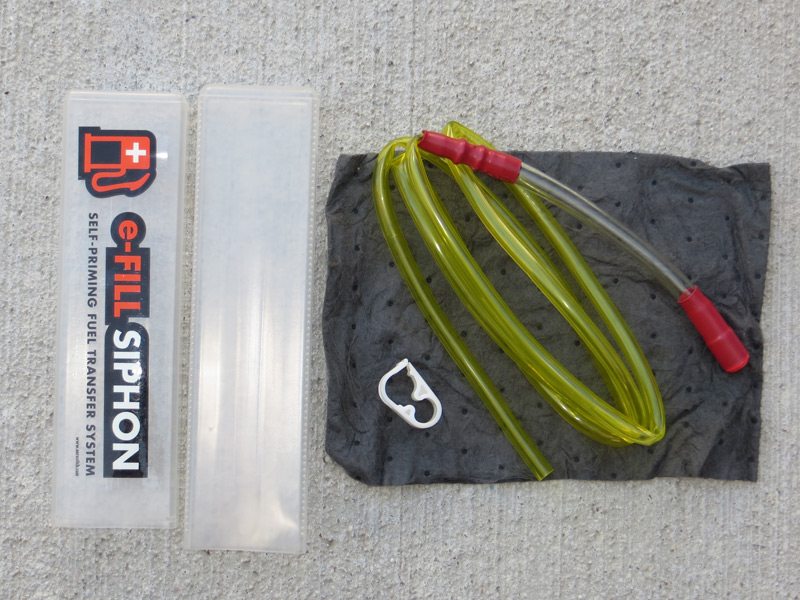
Another misadventure on motorcycle tours, especially if you’re out in the boonies where fuel stops are few and far between, is running out of gas. Some adventure and dual-sport riders carry extra fuel in containers like those from RotopaX , but they require special mounting kits and don’t make sense on cruisers or sport tourers. Another option is Aerostich’s E-Z Fill Siphon ($27), a lightweight (just 4 oz.), easy-to-use fuel transfer system that doesn’t require getting a mouthful of gas. Unroll and unkink the 68-inch siphon hose, insert the self-priming pump end into a non-empty gas tank, put the other end into the 1/8-gallon transferring container and then move the pump up and down a few times to get the fuel flowing. A handy stopper clip maintains flow even in the “off” position, so you can fill and refill the transfer container multiple times with ease. Everything fits inside the transfer container (10.1 × 2.6 × 1.25 inches) and includes a super-soak towel for cleaning up spills. Learn more about the Aerostich EZ Fill Siphon
10. Motorcycle Toolkit
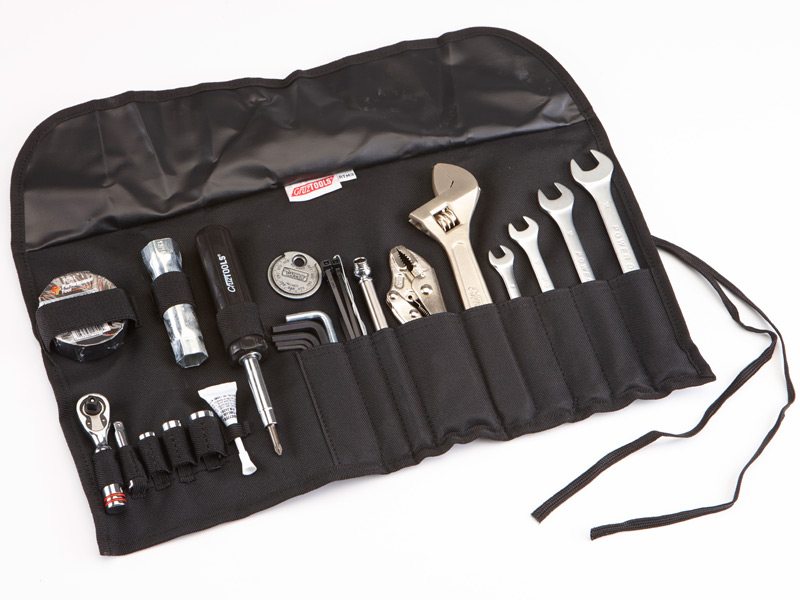
These days, many motorcycles have meager or nonexistent toolkits. On the road you may not be able to do extensive repairs, but you should be able to tighten a loose mirror and adjust your controls or suspension. CruzTOOLS makes specialized tools and toolkits for motorcyclists covering a wide range of applications, from specific brands such as Harley-Davidson and BMW to more universal kits. Two of our favorites are the DMX2 and RoadTech M3. Aimed at dual-sport/off-road riders, the 4.5-pound DMX2 packs essential tools into a durable, two-sided zippered pouch with an extra storage pocket (we added a siphon hose, tow strap and JB Weld), and it comes with a raincover and straps for mounting to an off-road-style front fender. The 3-pound RoadTech M3 is a compact, well-stocked tool roll for metric cruisers, sport tourers, etc. that we carry with us on road tests. Read our review of the CruzTOOLS RoadTech M3 metric motorcycle toolkit
11. Rainsuit
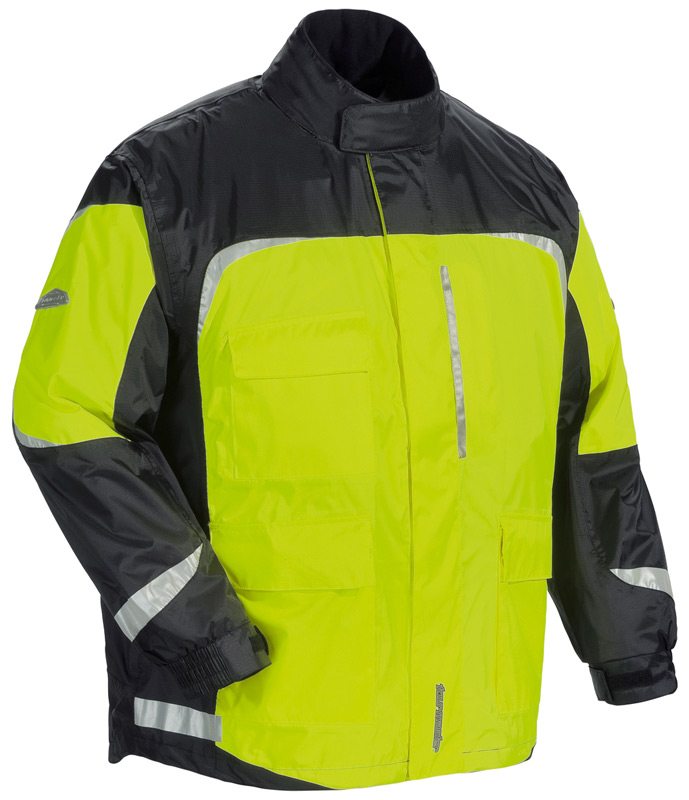
As Rider contributor Jerry Smith wrote in Rainsuits 101: Staying Dry at Speed in the November 2015 issue, “Weather forecasting isn’t an exact science, and you get caught in the rain even during the summer. If you keep riding through the fall and winter, you’ll learn what real rain is. You might have ridden through short showers, but when you get caught in a sudden storm, or ride all day in a cold, steady drizzle, you’ll see how valuable a good rainsuit is.” It’s one thing to be wet and it’s another thing to be cold, but being cold and wet is the surest way to be miserable on a motorcycle tour, and it could lead to hypothermia, a potentially fatal condition. Pack a rainsuit whenever you ride and you’ll always be ready for the unexpected. We recommend a two-piece rainsuit that can be packed easily in your motorcycle luggage, in a bright, high-viz color so you’ll stick out like a sore thumb when visibility is poor. Waterproof gloves (#12) will keep your mitts dry and waterproof boots or slip-on rain boot covers will do the same for your feet. Read Rainsuits 101: Staying Dry at Speed
12. Waterproof Gloves
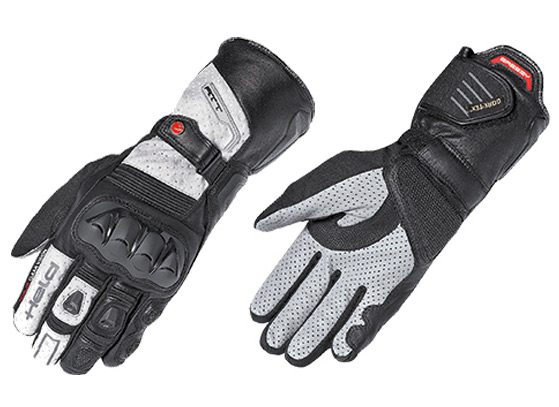
In addition to a rainsuit, we always pack an extra pair of gloves. You never know when you might lose one over the edge of a scenic vista on a windy day (yes, it’s happened to us) or they’ll get stolen off your bike at a gas station (yep, that happened too). We often bring a thinner, perforated pair of gloves for hot weather and an insulated, waterproof pair of gloves for when the weather turns for the worse. Which is why we like the two-gloves-in-one design of Held’s Air n Dry Gloves, where the lower compartment is like a classic summer glove and the upper compartment is lightly insulated and has a waterproof Gore-Tex liner. Even though they serve dual purposes, we still suggest bringing a back-up pair of gloves. Read our review of Held’s Air n Dry Gloves
13. Flip-up/Modular Helmet
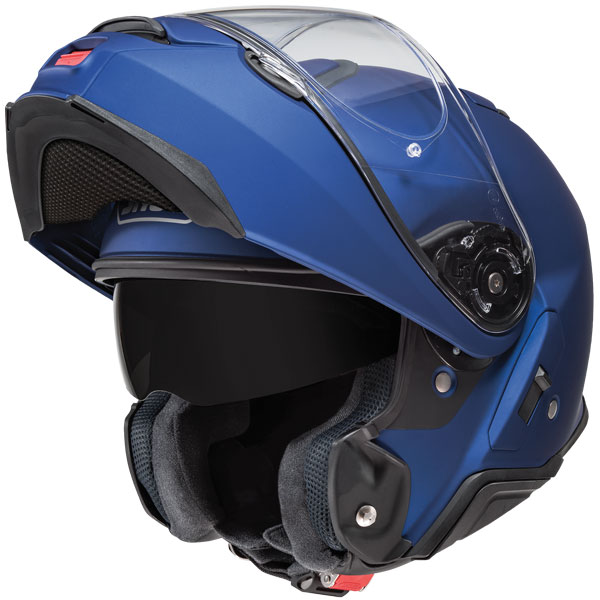
We always wear full-coverage helmets because they provide total protection for the head and face. When out on a tour where you’ll be stopping often to take photos, refuel or grab a quick snack or drink, you can’t beat the convenience of a flip-up or modular helmet. Raising the chinbar exposes your face, which makes it easy to talk to friends, to the nice lady at the tollbooth or to the old timer who’s giving you roundabout directions. Dab on sunblock (#15 on our list), drink water (#16), eat an energy bar or blow your nose without having to remove your helmet. Just remember, most flip-up helmets are not designed to have the chin bar raised when riding. One of our favorite flip-up helmets is the Shoei Neotec II, which is light, quiet, comfortable and has a drop-down sunshield. Read our review of the Shoei Neotec II Modular Helmet
14. Bike- or Helmet-Mounted Video Camera
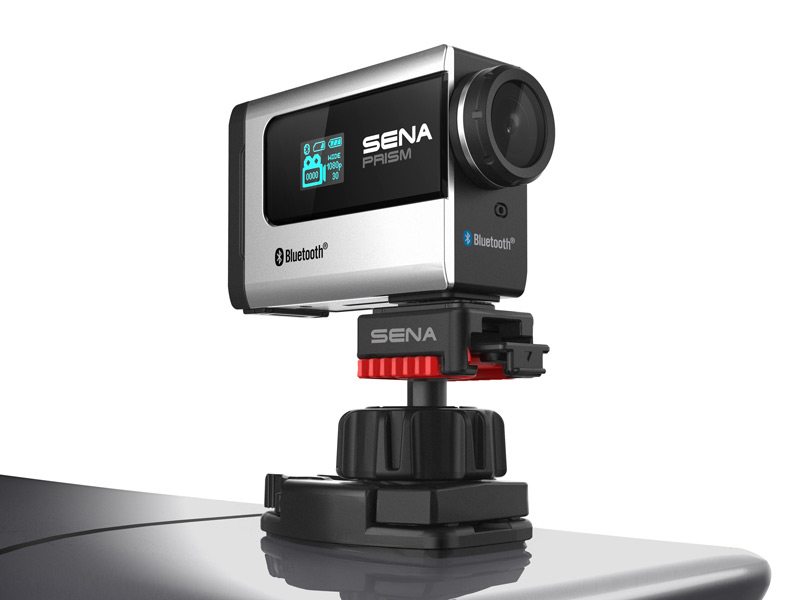
Capturing photos and video of your trip can be a great way to share the experience with family and friends, and to relive the experience months or years later. Over the past few years the market for bike- and helmet-mounted action cameras has exploded, with small, lightweight cameras capable of taking high-resolution photos and high-definition video. Sena’s Prism Action Camera can be paired with a Sena (or other) Bluetooth communicator (#3 on our list) for recording live intercom audio with the built-in mic while capturing video. It comes with many mounting options and is available with a handlebar remote that controls all camera functions with a jog wheel. Read our review of the Sena Prism Action Camera and Handlebar Remote
15. Sunblock
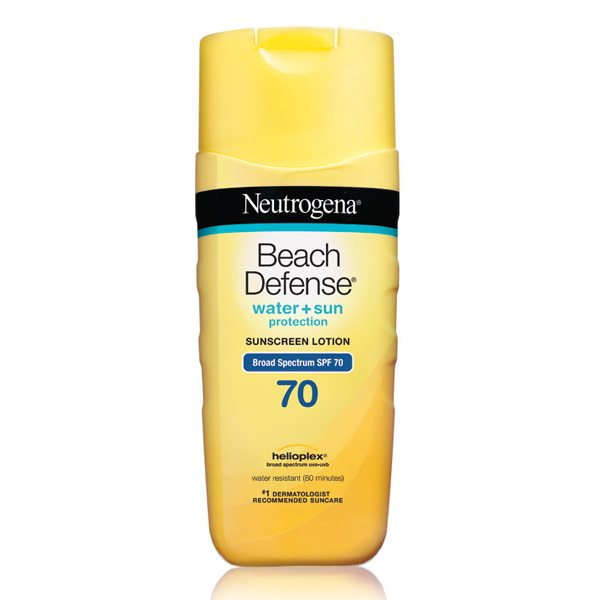
If you’re like us and adhere to ATTGATT (All The Gear, All The Time), not much of your skin will be exposed to sun and wind during a ride. The most common exposed area is the neck, which can become sunburned easily during a long ride. But when you stop to take breaks and remove your helmet and jacket, especially at a high-elevation overlook where you’ll want to stretch out and relax, your face and arms can get crispy in no time. Slather on a layer of sunblock in the morning before your ride and reapply as necessary. Dermatologists recommend using a sunscreen with an SPF of at least 30, which blocks 97 percent of the sun’s rays. And it’s a good idea to use sunscreen that is water- and sweat-resistant. We like Neutrogena Beach Defense because it has a pleasant smell and won’t sting if it gets into your eyes. Learn more about Neutrogena Beach Defense Sunscreen
16. Hydration Bladder or Backpack
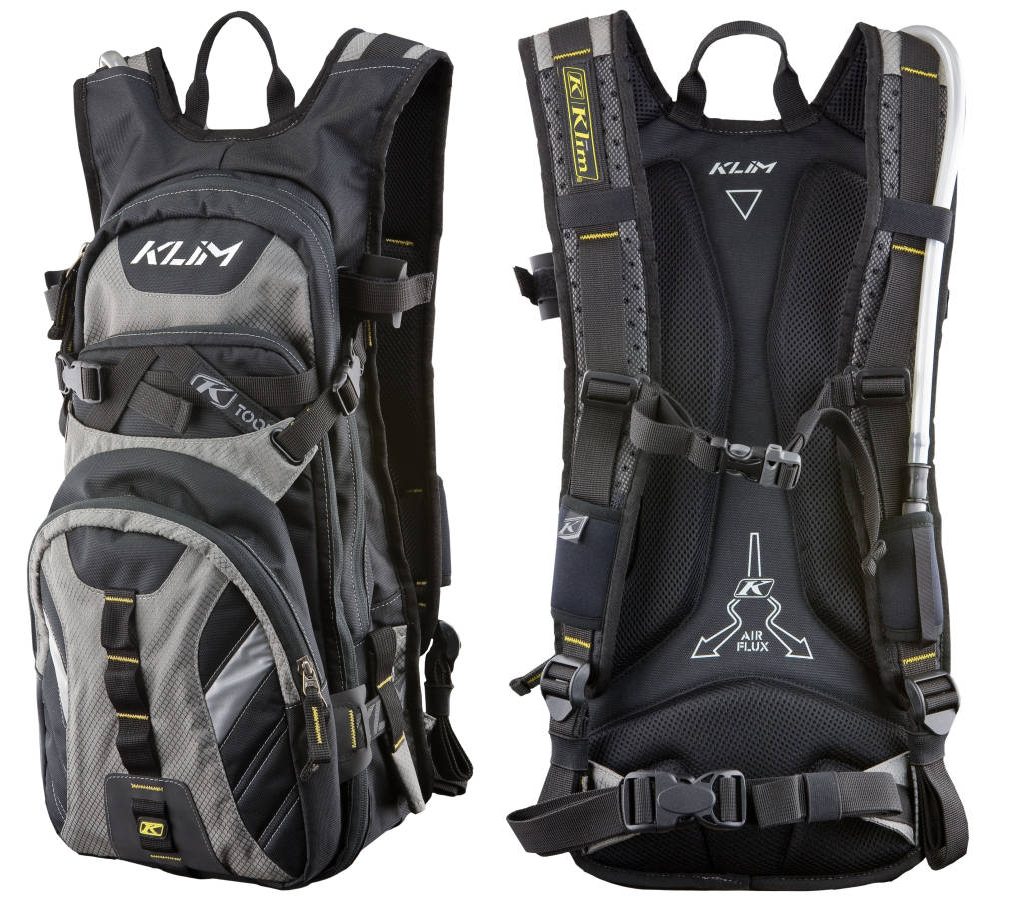
According to WebMD, heat exhaustion “is a heat-related illness that can occur after you’ve been exposed to high temperatures, and it often is accompanied by dehydration.” Heat exhaustion can include water depletion and salt depletion, so you should drink plenty of water supplemented by sports drinks (to restore electrolytes lost through sweat) and salty snacks. The easiest way to drink water while riding is to wear a hydration backpack, which includes a water bladder and a drinking tube that can be used on the go, even with a full-face helmet. We’ve logged a lot of miles with Klim’s Nac Pak ($99.99), which comes with a 3-liter Hydrapak bladder and multiple compartments for carrying snacks, tools (#10), maps (#1), sunblock (#15), a hat, etc. The Quench Pak ($79.99) uses the same high-capacity bladder but without all of the storage pockets. Read our 10 Tips to Stay Cool on Hot Motorcycle Rides
17. Face Shield/Visor Cleaner
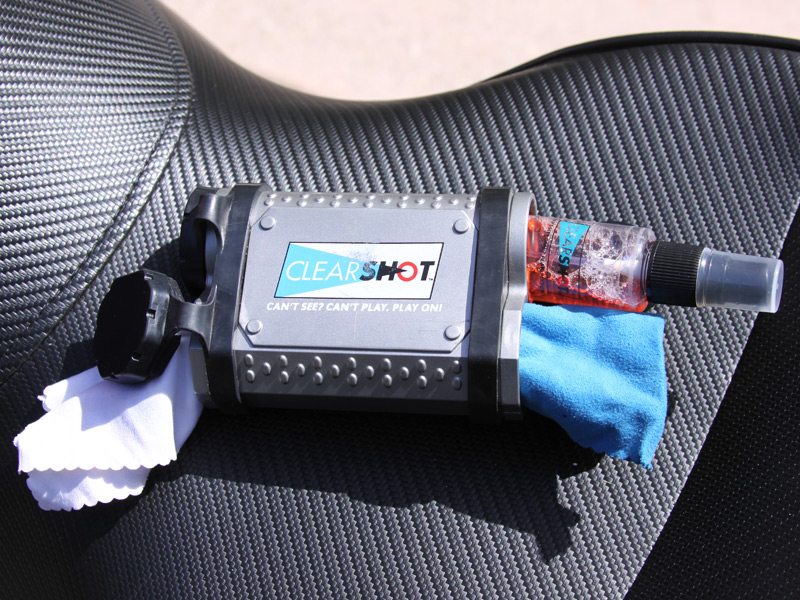
Bugs. Bird poop. Dust. Mud. Salt spray. When you cover long distances on a motorcycle, all kinds of stuff ends up on your face shield or visor, which can obscure your vision and create distractions. And if you ride at night, a dirty face shield can be downright dangerous. Whenever you stop, get in the habit of giving your face shield a quick polish. Paper towels can scratch them, and definitely don’t use that skanky squeegee at the truck stop, which is embedded with all manner of grit and grime. Keep the Clear Shot Lens Cleaning Kit in your tank bag or saddlebag. It comes in a rugged, two-part container, with a small spray bottle of glass/lens cleaner in one side and two microfiber cloths in the other. Read our review of the Clear Shot Lens Cleaning Kit
18. Spare Face Shield/Visor
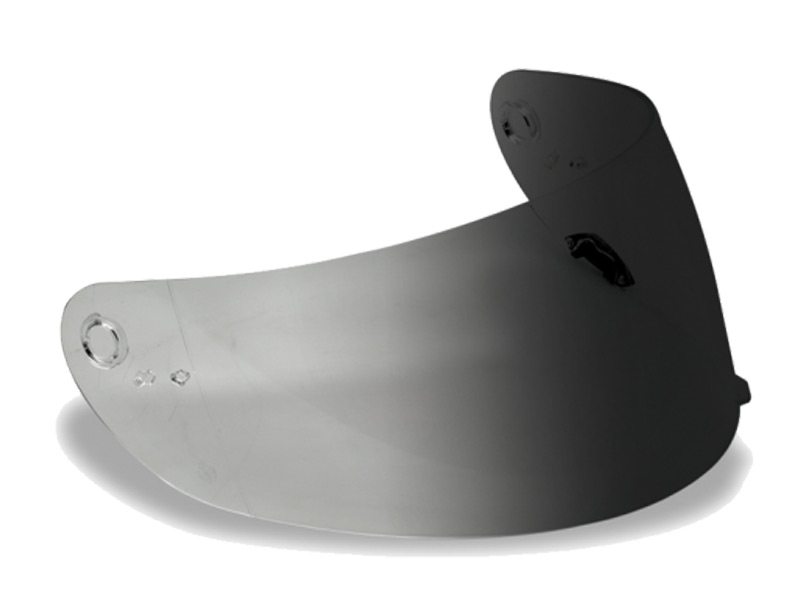
If you use a tinted face shield or visor during the day, you’ll want to carry a spare clear shield in case you end up riding at night. We generally avoid riding after dark, but traffic, a flat tire (#7) or other delays can leave you many miles from your destination when the sun goes down. It’s also good to have a spare face shield in case your primary one gets badly scratched or damaged. We’ve tested the Bell Qualifier DLX full-face helmet, which comes with a Transitions SOLFX photochromic face shield that goes from clear to dark tint when exposed to bright light. The Transitions face shield is also available as an accessory for all Bell helmets that use its ClickRelease system, including the Star, Vortex, RS-1 and Revolver. Read our review of the Bell Qualifier DLX Helmet
19. Motorcycle Owner’s Manual and Spare Bike Key
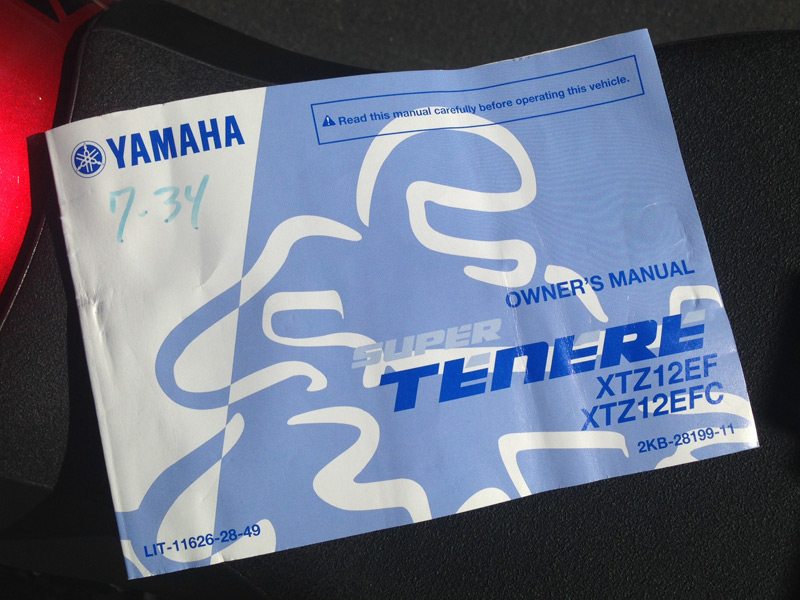
While it hardly makes for entertaining reading, keeping your motorcycle owner’s manual on the bike and being familiar with its contents can be very helpful. It stops well short of being a comprehensive service manual, but it contains valuable information about routine maintenance, load capacity, electrical system charging output, proper tire inflation (see #8), making adjustments to the suspension and controls, and much more. We also recommend carrying a spare bike key with you in case your main key falls down a storm drain, breaks off in a saddlebag, goes missing at your campsite or gets lost inside the liner of your riding pants (yes, all of these have happened to us). Store the spare key in a safe place, such as a chain around your neck like a set of dog tags.
20. Tank Bag
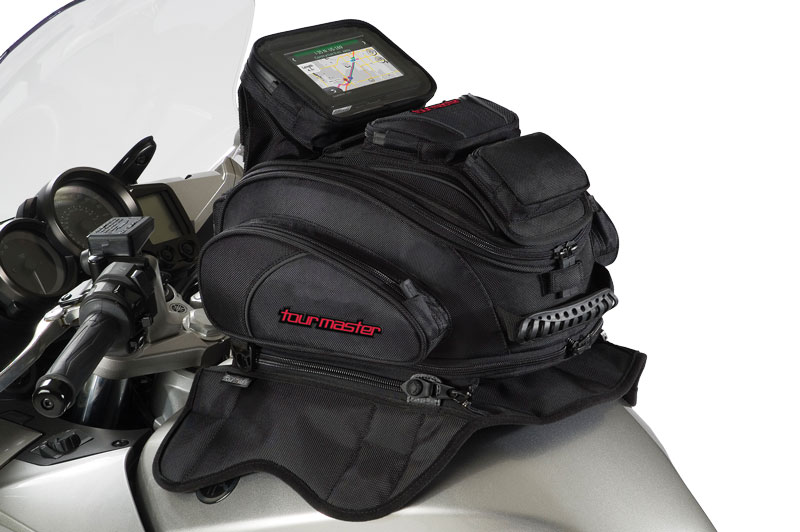
This list includes a lot of things to carry with you on a motorcycle tour. Big touring bikes have saddlebags, a top trunk and perhaps a couple of fairing compartments for storing gear, but other bikes require strap-on soft luggage or accessory hard luggage. For convenience, though, nothing beats a tank bag. Most tank bags have a map (#1) pocket or a compartment for a GPS (#2) on top, and they have a large main compartment for easy access to extra gloves (#12), sunblock (#15), face shield cleaner (#17), snack bars, cash for tolls, earplugs and countless other items. Tourmaster’s Elite 14L Tank Bag ($129.99) is a good choice. Its made of heavy-duty 1680 denier polyester, has 14 liters of capacity, can be mounted using magnets or straps and includes a clear pocket for a smartphone or GPS (#2 on our list). Read our review of the Tourmaster Elite 14L Tank Bag
Read Clement Salvadori’s 35 Bucket-List Motorcycle Rides
EDITOR’S NOTE: Updated on 2/4/19 with current products and prices.
RELATED ARTICLES MORE FROM AUTHOR
Colorado legalizes lane filtering, 2024 adventure bikes with kevin duke (part 2) | ep. 69 rider magazine insider podcast, bmw motorrad days americas returns to barber vintage festival, oct. 11-13, 2024, 32 comments.
Tell them that if going to foreign country (CAN or south) you need to make sure your bike insurance and personal medical ins. covers you in that country. having a 320z fuel bottle will help in a pinch.
I wonder how I managed to tour all these decades without a helmet cam, bluetooth, or hydration/backpack. Essential?
I am with you, Ted. Who wants to see the videos from from someone else’s vacation? I don’t want Bluetooth so I’m not disturb by callers, and I need to stop every once in a while anyway, so it’s then that I stay hydrated. Always carry that flat tire kit, though!
You have good points. I like your opinions. Thanks for sharing.
You forgot the most important item and it’s adjunct.
A cell phone and some way to keep it charged while away from home.
As a 21st item a laptop or tablet.
These two items really shouldn’t be used while in motion, but can be indispensible when traveling. For instance with the laptop/tablet for planning your next day’s ride and confirming things like weather forecast, road conditions, and communicating with family and friends.
Having a cell phone is reasonable (though not absolute) insurance that you can call for help.
Unless you have a shaft, chain lube is an essential on multi day tours. I also toss in an emergency blanket, a headband light and a safty vest in case I find myself on the side of the road at night repairing a flat or need to spend the night. Don’t forget your passport. You never know who you might hookup with and where the weather nudges you. Ride Far. Ride Often. Ride Safe.
Really? No kitchen sink? What a load of tripe.
A clutch level.
“level” I think you meant Lever… and I can relate to that.
I checked twice and you missed the first required item a FIRST AID KIT. Most of them are under suppled. But most of us are not doctors. Some training in first aid is prudent.
Last line in the introduction to the list: These are the essential things we never leave home without.
He was writing about his list. I took the info provided, and will modify as needed. (And I did forget to check my insurance coverage when I crossed into Canada earlier this year)
If you intend to bring riders into the touring aspect of this hobby, this list provides a good place to start a discussion.
First Aid Kit is also important thing on a motorcycle tour if there any medical emergency.
I still have amnesia from a serious accident in May of 2014 that left me in a coma for six hours, I had most of the items on the “20 essential items” listed above except for a running video log of my ride. I now believe a GoPro camera mounted on my bike or helmet to record my trip is an important safety device I should have had. State Police and my Insurance Adjuster believe my accident was a hit and run after having been T-boned from the side. A video of the accident would clear my confusion about how the accident happened and also help the police identify the driver who caused the accident. I’ll make sure I have one on my next bike.
I had no idea that you could get a Bluetooth helmet communicator, so you can more easily speak with the other bikers. My cousin loves motorcycles and has been wanting our family to go on a tour with him. Do you have any other tips?
Will Fix a Flat work as well
fix a flat has got me down the road to civilization but it’s no substitute for a flat repair kit. Also fix a flat can fail.
My wife and I have talked about going on a motorcycle tour. Before this article, I wouldn’t have thought about bringing all the Harley bike parts. Having a fuel siphon is a great idea.
I love you, Rider, and have for many, many years now. But that was one of the least essential “most essential” lists I have ever read. I suggest finding a dictionary and getting reacquainted with the word “essential”.
I use a 36 inch cable to keep my jacket & helmet attached to my bike . It’s a small cost insurance policy to keep my $1000. Investment off the ground or walking away!
Good list. I pack most of these when I tour, but your cellphone, communicator and GPS are of little use when they’re dead. Adding a USB plug in to the bike (if it doesn’t come stock) is cheap and easy, and ensures that you’ll be powered up even after ten hours on the road.
I also carry an alarmed disc lock for the bike, as cheaper motels tend to be in sketchy areas. I second Mark’s suggestion above of a small cable lock to guard your helmet and jacket – you don’t always want to hump that gear on a hike to the waterfall on a hot day. Locking it to the bike is cheap peace of mind.
Hey there ! Its amazing to read these important tips on a Motorcycle Tour. I pack most of these when I tour, but love the idea of Bluetooth Helmet Communicator. This is awesome. Thank you for sharing the tips.
Thank you for the information. Cheers
Don’t forget the toilet roll
Top tips mate, I’ve toured Europe and oz and had almost everything you’ve listed and it made for a trouble free trip. 🤙🏽🤙🏽
A physical map indeed a very important accessory to carry on a long trip. Very Nice Blog. Thanks for sharing.
I just ordered my new bike and I’m making to-do lists, this helped a lot 🙂 Thanks!
In 2022 these are still awesome tips. Don’t forget a fresh credit card and cash, LOL
These are spot-on essentials for a memorable motorcycle tour! Your list covers everything from safety to comfort, and it’s clear that experience speaks here. I’d also add a great travel companion and a sense of adventure to the list. Thanks for sharing these valuable tips for riders hitting the open road!
What a comprehensive list! These essentials can make or break a motorcycle tour. Safety gear and tools are a must, but I also never hit the road without a sense of adventure and my trusty map. Happy riding, everyone!
Thank you for sharing this insightful post about the most essential things you need on a motorcycle tour! As someone who loves hitting the open road on two wheels, I found your list of essentials to be incredibly comprehensive and informative.
I couldn’t agree more with the importance of packing the right gear and supplies for a motorcycle tour. From protective gear like helmets and gloves to navigation tools like GPS devices or maps, it’s crucial to be prepared for whatever the road may bring.
Overall, I want to express my gratitude for providing such valuable insights into essential items for motorcycle touring. Your post has inspired me to double-check my packing list for my next adventure on the road!
Thank you so much for sharing very useful information.
LEAVE A REPLY Cancel reply
Save my name, email, and website in this browser for the next time I comment.
CURRENT ISSUE
News & reviews, 2024 adventure bikes with kevin duke (part 2) | ep. 69..., bmw motorrad days americas returns to barber vintage festival, oct. 11-13,....

- 7760 France Avenue South, Suite 810 Bloomington, MN 55435
- Phone: (763) 383-4400
- Subscribe to Rider Magazine
- Subscribe to Rider eNewsletter
- Contact Rider
- Advertise With Us
- Privacy Policy
© 2024 - Rider Magazine. All rights reserved.
- Carry-On Luggage
- Checked Luggage
- Convertible Carry Luggage
- 4-Wheel Luggage
- 2-Wheel Luggage
- New Arrivals
Adventure-ready wheeled carry-on & checked luggage
- Packing Cubes
- Compression Cubes
- Toiletry Bags
- E-Organization
- Garment Folders
- Sacks & Pouches
Compress bulky items, separate dirty shoes or clothes, and maximize luggage space while packing
- Carry-On Duffels
- Large Duffels
- Rolling Duffels
- Backpack Duffels
Designed & constructed to minimize fabric waste
- Carry-On Backpacks
- Waist & Shoulder Bags
- Travel & Hiking Backpacks
With practical packs & bags for commutes, extended trips, and everyday use
- Luggage Tags & Locks
- Comfort & Necessities
- Money Belts
- RFID Security
With Undercover Hidden Pockets, Money Belts, and more
- Travel Blog
- Sustainability
- No Matter What Warranty
- Find a Store
Find travel tips, adventure checklists, packing hacks & more in our Travel Blog
What Essentials Should You Pack for an Epic Motorcycle Road Trip?
Written by Zach Lazzari on April 14, 2021
Zach Lazzari is a freelance writer, fly fisherman, and explorer. He lives on the road full-time, chasing fish and wild places with his dog, Shale. Follow his journey at bustedoarlock.com and @zachlazzari on Instagram.
Plan an epic motorcycle road trip that will live in your memories forever. Here’s the perfect packing list to help you make the most of your next great moto journey.
So you’re planning an epic motorcycle adventure? Awesome! But before you take off, there’s something you should know: packing gear for a motorcycle road trip requires a bit of finesse as space is limited. Planning for a variety of environments and weather conditions requires some forethought and a very specific organizational strategy to make use of every bit of space you’ve got. We’re here to help you with our packing list for a motorcycle list, which covers the things you absolutely need, especially for long-term travel on your bike, as well as optional ones you can bring if you have the room. And, to top it all off, we’ll even share some packing tips.
Safety Gear
As you try fitting different loads of gear on the bike, some things may not fit. In this case, you need to trim the fat a bit—and safety equipment is easy to put on the chopping block. Don’t make this mistake! Having your first aid kit and flat tire repair kit will save your butt in the case of an emergency. Here’s the ideal safety gear packing list for a motorcycle trip:
● First aid kit
● Flat tire repair kit
● Basic toolkit with:
● ⅜ ratchet
● Hex heads
● Pin puncher
● Spindle key
● Spark plug remover
● Chain split link breaker
● High-quality multi-tool
● Duct tape
● Zip ties
● Spare parts like an extra spark plug and spare tube
● Tube repair kit.
Your riding suit is great on the road, but when you layover at a campsite or a hotel, it’s nice to have some comfy clothes. Packing a limited wardrobe can difficult for trips that will span a variety of climates. There’s so much to account for—heat, cold, rain, wind, and anything else nature has to throw your way—and each will require a special piece of clothing. The key is to keep everything minimal.
We recommend bringing along one pair of sandals or sneakers, a few insulating layers (remember, even warm destinations can get cold at night), and lightweight, relaxed clothing for lounging around the campsite. If you’re headed for colder climes, pack a warm hat, gloves, and socks, too. You also won’t regret packing rain gear for when a storm hits, plus a wide-brimmed hat (and sunscreen) for long days on the beach or out in the desert. Protect yourself from the elements, and your motorcycle adventure will be far more comfortable. Keep all your clothing in a Pack-It Compression Sac or a Pack-It Isolate Compression Cube to save storage space.
Camping Equipment
If you’re embarking on overnight trips, your motorcycle road trip checklist might need to include camping equipment. Some travelers spend weeks and even months on the road, utilizing campsites to enjoy remote places—and to save some money. Motorcycle campers must think like ultralight backpackers, opting for compact shelters and sleeping bags. You should consider packing specialized tents with a separate sleeping space and an actual garage area for the bike—these are made specifically for motorcycle travel and pack down exceptionally small. Backpacking stoves and cookware also help to save space. And don’t forget panniers fitted with custom water carriers, which make it easier to stay out longer. Add a water filter, and you can refill them at stream crossings and lakeside camps.
Motorcycle Road Trip Packing Tips: Managing the Gear
A bunch of gear packed into a tight space can quickly turn into a jumbled mess, and once things get out of order, they’ll never fit quite right again. Building a system for packing is extremely important; it will ensure your gear fits into saddlebags or boxes and make it easy to access specific items without unpacking and repacking every single thing. Packing cubes create natural division between gear categories, keeping everything in order. You can separate clothing, toiletries, camp gear, and tools/maintenance gear by using different cubes for each category. Try the Pack-It Isolate Shoe Sac and the Pack-It Essentials Set .
As for what bags to bring, here are a few recommendations:
● Wayfinder Waist Pack : This fanny pack is perfect for storing important items like your phone and your wallet while you’re on your bike. It has side stretch water bottle pockets, plus a reflective hit for low-light visibility.
● Migrate Duffel 40L : This ultra-durable duffel is made from a water repellent 900D heavy-duty TPU, making it easy to hose down if it gets dirty on the road. It also converts to a backpack for easy carrying.
● Wayfinder Backpack 30L : Need a lightweight day pack? This is the option for you. Despite having a 30L capacity, the bag only weighs 1 lb. and 15 oz. It has everything from a 17-inch laptop compartment to a fleece-lined front pocket for sunglasses.
Related Posts
Read more from the travel blog, beach vacation packing list: what to pack for a beach vacation.
The Ultimate Beach Vacation Packing List: Your Key to Stress-Free Travel Nothing says summer like the sound of the ocean,...
The Ultimate Travel Packing List: How to Pack for Any Vacation
Packing for a trip? Our travel checklist has you covered. This complete list covers what things to pack for international...
The Definitive Hawaii Packing List Based on Your Travel Goals
Hawaii is often referred to as the Paradise of the Pacific. With 750 miles of dramatic coastline to explore, mountains...
- Choosing a selection results in a full page refresh.
The ultimate guide to riding Route 66 on a motorcycle
There's arguably no more iconic American road trip than the Mother Road—here’s how to travel it on two wheels
By Roadtrippers
If your idea of a perfect motorcycle road trip involves scenic, winding roads far away from people, cities, and cars, Route 66 might not be for you. But if you’re a fan of American history, kitschy roadside attractions, classic neon signs, mid-century architecture, Indigenous heritage and culture, and talking to friendly locals, there is arguably no better road trip in the world than driving the Mother Road.
And if you ask me, the best way to experience it is by motorcycle.
Last year, Roadtrippers published Route 66: Chicago to Santa Monica , and I immediately jumped on the chance to take the book out for a proper test run. This past October, I spent 7 days riding Route 66 from Illinois to California. Here’s what I learned along the way.

Roadtrippers Route 66: Chicago to Santa Monica
What is route 66 .
Stretching 2,448 miles (3,940 kilometers) from Chicago in the east to Santa Monica in the west, Route 66 crosses through eight states and offers a near-perfect snapshot of the U.S.—from bustling cities to crumbling ghost towns. The original road was established in 1926, and during its mid-century heyday, small towns went all in on capturing the tourism that came along with the highway’s rise in popularity. Roadside attractions, diners, and motels sprang up along the route, many of which are still standing today. But as more and more sections of the original route were bypassed by interstate, other towns and destinations weren’t so lucky, and fell into disrepair or disappeared entirely.
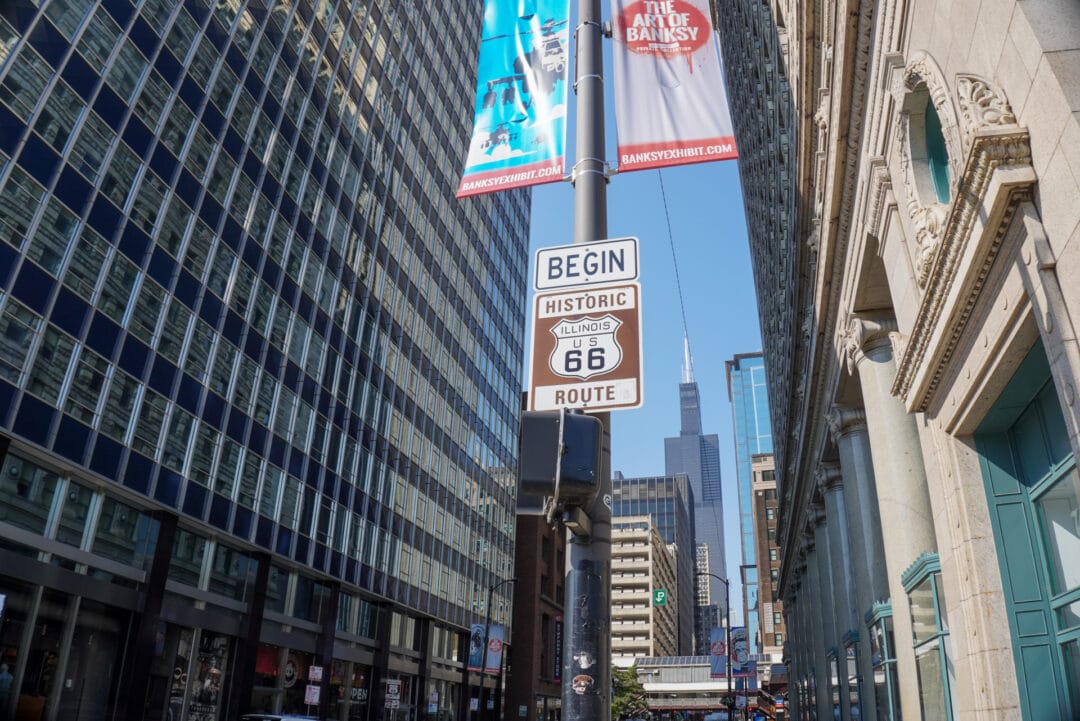
Route 66 was officially decommissioned in 1985, but it has seen a revival in the last few decades. According to Rhys Martin, president of the Oklahoma Route 66 Association, a lot of the buzz can be attributed to Pixar’s 2006 movie Cars .
“The figure that’s quoted is that the businesses along the route saw a 30 percent jump just from the movie,” he says. “And as those kids grow up and introduce their own kids to Cars , that’s getting them interested in the history and the story. And now, just from a greater cultural standpoint, you have people who are more interested in authentic experiences.”
And despite the occasional tourist trap, you’d be hard pressed to find a more authentic road trip experience than Route 66.
Related: The Roadtrippers guide to Route 66
What to ride on a route 66 motorcycle road trip.
When I first started planning my trip, I knew that I wanted to do it on a Harley-Davidson motorcycle. I’d conjured up images of cruising down the highway on a chromed-out machine that, in many people’s minds, occupies the same cultural space as the Mother Road itself: a bit dated, perhaps, but still undeniably American.
Instead of a classic cruiser, I got the opportunity to ride Harley-Davidson’s new adventure motorcycle, the Pan America . Comfortable, fast, and able to go anywhere, it ended up being the perfect choice for the trip. And I couldn’t help but appreciate the juxtaposition between riding a new generation of Harley on the most classic American road.
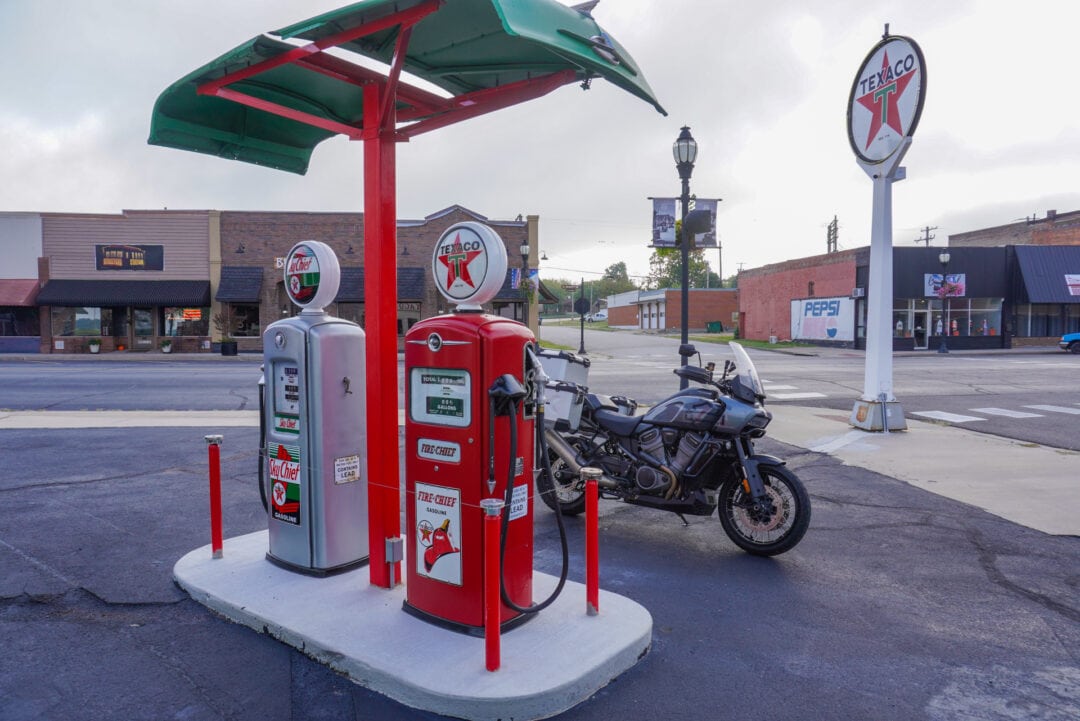
For those not bringing their own motorcycle, the easiest choice is to rent a bike. Motorcycle rental company EagleRider has locations in both Chicago and Los Angeles, and the option of a one-way rental is available for an additional fee. EagleRider also offers guided and self-guided Route 66 tours. The 15-day self-guided tour package starts at about $2,500—however, it is entirely possible to ride all of Route 66 in 7 to 10 days, as long as you’re comfortable riding a few hundred miles per day.
If you’re able to pick up and drop off the bike in the same location, you’re going to have a lot more options. Peer-to-peer rental platforms such as Riders Share and Twisted Road generally offer a wider range of models at a lower price point than traditional rental companies. I’ve also heard of people purchasing a used motorcycle at the start of the route and selling it after they reach the end—but that involves a lot more risk, money, and paperwork than most people are going to be comfortable with.
What to pack for a Route 66 motorcycle road trip
No matter what bike you end up with, make sure it’s comfortable enough to ride long distances on, and that it has space to carry all your gear. Since Route 66 crosses through multiple states with widely varying climates, you’ll want to make sure you pack for all-weather travel.
Traveling on a motorcycle means always being exposed to the elements, with very little protection beyond what you’re wearing. Depending on the time of year you travel Route 66, you may hit everything from scorching heat to snowstorms (in fact, you’re likely to encounter both some of the hottest and coldest days of your journey just within the state of Arizona).
The best way to handle extreme weather on a motorcycle is to bring layers. Make sure you pack both warm and cool base layers, protective gear (built-in armor and abrasion-resistant fabrics are highly recommended), and rain gear. For next-level comfort in the cold, I recommend investing in heated gear.
Route 66 runs through multiple large or mid-sized cities, and you’re never far from restaurants or gas stations. That said, it’s always a good idea to carry water and snacks on your bike in case of an emergency. A basic toolkit can also be a lifesaver in unexpected situations. A lot can happen in 2,400 miles—parts rattle loose, tires wear out, and oil may need to be refilled. Make sure you carry tools that fit your specific bike, and regularly check things like brakes, fluid levels, tire pressure, lights, and bolts.
Related: How to prepare for a motorcycle road trip
State-by-state itinerary.
Original route mileage: 301 miles (484 kilometers) Must-see highlights: Start of Route 66 sign, Gemini Giant, Illinois Route 66 Hall of Fame and Museum, Bunyon with a Hot Dog, Pink Elephant Antiques, World’s Largest Catsup Bottle
Route 66 starts in downtown Chicago. Anyone who’s ridden a motorcycle here, or in any major metropolitan downtown area, knows it’s not necessarily the most enjoyable experience; navigating around traffic, pedestrians, and one-way streets is a far cry from the open road. But it’s definitely still worth kicking off the trip with a photo in front of one of the Historic Route 66 “Begin” signs located along East Adams Street. One is on the north side of the street near Michigan Avenue and another on the south side, in a small park near Wabash Avenue. I was able to easily find motorcycle parking just in front of the Wabash Avenue sign.
If you’re already hungry, consider grabbing a donut hole from Lou Mitchell’s Restaurant & Bakery , or stop at Dell Rhea’s Chicken Basket just outside of the city for one of the most classic Route 66 dining experiences. Just a heads up: You’ll likely be eating a lot of greasy American cuisine over the next few days, so pace yourself.
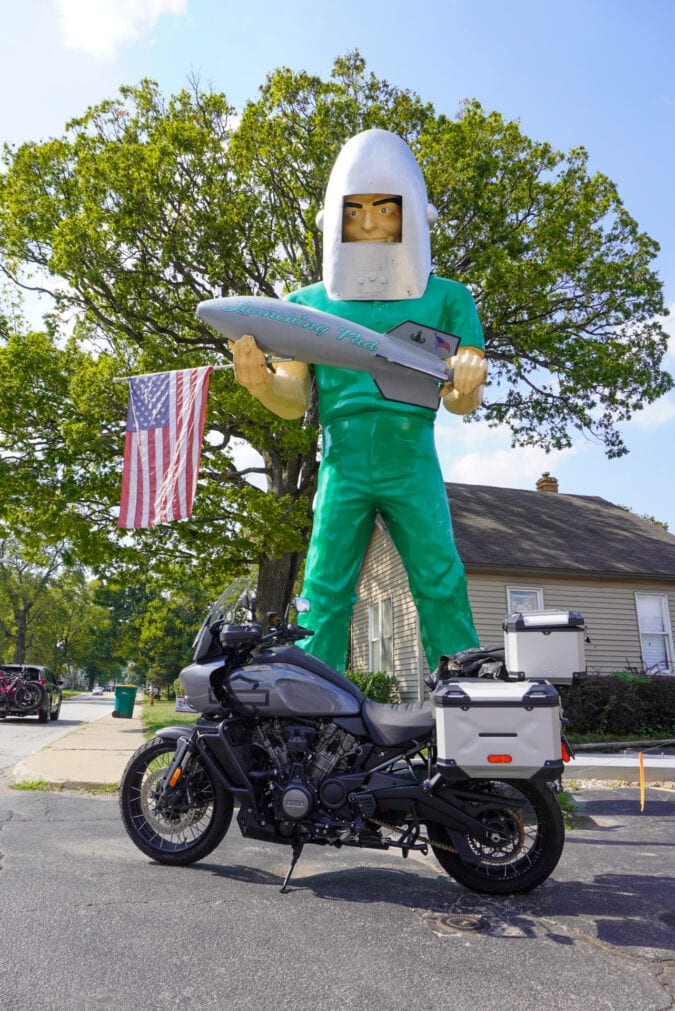
Continuing on the greasy food theme, a favorite stop for bikers is the Launching Pad diner, a Route 66 staple in Wilmington, Illinois. The parking lot is typically packed with motorcycles and vintage cars, and the Gemini Giant Muffler Man makes for a great photo op. There’s also a gas station conveniently located across the street. I ended up spending more than an hour here talking to other motorcyclists who wanted to hear about my bike—the Pan America is still so new that seeing one out in the wild is a novelty, and I was more than happy to sing its praises. It was a good reminder: Motorcyclists love to talk about motorcycles, so make sure to factor in extra time for chit chat during gas stops.
About 100 miles southwest of Wilmington is Atlanta, another small town packed with Route 66 attractions. Don’t miss the Bunyon with a Hot Dog Muffler Man or the Route 66 Arcade Museum , both located on the same block of Arch Street in downtown.
After a long first day on the road, I rolled into St. Louis, Missouri, just as the sun was starting to set. I took a slight detour on the way to my hotel to check out Gateway Arch National Park , which was beautiful at sunset.
Related: A resurrected Route 66 diner serves up hot fudge sundaes with a side of grief counseling
Original route mileage: 317 miles (510 kilometers) Must-see highlights: Gateway Arch National Park, Murals of Cuba, World’s Second Largest Rocking Chair, Uranus Fudge Factory, Gary’s Gay Parita, Red Oak II
My first stop after leaving St. Louis was at the Route 66 State Park visitor center, located just off I-44 along the Meramec River in Eureka, Missouri. It started raining as I pulled into the parking lot, so I went inside to hide from the weather. The visitor center has a small museum documenting the road’s history in the state, and a helpful staffer gave me a printed map and pointed me in the direction of the route’s original alignment.
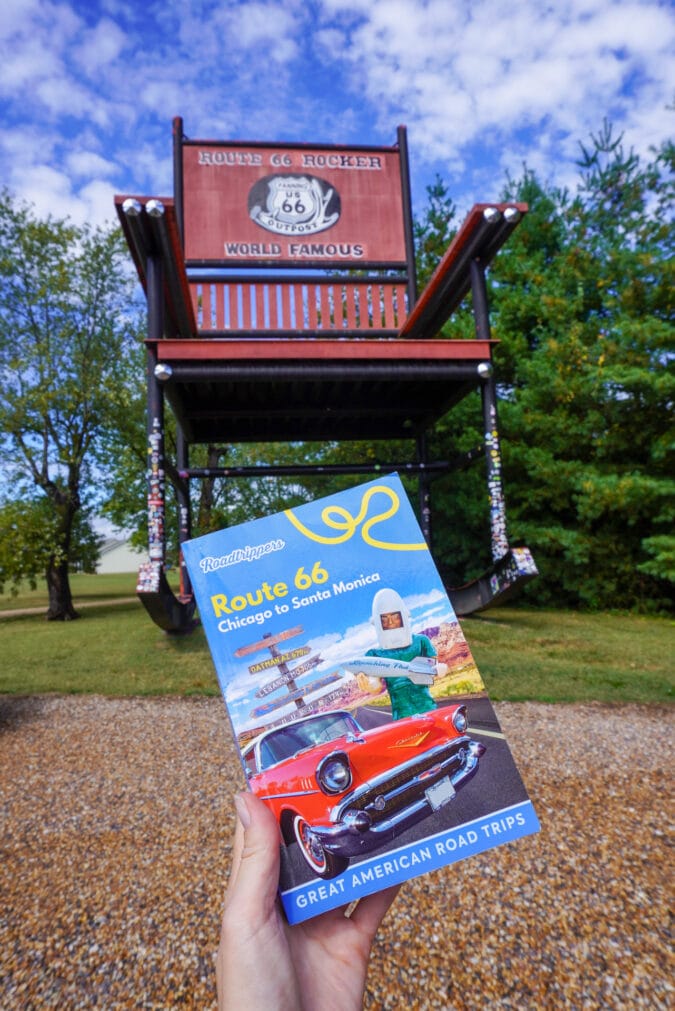
As with much of Route 66, the original road in Missouri largely runs parallel to the interstate, and it’s easy to get on and off. With my tight schedule, I ended up making a list of stops ahead of the trip and, in the interest of saving time, jumped on and off the freeway between stops. Those with more time to spend on the route will be able to meander along on its original parts. This is an excellent way to find small towns that may be less touristy, but still packed with history and hidden gems. “Generally speaking, if you find yourself on the interstate and you’re passing a lot of towns, you’ve missed something somewhere,” Martin says.
While the Missouri stretch of Route 66 is often beautiful—it crosses through the lush, green Ozarks—the weather was not in my favor. It was pouring rain for most of the day I spent riding through the state, but with proper rain gear and a quick switch to “rain mode” on the motorcycle, it wasn’t too bad.
I stopped for lunch in Cuba, a town known for its murals depicting historical events. Since I don’t eat meat, I opted out of Missouri Hick ’s famous barbecue and instead found Little Shop of Comics & Audrey’s Eatery on Main Street, a cozy comic book shop with a cafe in the back. I ordered soup and waited out the rain.
Back on the road, I made my way to the World’s Second Largest Rocking Chair (it used to be the largest, until 2015, when an even bigger rocking chair in Casey, Illinois, knocked it down to second place), the Devil’s Elbow Bridge , and the Uranus Fudge Factory and General Store . The latter may be a classic tourist trap, but anyone who enjoys potty humor will have a good time in Uranus.
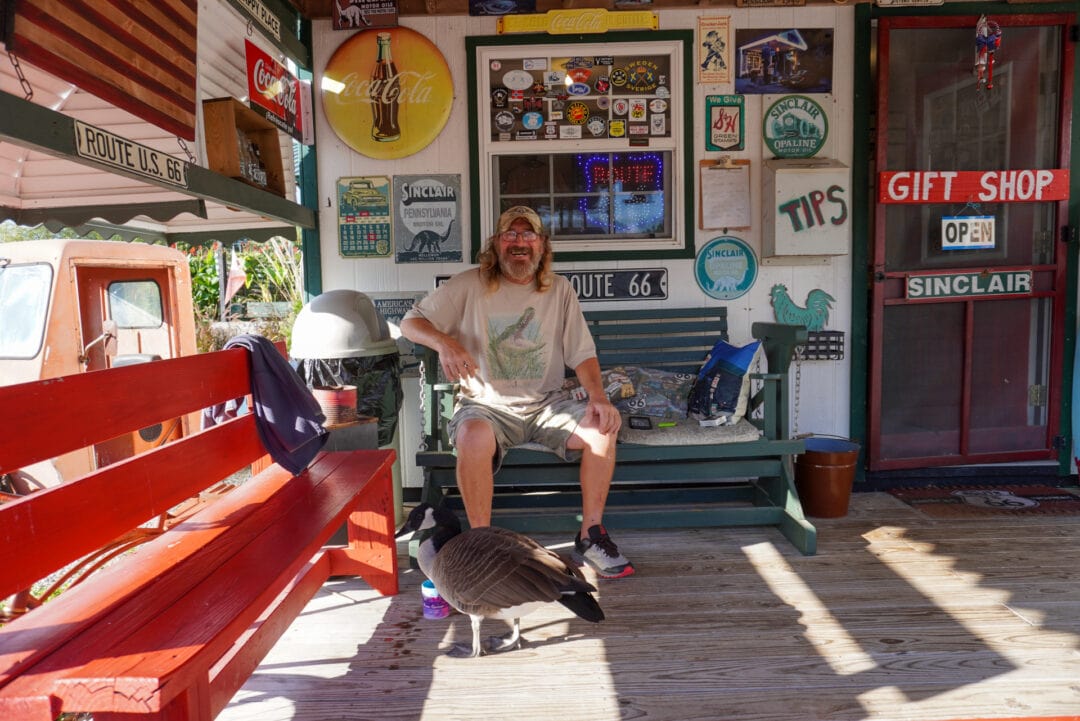
One of my must-see stops was Gary’s Gay Parita , a replica of a 1930 Sinclair gas station. The property is packed with memorabilia from the heyday of Route 66, including vintage cars, gas pumps, signs, old glass bottles, and more. The current owner, George Bowick, has a wealth of Route 66 knowledge and is happy to share it with anyone who asks. As we were chatting, Lady Bird, his tame goose, nibbled on my boots. Bowick recommended I visit Red Oak II on my way into Carthage, so naturally I obliged.
Red Oak II is a unique type of place. Created by artist Lowell Davis, it’s a replica of the real Red Oak, Missouri, where Davis grew up. After leaving for many years and returning to find that his hometown had turned into a ghost town, Davis started moving buildings from the old town and restoring them on his farm just outside Carthage. The result is a quaint but eerie town that feels completely frozen in time. I didn’t see a single person during my visit, but a very sweet dog showed up out of nowhere and escorted me around.
Original route mileage: 13 miles (21 kilometers) Must-see highlights: Cars on the Route, Gearhead Curios, Rainbow Bridge
The Kansas section of Route 66 is short but sweet. In just about 13 miles, the state manages to pack in several can’t-miss stops. Entering into Kansas through Missouri’s Old 66 Boulevard puts you at the north end of Main Street in Galena (population: 3,000). Your first stop here should be Cars on the Route , a restored Kan-O-Tex service station. Grab some snacks or Cars memorabilia, and check out the old truck that inspired the movie’s Tow Mater character.
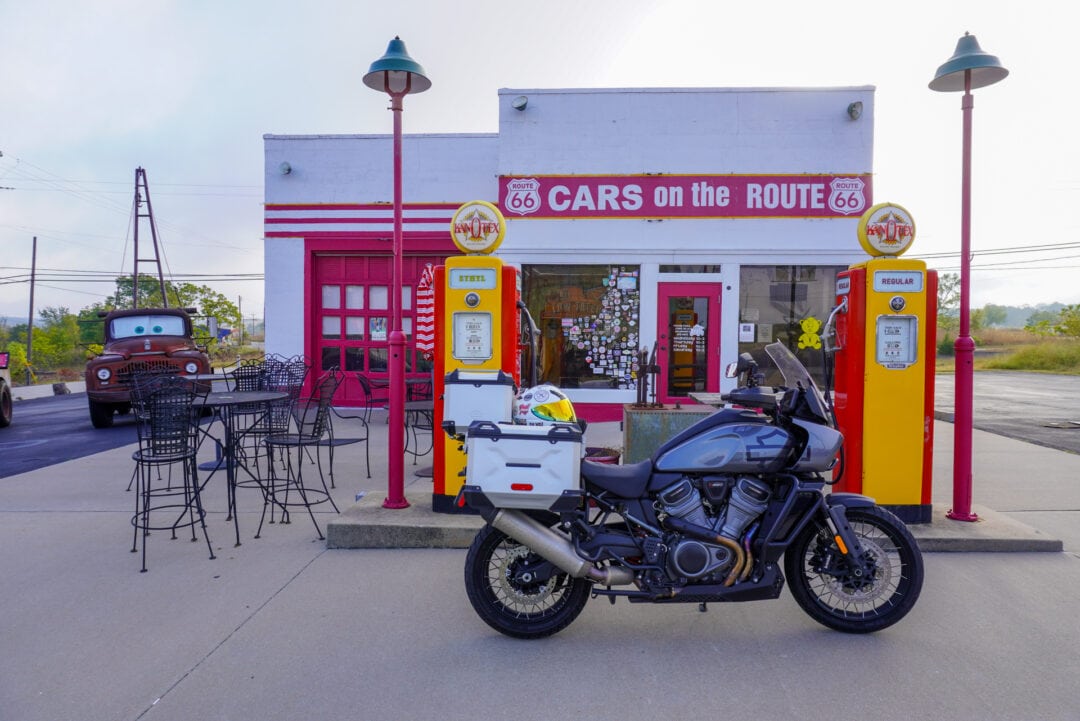
As you ride down Main Street, you’ll come across the Galena City Jail, another vintage service station called Gearhead Curios, and a large “Galena on Historic Route 66” mural. I can never pass up a good bridge, so from Galena I continued onto the Rainbow Bridge, a beautiful Marsh Rainbow Arch bridge built in 1923 over Bush Creek.
If you have time for a detour, the Tri-State Marker just a few miles south of the route allows you to stand in three states at once: Kansas, Oklahoma, and Missouri, a worthy photo op.
Original route mileage: 432 miles (695 kilometers) Must-see highlights: Blue Whale of Catoosa, Buck Atom’s Cosmic Curios on 66, Seaba Station Motorcycle Museum, POPS Soda Ranch, Lucille’s Service Station, Sandhills Curiosity Shop
If you’ve ever traveled I-44 through Oklahoma, you’re already familiar with its most annoying feature: the frequent cash-only toll booth stops. From the Missouri state line and all the way to Oklahoma City, old Route 66 runs parallel to I-44, and if you have the time (and want to save a few dollars), it’s a much more pleasant way to travel. It’s also the easiest way to make sure you don’t miss any roadside attractions along the way.
The first must-see stop in Oklahoma on my list was the Blue Whale of Catoosa , one of the most recognizable stops along the route. I sat down at a picnic table for a snack while admiring this roadside attraction, originally built as an anniversary gift to a wife who loved whales.
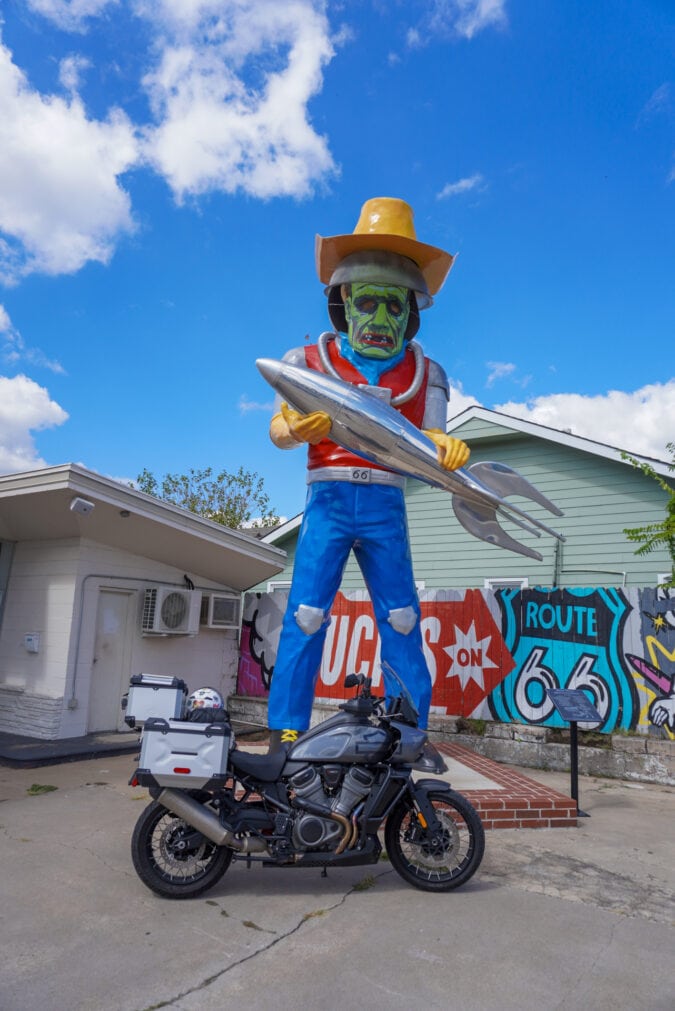
In Tulsa, I took a much-needed break from greasy diners with lunch at Chimera Cafe. I had originally planned to avoid bigger cities as much as possible on this trip, but Tulsa is a real Route 66 goldmine and I ended up spending more time here than I originally planned. One of the highlights was Buck Atom’s Cosmic Curios and its Space Cowboy Muffler Man. Just as I was about to leave, a guy rode in on a dual-sport motorcycle to ask me about my bike. This turned out to be Chris Wollard, the local artist who designed and built the Space Cowboy’s shiny rocket ship ( Mark Cline fabricated the Muffler Man).
A few hours later I stopped at the Seaba Station Motorcycle Museum . While chatting with the guy at the front desk, I quickly realized we had friends in common. The museum is small but jam-packed with vintage motorcycles dating back to the early 1900s. Entry is free, but donations are appreciated.
I stayed the night in Elk City, home to the National Route 66 Museum. The next morning I was on the road by sunrise, heading toward my final stop in Oklahoma: Sandhills Curiosity Shop . Owned by “hillbilly hoarder” Harley Russell, it’s neither a store nor a museum—but it’s a classic Route 66 stop that makes for a great photo op.
Related: Route 66’s most famous hillbilly hoarder, presides over a shop where nothing is for sale
Original route mileage: 186 miles (299 kilometers) Must-see highlights: Tower Conoco Station & U-Drop Inn, Slug Bug Ranch, Palo Duro Canyon State Park, Jack Sisemore Traveland RV Museum, Cadillac Ranch, Midpoint Cafe
The Texas Panhandle, with its flat plains and unrelenting stretch of I-40, isn’t necessarily known as the most scenic place to ride a motorcycle. However, this part of the Mother Road features some of its most iconic stops—and some of the best detours.
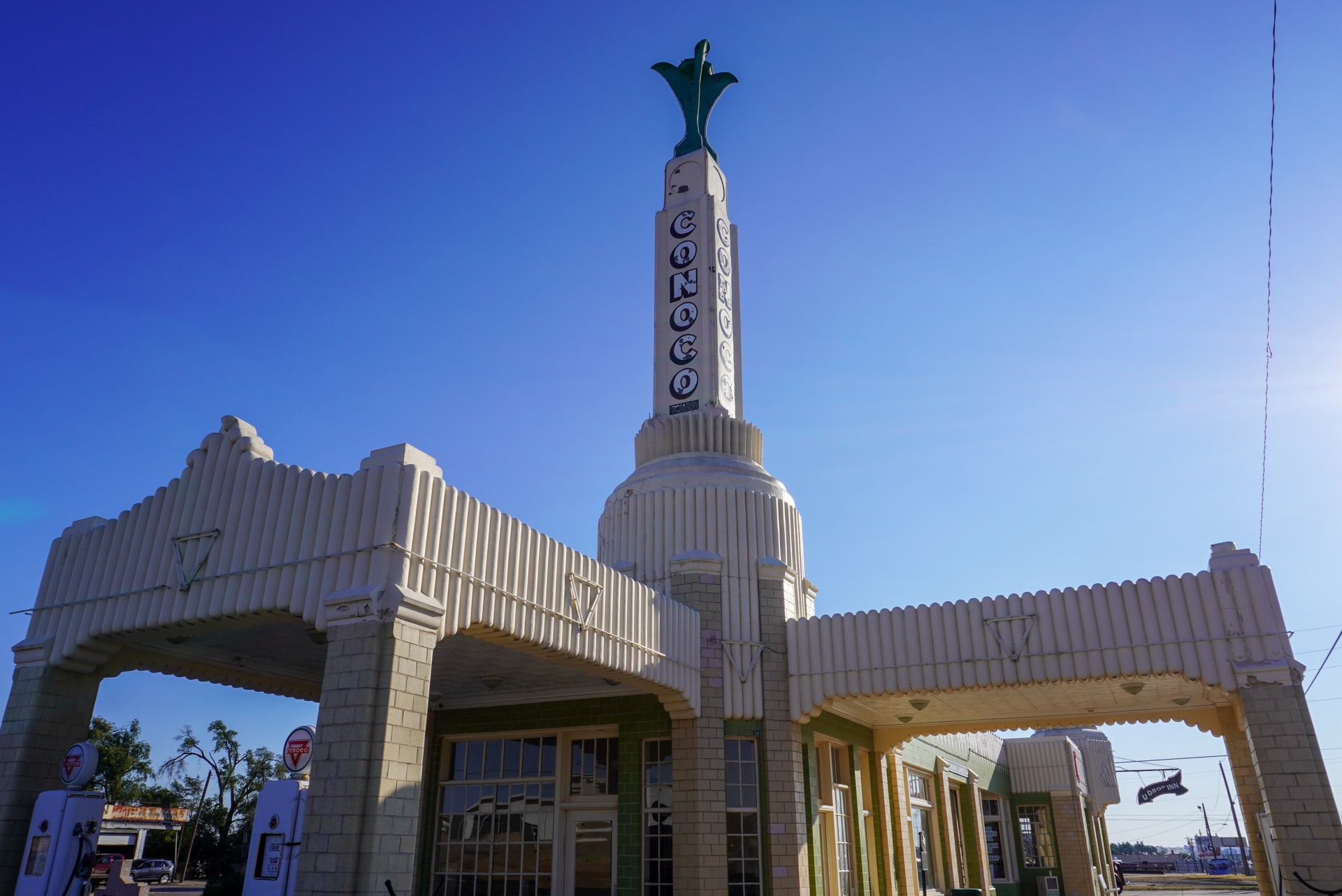
There are so many vintage service stations—restored or abandoned—along Route 66 that it’s impossible to visit them all. But if you only have time for one, the Tower Station and U-Drop Inn in Shamrock is a stunning art deco masterpiece that should not be missed. As a bonus, Ramone’s House of Body Art, the auto body shop in Cars , was heavily inspired by this building.
One of the more famous Route 66 attractions in Texas is Cadillac Ranch . And while that’s absolutely worth a stop, I found Slug Bug Ranch to be a less crowded and equally enjoyable alternative. Located just 15 miles east of Cadillac Ranch, this whimsical tribute features a row of Volkswagen Beetles buried nose down and covered in graffiti.
During my jaunt through Texas, I decided I’d had enough of riding straight, flat highways and needed a change of scenery. After grabbing lunch in Amarillo, I took a 30-mile detour south to Palo Duro Canyon State Park . Home to the second largest canyon system in the country, the gorgeous scenery and steep switchbacks of the park did not disappoint. If you go, remember to check the forecast beforehand—due to its microclimate, temperatures at the bottom of the canyon can be significantly higher than at the rim.
As I continued my journey west, I made a final stop in Texas at the Midpoint Cafe in Adrian. This roadside diner and gift shop marks the official halfway point of Route 66—1,139 miles down, 1,139 miles to go.
Original route mileage: 487 miles (784 kilometers) Must-see highlights: Russell’s Travel Center & Car Museum, Tee Pee Curios, Blue Swallow Motel, Blue Hole of Santa Rosa, Tinkertown, Old Town Albuquerque, Laguna Pueblo, Bandera Volcano and Ice Cave, El Rancho Hotel
While New Mexico has no shortage of mid-century kitsch, it’s also arguably the best state along the route to dive deep into Indigenous history and culture. However, due to the COVID-19 pandemic, the state’s pueblos and Native American villages were all closed to visitors during my trip.
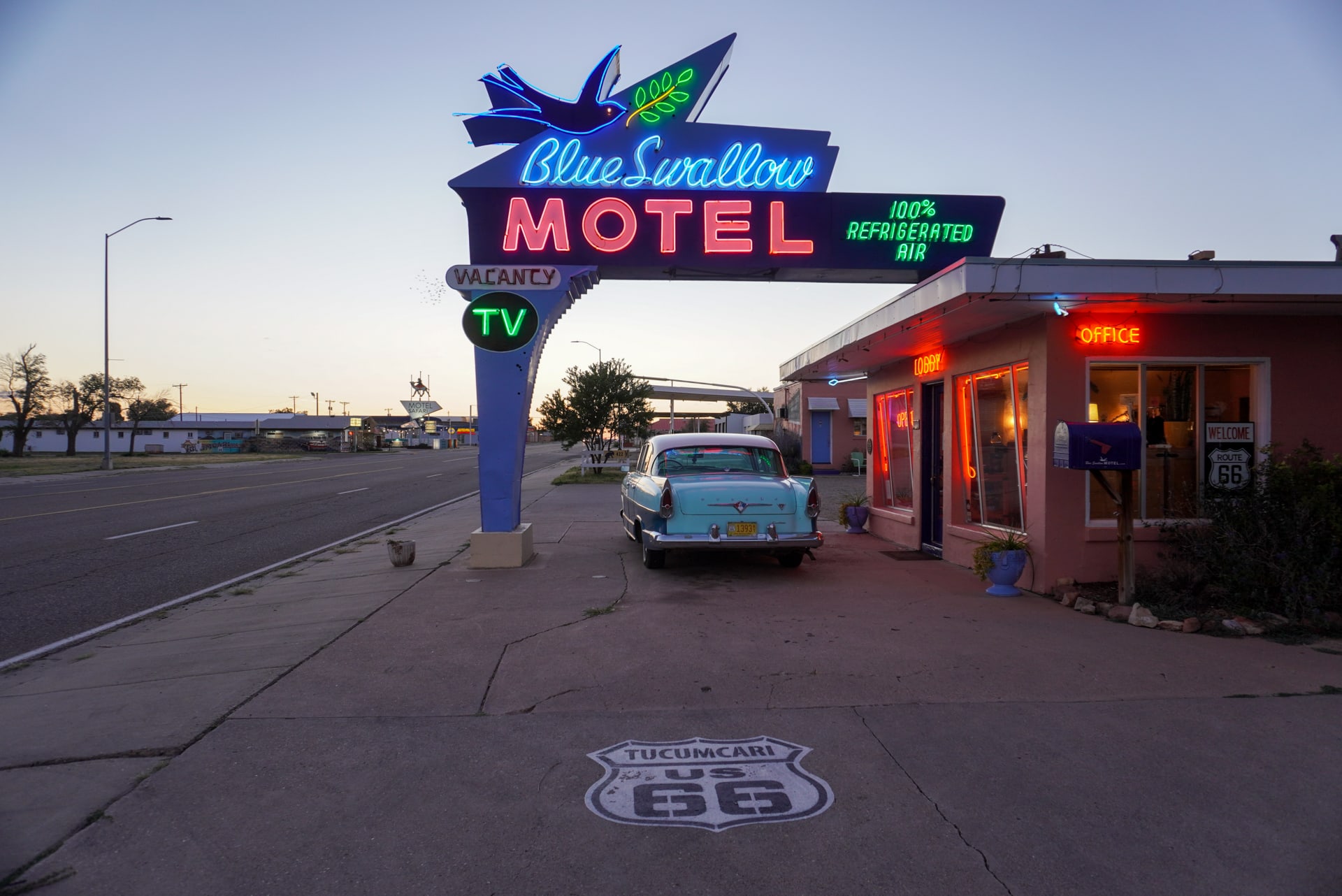
I spent the night at one of the most iconic accommodations along the route: the Blue Swallow Motel in Tucumcari, a classic 1940s motor court (each room comes with a private garage for your motorcycle) known for its spectacular neon signage. I rolled in right before sunset and was lucky enough to get the last available room, despite not having made a reservation in advance. This irked my neighbors in the room next door, who had made their reservations months earlier. But as several people I spoke to during the trip confirmed, the route was much less busy than normal because the pandemic had temporarily halted the influx of one of the most prevalent Route 66 travelers: the European tourist.
Tucumcari is worth a visit whether you’re staying the night or not. Pick up a souvenir from Tee Pee Curios , grab a home-cooked meal from Del’s Restaurant, or get a photo in front of one of the town’s Route 66 murals.
Heading west through the Land of Enchantment, Albuquerque contains the longest continuous stretch of Route 66 within a single city. Here, you can stand at the intersection of two different historical alignments of the highway. Beyond its Mother Road legacy, the city is also home to mid-century modern architecture , a Historic Old Town area packed with museums, the famous Balloon Fiesta (which, coincidentally, took place during my visit), and tons of artsy Southwestern charm. On my way into town, I took a detour to ride some proper switchback roads to the top of the Sandia Crest ridge.
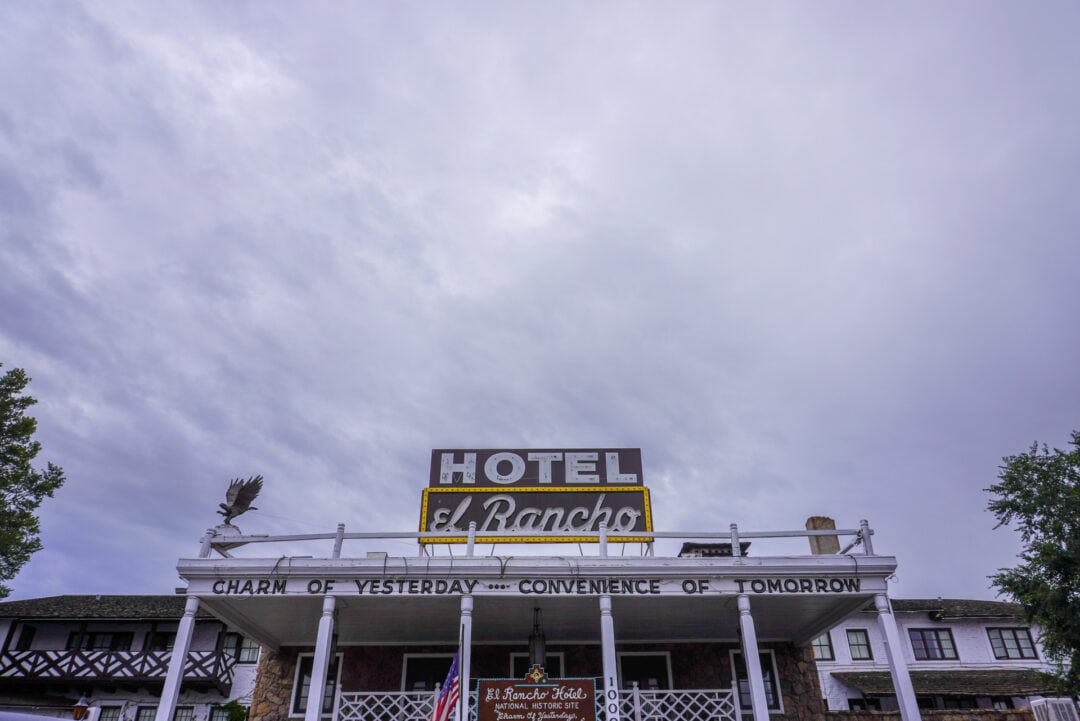
Before heading into Arizona, I stopped in Gallup to admire the historic El Rancho Hotel and say “howdy” to the cowboy Muffler Man at John’s Used Cars.
Original route mileage: 401 miles (645 kilometers) Must-see highlights: Chief Yellowhorse Trading Post, Petrified Forest National Park, Jackrabbit Trading Post, Standin’ on the Corner Park, La Posada Hotel, Two Guns, Twin Arrows Trading Post, Delgadillo’s Snow Cap, Hackberry General Store, Cool Springs Gas Station
In just over 400 miles, the Arizona stretch of Route 66 packs in so many must-see stops—including ghost towns, a national park, vintage service stations, interesting architecture, and roadside attractions—that it might be worth budgeting in some extra time to make sure you don’t miss anything. If you can, add an additional day to your itinerary for a detour to the Grand Canyon as well.
You’ll know you’ve entered Arizona when you see the big yellow signs for Yellowhorse , a Navajo-owned trading post set against a dramatic red rock backdrop. Both Yellowhorse and the neighboring Teepee Trading Post are perfect places to stop for souvenirs, photos, and snacks.
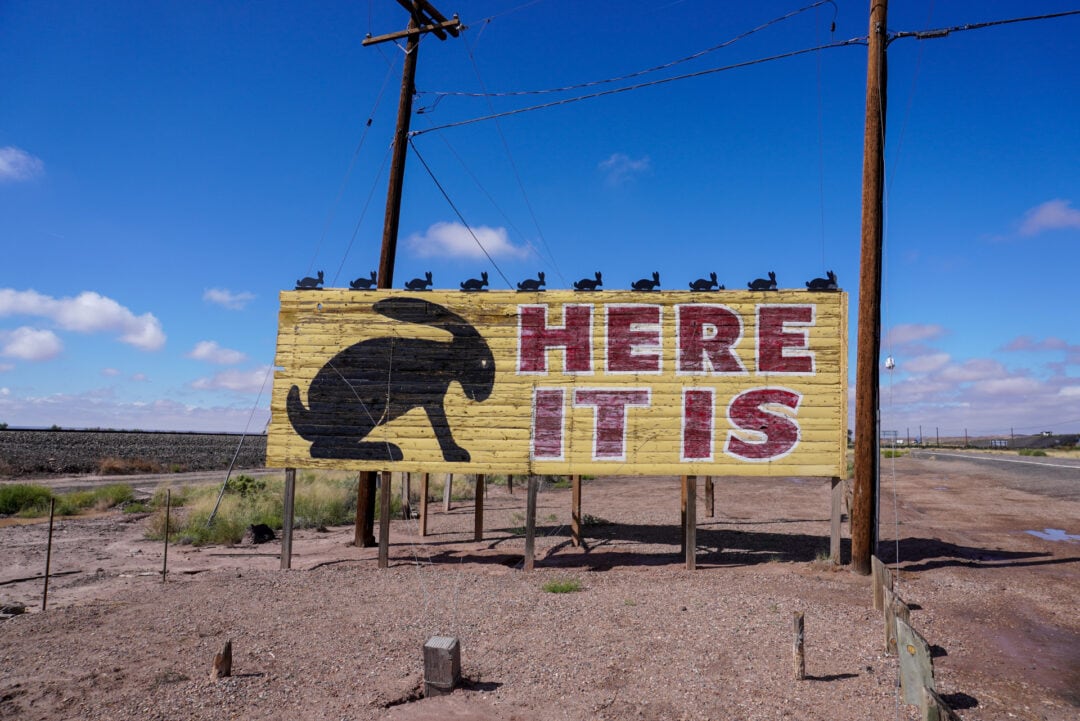
My next stop was Petrified Forest National Park , the only national park to have a section of Old Route 66 preserved inside it. Exploring the entire park can easily take a full day or more—but for those only interested in the Mother Road marker, it’s located in the northern part of the park, a 20-minute ride from I-40 along a scenic road (note that you will need to pay the park entrance fee to access it).
Arizona has several towns that have gone all in on their Route 66 legacy, including Holbrook, Winslow, Seligman, and Kingman. But one of the more intriguing stops along the entire Mother Road is located off I-40 right in between Holbrook and Winslow. Those who’ve been paying attention may have noticed a few bright yellow mileage signs at other locations along the route. These all point to the Jack Rabbit Trading Post , an unassuming roadside souvenir store, and you’ll know you’ve arrived by the massive “Here it is” billboard.
Some other highlights in the Grand Canyon State include standing on the corner in Winslow, exploring the ruins of the Two Guns ghost town, grabbing a sundae at Delgadillo’s Snow Cap in Seligman, and riding the Oatman Highway—not for the faint of heart, it features 191 curves in 8 miles, a narrow roadway with no guardrails, and roaming burros that tend to be standing in the middle of the road as you’re coming around a tight turn.
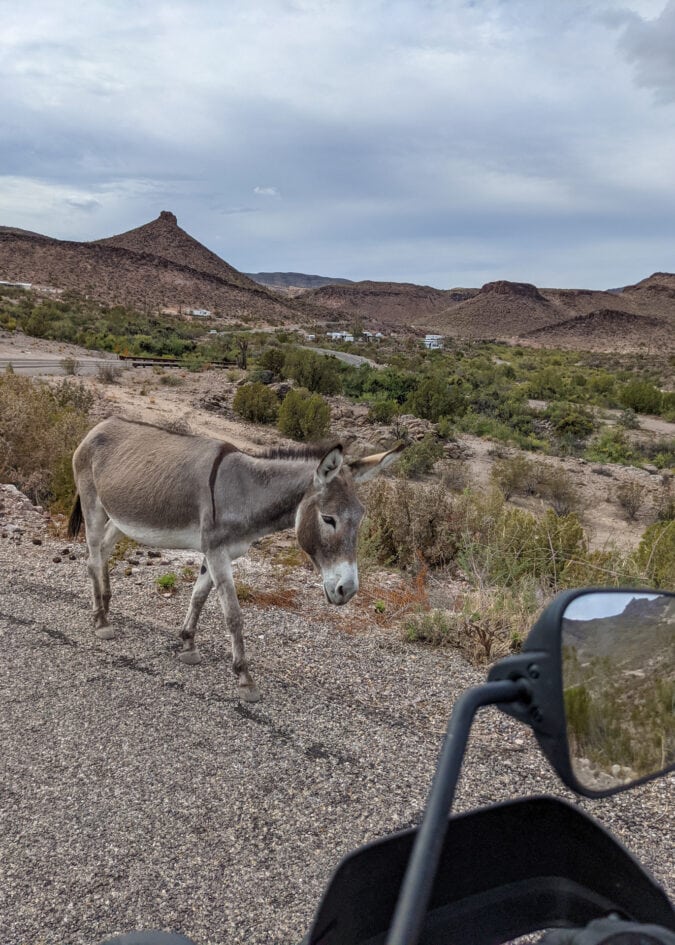
The Arizona section of Route 66 also contains what is probably the most drastic change in climate you’ll find in a single state during your trip. On one of the days I spent here, I woke up to 45-degree weather in Flagstaff. A few hours later, as I was crossing the Colorado River and making my way into California, the temperature was closer to 95 degrees Fahrenheit. Make sure you’ve packed layers, or chances are you’ll be uncomfortable at some point.
Related: Lured by gold and ghosts, visitors just can’t quit the tiny mountain town of Oatman, Arizona
Original route mileage: 314 miles (505 kilometers) Must-see highlights: Roy’s Motel and Cafe, Amboy Crater, Calico Ghost Town, Elmer’s Bottle Tree Ranch, First Original McDonald’s Museum, Wigwam Village Motel No. 7, Aztec Hotel, Santa Monica Pier
The California section of Route 66 starts in Needles. As I was grabbing food at the local Wagon Wheel Restaurant, I noticed a hand-written sign inside, summing up the town: “Needles, California, hot spot known for absolutely nothing; 20 miles from water, 2 feet from hell.”
Heading west through the California desert, the first can’t-miss stop on this part of the route is Roy’s Motel and Cafe in Amboy. This gas station and souvenir shop is a popular stop for photos thanks to its iconic—and recently restored—neon sign. Nearby you’ll also find Amboy Crater , a 250-foot-tall volcanic cinder cone, where you can hike by lava lakes, basalt flows, and collapsed lava tubes.
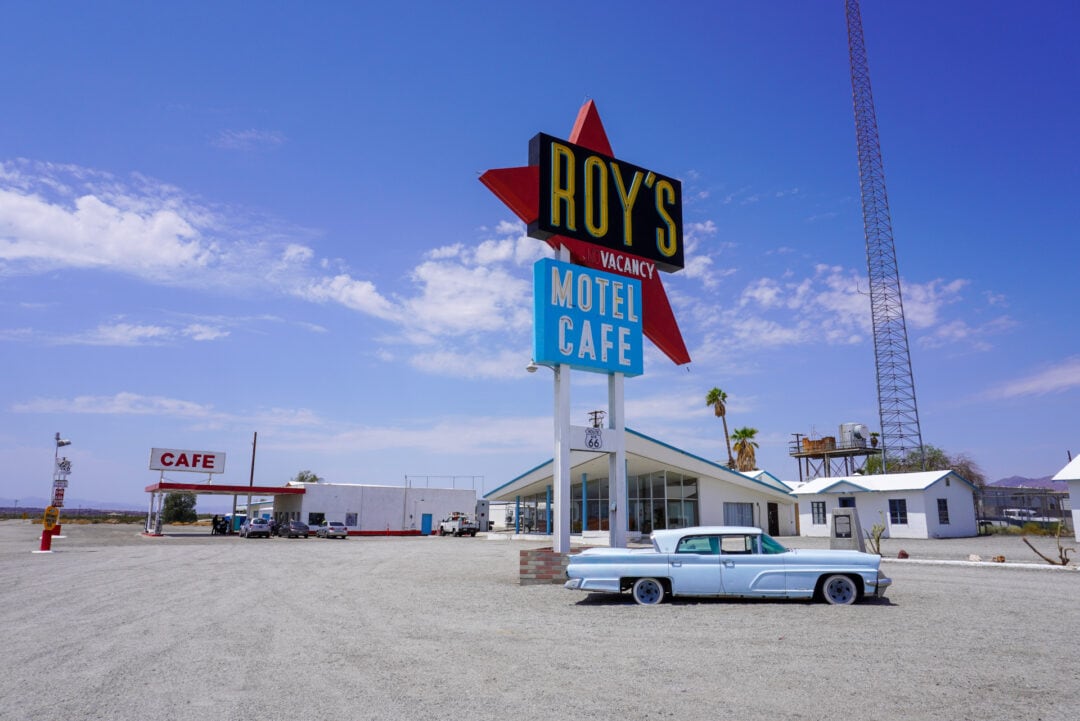
Make a pit stop at Calico Ghost Town , walk through the glass forest at Elmer’s Bottle Tree Ranch , and get nostalgic at the First Original McDonald’s Museum before it’s time to leave the more quiet and remote parts of this trip behind and enter the busy city streets of Los Angeles.
As you get closer to the coast, you may experience something you haven’t seen since you left Chicago: traffic. Los Angeles has a lot of it—however, since lane filtering is legal in the state, you can easily bypass it on a motorcycle. Just go slow and stay alert.
The western half of California’s Route 66 passes through several bustling cities and towns, where strip malls and chain restaurants greatly outnumber quirky roadside attractions. But keep your eyes peeled for mid-century architecture, neon signs, and vintage service stations along this stretch, including Cucamonga Service Station ; built in 1915, it actually predates the route.
Unfortunately you can’t ride a motorcycle all the way to the finish line—but when you reach the Pacific Ocean, park your bike and walk to the end of the Santa Monica Pier to get a photo in front of the iconic “End of the Trail” sign. Congratulations, you made it.
Meet the Author

Roadtrippers
Roadtrippers helps you find the most epic destinations and detours—from roadside attractions to natural wonders and beyond.
- Related Articles
- Latest Articles
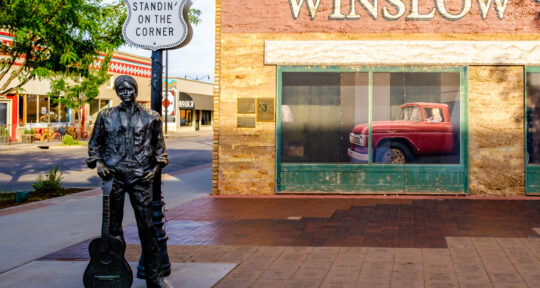
An African family finds new beginnings among the dead ends and detours of Route 66
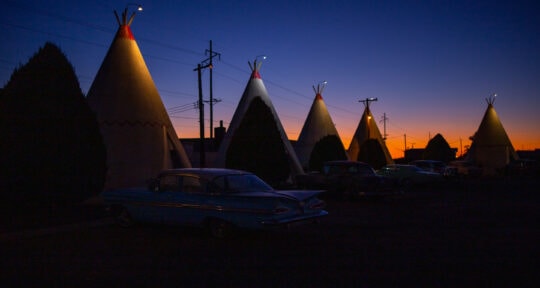
7 iconic Route 66 locations that inspired the makers of Pixar’s ‘Cars’
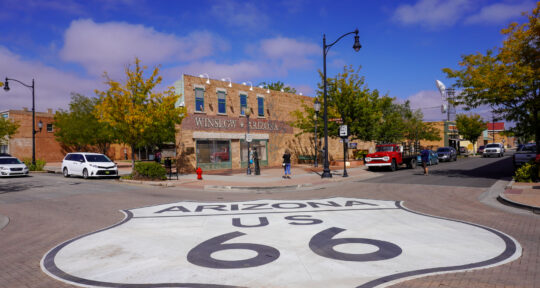
8 iconic pop culture locations on a Route 66 road trip

The best festivals in the U.S.

What’s the Best AI Trip Planner?

Course: RV Maintenance Made Easy
Get the most inspiring stories from the road sent directly to your inbox..

- Trip guides
- Trip Planner
- Sign up Log in Sign out
- Log in Sign out
- ROADTRIPPERS MEMBERSHIP
- RV RESOURCES
Plan your journey, find amazing places, and take fascinating detours with our app.
We couldn't find an existing Roadtrippers account using that service. Please try signing in with another option or create a new account with Roadpass.
We need your email address to send you trip itineraries and other updates.
- Skip to main content

- Uncategorized
The Ultimate Motorcycle Road Trip Packing List
Are you planning a motorcycle road trip? Then you’re in for an enjoyable time. Road tripping on your bike is an excellent way to visit scenic locations while celebrating your love for riding.
However, bringing all the necessary supplies on your trip is essential to having the best experience. To help you out, we’ve compiled a list of all of the most critical items you’ll need for your trip. Read on to learn our ultimate motorcycle road trip packing list.
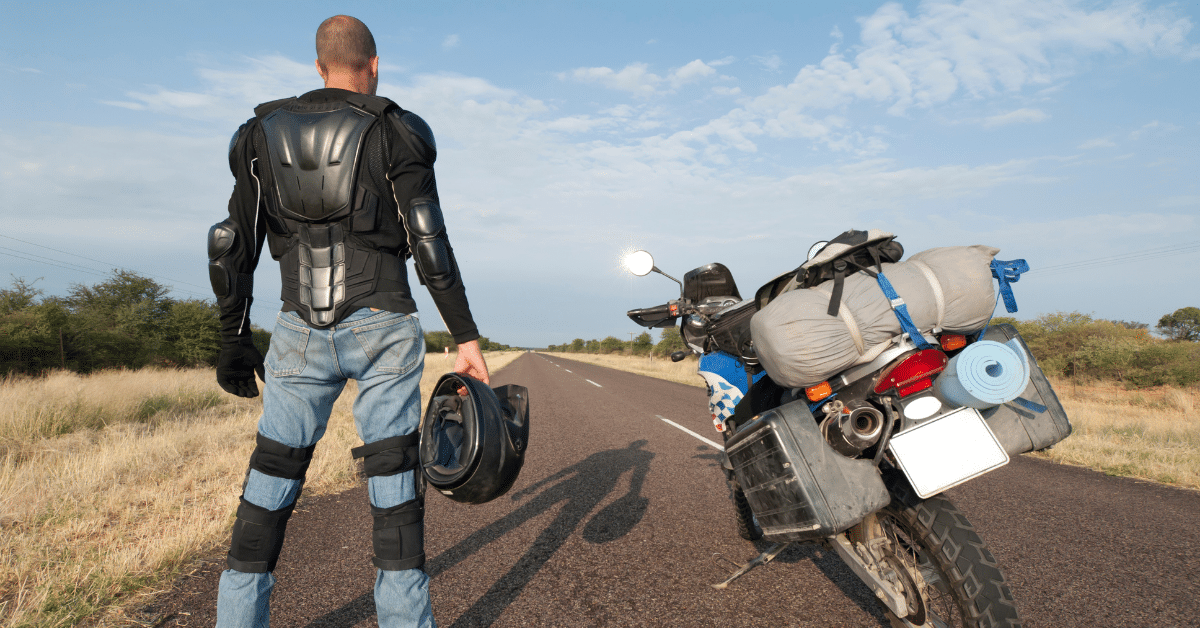
If you forget everything else on your packing list, you should at least make sure to bring a helmet. Wearing a helmet every time you ride your bike is essential. However, on road trips, when you may be tired and have more exposure to the open road, a helmet is even more crucial to staying safe.
If you’re planning to buy a new helmet for your road trip, we recommend choosing one that is breathable and comfortable so you don’t feel tempted to remove it throughout your journey. However, any DOT-approved helmet should keep you safe
2. Tool Kit
If you do not typically keep a toolkit in your bike, now is the time to bring one along. When you go on solo road trips, you may not have friends or family members nearby to help you fix a flat tire or jump a dead battery. You also won’t have any other means of transportation to get to the nearest store and purchase the tools you need.
Your tool kit might include:
- A wrench and socket set
- A flat tire repair kit
- An air compressor
- Wheel removal tools
- Screwdrivers
- Spare parts
3. Clothing
Along with your helmet, you should also bring protective, comfortable clothing to wear while riding your bike. Specifically, you should be sure to pack the following articles of clothing:
- A protective jacket
- Riding pants
- Gloves
- Riding socks
These protective layers can help keep you warm on windy rides and provide a barrier against rocks and other debris you may encounter on the road.
4. Wallet and Paperwork
You should always bring your wallet, vehicle registration, and ID with you when you ride your bike. However, if you’re planning a longer motorcycle road trip, you may want to take some additional paperwork along, such as:
- Copies of your driver’s license
- Documents with your emergency contact information
- Insurance cards
- Extra cash or bank cards
- Health information
These items can be helpful if you experience a crash during your road trip and cannot share your contact information with emergency responders. Alternatively, having extra cash and cards on hand can ensure that you do not become stranded if you lose your wallet.
5. GPS or Maps
Some motorcyclists prefer to use paper maps for navigation on road trips. If you do plan to use paper maps, we recommend only referencing them while parked or stopped at traffic lights.
Alternatively, you may find it easier to use a GPS to plan your route and adjust to changes in traffic in real-time. If you choose to use your smartphone as a GPS, be sure to silence texts and other notifications to eliminate distractions while riding.
6. Hygiene Items
Of course, you should also pack hygiene and toiletry items for your trip. These may include:
- A toothbrush
- A shaving kit
- Hand sanitizer
7. Safety Items
Finally, we recommend taking along a few extra items as an added precaution for your trip. For example, you may want to pack:
- Protein bars or other filling snacks, in case you become stranded
- A flashlight
- Extra batteries
- A bike lock
- A location tracker for your family members or loved ones
- A motorcycle cover
- A spare key
And finally, don’t forget your free Law Tigers Riders Benefit Package .
Following the above motorcycle road trip packing list should help you pack everything you need for your upcoming trip. Once you hit the road, riding safely and cautiously is essential to avoiding accidents. However, if you find yourself a motorcycle accident victim, you can call our Law Tigers team at 1-888-863-7216 for assistance.
further reading...
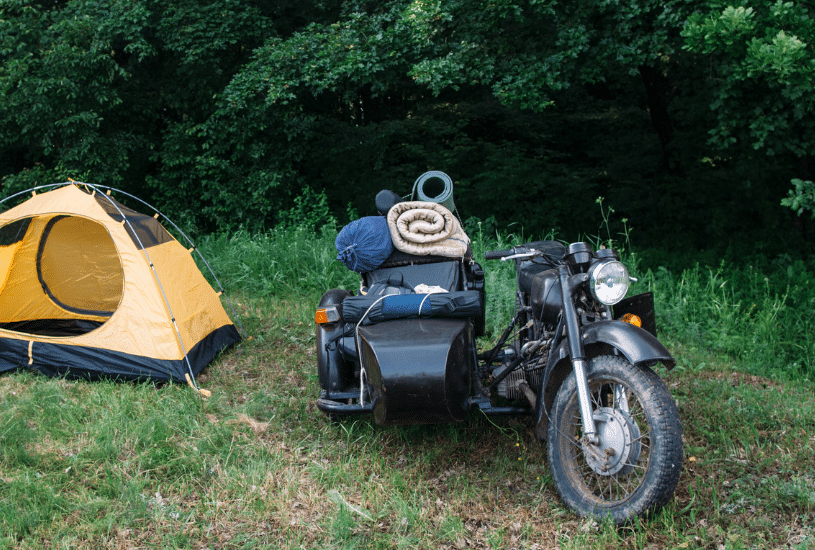
Motorcycle Camping in Virginia: Top Spots and Tips
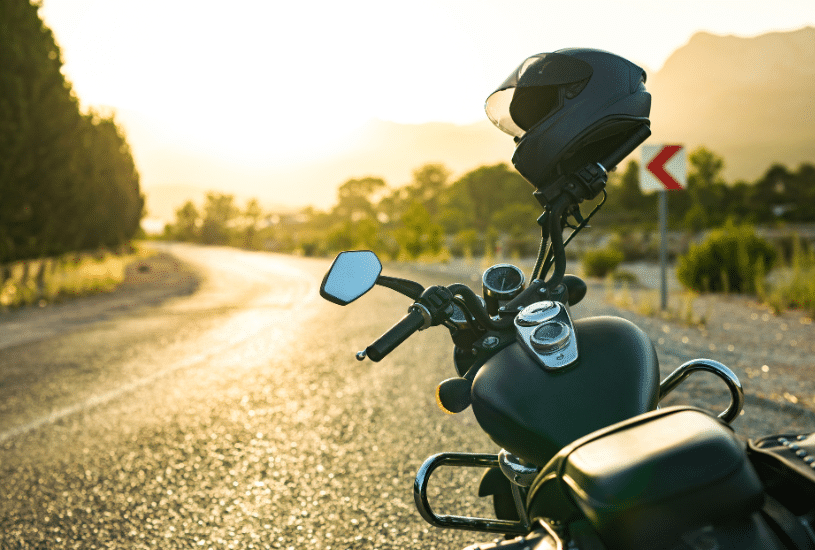
6 Alabama Motorcycle Safety Tips for Riding in Hot Weather
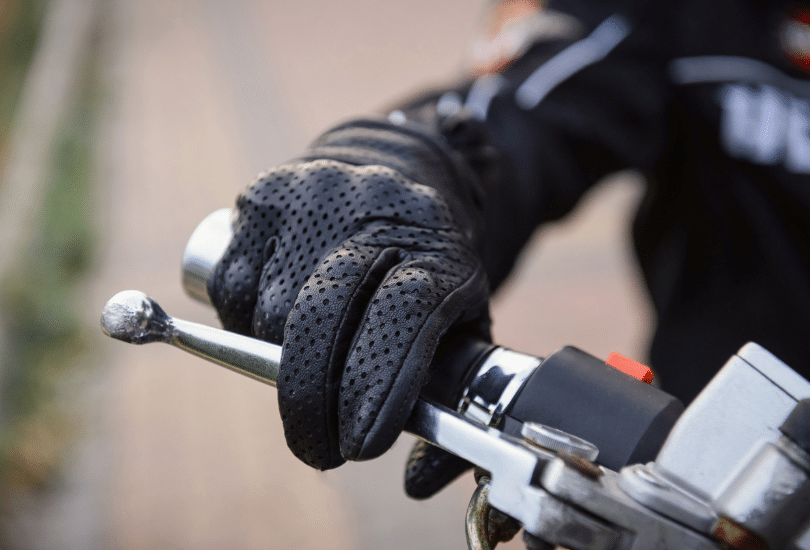
Arizona Motorcycle Laws Every Rider Should Know
- All Products
- Beanie Helmets
- Full Face Helmets
- German Helmet
- Open Face Helmets
- Polo Helmets
- Sun Glasses
- Harley Davidson Helmets
- Motorcycle Gloves
- TRACK YOUR ORDER
Motorcycle Road Trip Essentials
Before you embark on any motorcycle road trip, certain motorcycle road trip essentials are a must-have. When going on a road trip with your motorcycle, there are several things you already you will be taking. However, there are certain things that you wished you had a particular item.
Whenever you are out on the open road, you need to be more self-reliant and be prepared for any outcome. To help you, we have made our research and come up with a comprehensive road trip essentials de motorbike. This is a list you will be happy to always have with you whenever you are on a road trip with your motorbike.
Top Essentials on a Motorcycle Road Trip
Power banks .
This is an indispensable item to have while on your road trip. You wouldn’t want a situation where your phone battery is dead, and you can’t power it back up. While on a road trip, it is very dangerous to have a “dead” phone. There may be a security situation that will warrant you call for help. Therefore, having a power bank while going on your motorbike road trip is very important.
An Extra Phone Battery
Another important motorcycle road trip essential is a backup phone battery. If you can’t have a power bank, an extra phone battery can suffice. However, it all depends on the length of time you intend to spend on your trip. Never embark on any road trip without a backup for your phone battery. It can be your lifesaver in dire situations.
Long Cable Lock For Your Helmet And Jacket
A long cable with a length of 24-36 inches with loops on each end comes in handy when you are on your motorbike road trip. It is a great way to lock up your jacket and helmet to your bike when you don’t want to carry it around with you. You can slide it through the sleeves of your jacket and the visor opening of your helmet. This way, you will secure it with a disc lock that doubles as extra bike security.
This is one of the motorcycle road trip essentials that you hardly think of having on your trip. You will not know the importance of having a spare key until you lose your keys during the trip. There are a few good places to keep your spare key. You have it zip-tied inside a storage compartment, duct-tape it to the bottom of your passenger seat.
An Extra Helmet
You may think it is not important to have an extra helmet with you while going on your motorbike trip. There is the possibility that you may run into a stranded individual along the road. Beanie helmets are always light and easy to carry around.
Ziplock Freezer Bag
You may have a good water-resistant motorcycle gear while on your road trip. However, you could be caught off guard with some unexpected rainfall while on your road trip. There are certain items you cannot risk getting wet, like your cell phone and wallet. A Ziplock freezer bag is the perfect dry bag for all these small items you want to protect from showers.
Microfiber Rag
This is an essential item you can’t afford to leave behind while embarking on your motorcycle road trip. There will be a time you go outside on a cold morning and find your seat, grips, and gauges wet with condensation. In such situations, you will be glad you have your microfiber rag. It also serves to clean surfaces, wipe off the hot water, or a rag when you are doing road maintenance. This is a must-have item for your motorbike road trip.
You never know when your bike might develop some fault and will need maintenance. Therefore, having your tool kit with you while going on a motorbike trip is essential. Always keep a small travel kit with you, and a multi-tool is always something you need to have around. You wouldn’t want to be stranded because you don’t have a tool kit to repair a fault on your motorbike.
A Flashlight
This is arguably the most overlooked but most essential tool to have while on your motorbike road trip. You can’t do anything if you are caught in the dark. It is also important for you not to rely on your cell phone light because it drains the battery faster. You can get a small but powerful LED light or a headlamp. Always keep it handy because when its need arise, you will be glad you have it.
Having a map is good, but a GPS unit is great and a more convenient way of knowing where you are at every point in time. Meanwhile, if you have a cell mount on your motorbike, you use your cell phone and save yourself some money. However, it is great to have a motorcycle specific GPS unit. Most of these motorcycle GPS units come with big touchscreens that are designed to work with your motorcycle gloves. A Bluetooth helmet communicator will be a great asset because you can connect it to your navigation system to hear the directions.
A Portable Air Compressor
This is highly essential because you might never know when you will get a flat tire. You can re-inflate the tire with your portable air compressor. This tool can help you get to a garage, irrespective of where you punctured your tire. This comes in handy for adventure riders who deflate their tires while off-roading but would need to re-inflate for the road.
Emergency Communicator
This is a must-have, especially when you are travelling all by yourself. Nobody prays to have an accident, but you need to be prepared whenever you are on a trip. If you crash on a lonely route or gets trapped under your motorbike, you can use this emergency communicator to reach out to your friends, family members, or rescue services. Although it is something, you don’t pray to need while on your motorbike trip, you must always have it on you while travelling on your bike.
Conclusion
These motorcycle road trip essentials will be of great help to you if you always take them along for your motorbike trips. For your contributions, kindly use the comment section below.
Leave a comment
Please note, comments must be approved before they are published

Motorcycle Road Trips: Top 10 Destinations Every Biker Should Visit
T here's nothing quite like the feeling of anticipation when setting off on a motorcycle road trip. From planning your itinerary to choosing your equipment, strapping down your bike, and donning your protective gear, the excitement builds as you rev your engine and pull away into the great unknown. The combination of the open road, the surrounding scenery, and the hum of the engine is an immersive experience that all bikers appreciate. Add to this the element of adventure, and the draw is irresistible.
Good preparation is vital to enjoying a successful motorcycle road trip. Make a checklist that includes all essentials and safety items so nothing gets left behind. It is a good idea to check local regulations and weather conditions, and safety should always be your top priority, so wear appropriate gear and ensure that your bike is in good working order before you depart.
Motorcycle road trips are an exhilarating way to explore new places and experience your natural surroundings. It's easy to pull over and take a break, grab a bite to eat, admire the scenery, and take a few photos whenever you feel like it. Here, we have selected locations with proper thoroughfares accessible to all motorists but well suited to bikers for their scenic views and serpentine twists and turns. Every biker should consider the following 10 fantastic destinations for their road trip adventures.
Read more: The 10 Best Harley-Davidson Motorcycles Ever Made
Pacific Coast Highway (California, USA)
Whether you are headed north or south, the Pacific Coast Highway promises a spectacular experience. Known for its breathtaking coastal views, the highway occupies around three-quarters of the California coastline on California State Route 1. It offers bikers a relaxed cruise of around 655 miles, but if you are feeling adventurous, you can join Route 101 at its northern terminus, which will take you to the Canadian border. Head south, and you can merge with I-5, which terminates at the Mexican border. However, the highway itself has plenty to offer and deserves a few days to experience it properly.
The PCH has a storied history as it was built using labor from Folsom and San Quentin prison inmates, who were paid the miserly sum of 35 cents per day for their backbreaking efforts. It formed after the consolidation of roads linking Los Angeles and San Francisco with other coastal settlements and finally opened in 1937. Throughout your trip, you'll pass through delightful towns like Big Sur and Carmel, experience the natural wonders of the giant Redwood forests and the Oregon Sand Dunes, and enjoy stunning vistas of the Pacific Ocean.
The roads are well-paved throughout the Pacific Coast Highway, and the trip could best be described as leisurely, with plenty of places to stay and sightseeing opportunities along the route. Don't forget to bring comfortable shoes and a daypack for essentials when you're not on the road, and bring wet-weather gear, especially if you are thinking of riding in the fall or winter months. Temperature ranges can vary widely in the state of California, so you should also consider appropriate clothing while planning your trip.
Scottish Highlands (Scotland)
The Highlands of Scotland are a little off the beaten track, even by European standards, but the rewards are most certainly worth it. Using Edinburgh's hilly, granite capital as a jumping-off point, you can enjoy the nightlife and historic attractions and even rent a motorcycle before embarking on a trip that could take you over a thousand miles into the Scottish interior and its stunning islands. The rugged terrain and breathtaking landscapes make it an excellent destination for motorcycle touring, and you'll get to explore historic castles and lochs (home to the elusive Loch Ness Monster) as you ride through the remote and sparsely populated countryside.
You'll find plenty of campsites across the country if you're traveling in the summer months (which is highly recommended, given Scotland's unpredictable temperate climate), as well as an assortment of hotels and B&Bs if you aren't keen on "roughing it" — although these can be pretty expensive. Roads are generally well-paved but are almost exclusively single-lane country thoroughfares, and speed limits are understandably low, leaving you plenty of opportunities to admire the scenery as it passes by. Livestock outnumbers people significantly, so be wary of sheep and the odd Highland cow as you navigate rural areas.
Points of interest might include John O' Groats (mainland UK's most northerly point), the Isle of Sky, with its dramatic scenery, the stunning A87 roadway, the Cairngorm Mountains, Loch Ness, and the North Coast Road. Don't forget to pack mosquito repellant, especially during summer, and expect to get rained on at any time of year. Remember, there are many remote destinations in Scotland, and due care should be taken on your motorcycle, especially if traveling alone.
Sturgis Motorcycle Rally (South Dakota, USA)
The Sturgis Motorcycle Rally has become a Mecca for motorcyclists, especially those who favor the great American brands. Every year, the biking community descends upon this small town in South Dakota's Black Hills for 10 days and nights. Here, it partakes in several scheduled bike tours, live music, events, competitions, and plenty of food and drink at this celebration of life on two wheels.
The Sturgis Motorcycle Rally has been around for a while, established in 1938 as a series of racing and stunt-riding events. It has since grown into an internationally recognized festival that regularly attracts over half a million attendees. A choice of accommodation is available, including hotels, cabins, RVs, and camping options. Once settled in, participants can enjoy several planned bike tours, including the Mayor's Ride, Police Chief's Ride, and Veteran Warrior Ride, which require registration or a donation to join.
Each pass by various local landmarks and points of interest, such as Mount Rushmore, Custer State Park, the Devil's Tower, and the Crazy Horse Memorial. If you'd rather go solo or travel in a small group, numerous circuits, as outlined in official ride maps, can be completed over a few hours.
If you plan on heading to the Sturgis Rally, plan in advance and book your accommodation early to avoid disappointment. As with all festivals, it's never a bad idea to stick to a daily budget and reserve money for unexpected expenses. As the rally takes place in early August, the weather is usually pleasant in Sturgis at this time of year, but always plan for the worst-case scenario and include a rain jacket along with your sunblock.
Amalfi Coast (Italy)
Italy has so much to offer its visitors, including Renaissance artworks, fine food and wine, museums, café culture to rival that of France, and stunning scenery. Of course, it is also a top motorcycle destination and home to venerated brands Ducati, Moto Guzzi, MV Agusta, and Aprilia.
The country's Amalfi Coast provides a dramatic coastal ride with cliffside roads overlooking the Tyrrhenian Sea that makes up part of the Mediterranean. Here, you'll explore charming towns like Positano, Amalfi, and Ravello along the way, with balconied houses overhanging their winding streets. These open up to well-paved roads that meander through scattered vineyards, with mountainous hillsides lined with Cypress trees inland.
To tour the Amalfi coast, you could start in Rome, where motorcycle rental shops are abundant, and cruise south through the Campania region before arriving in Naples. This is the jumping-off point for most Amalfi coast trips and is home to Mount Vesuvius and the ruins of Pompeii a bit further south for some unforgettable sightseeing. Afterward, head south and travel from Sorrento to Salerno, taking in all the wonders of the Amalfi Coast along the way. You can take the highway back to Rome from Salerno in just a few hours to complete your tour, which can take as little as two days, depending on your schedule.
Italy is a year-round destination, but the best time to visit is early or late summer to avoid searing temperatures. Bring some Euros in cash to pay for tolls getting to and from the Amalfi Coast, and perhaps most importantly, relax and don't rush the experience, as there is much to see and do over its short 50-kilometer distance.
Transfagarasan Highway (Romania)
Eastern Europe offers some fantastic travel opportunities as part of a more extensive motorcycle tour, with cities like Prague, Budapest, and Bucharest boasting stunning architecture and culture at far more affordable prices than their Western European counterparts. The latter of these, Bucharest, is the point of departure for most people embarking on a bike tour of the Transfagarasan Highway. This mountain pass in the Carpathian Mountains offers a varied and beautiful ride, taking you through some dramatic scenery and passing through many tunnels and hairpin turns at elevations of up to 6,700 feet.
Jeremy Clarkson, formerly of "Top Gear," once described the Transfagarasan Highway as possibly the best road in the world, and for once, he may not have been exaggerating. The number of serpentine twisties and steep descents that cut through the mountain passes make this the perfect road for bikers, and as a relatively new road created as a military thoroughfare during the last days of Communist Romania, it is well maintained. The Transfagarasan Highway spans the historical provinces of Wallachia and Transylvania, home to the fictional Count Dracula and his real-life inspiration, Vlad the Impaler, who lived at Poenari Castle, which you can visit along the way.
The Highway is closed for much of the year, between October and June, so plan your trip accordingly. Adverse weather conditions can strike year-round, resulting in road closures, so check information boards in towns and online before departure. Heavy rain and poor visibility are common throughout the high passes, so make sure you travel with a rain suit and treat your visor with anti-fog spray or use a Pinlock for improved vision while you ride.
Ruta Cuarenta (Argentina)
Ruta Cuarenta, or Ruta 40, is a vast 3,000-mile road almost the length of Argentina. This iconic highway runs alongside the Andes, offering riders a chance to experience the country's diverse landscapes, from the deserts of Patagonia in the south to the wine country of Mendoza in the north and plenty of wonders in between. You will encounter 27 mountain passes that can reach over 13,000 feet, the vast Patagonian Steppe, 18 large rivers, and 20 national parks as you enjoy this famed bucket list motorcycle trip.
Any biker attempting to undertake such a trip should already be aware of the amount of planning required. Essentials should include comprehensive protective gear, warm and cool weather clothing, and practical bike repair and medical items. There can be 200 miles between fuel stops on the Patagonian Steppe, so know your bike's limitations and plan to carry extra gas. The roads here are mostly unpaved, so use appropriate tires with off-road capabilities.
The best time to travel on Ruta Cuarenta is in the Argentine spring between November and December. Leave it any later, and winter encroaches upon the south, so bear this in mind when planning your schedule. As one of the longest overland thoroughfares in the world, you should expect your trip to take at least a couple of weeks, and cellphone coverage is sparse outside of populated areas.
Great Ocean Road (Australia)
Australia is one of the least densely populated countries on Earth, and it offers some serious adventure destinations across its vast and varied landscape, as well as plenty of exotic flora, fauna, and wildlife, much of which is unique to the continent. The Great Ocean Road runs along Australia's southern coast and offers stunning ocean views, lush rainforests, and iconic landmarks like the Twelve Apostles, 12 limestone stacks jutting from the ocean.
The Great Ocean Road is situated just south of Melbourne, and it is well-paved throughout, making this route well-suited to all two-wheelers, whether you ride a 105cc Australian Postie Bike or a BMW R 1250 GS. Leaving Melbourne early, you can make it to Port Campbell in a day, with plenty of stops for pictures and rests. The town is just past the Twelve Apostles and at the road's furthest point, so you can take in a stunning sunset at the landmark and head for some good food and accommodation for the night before heading back to Melbourne the next day.
While the Great Ocean Road is one of Australia's more relaxed motorcycle tours, it is not without its hazards. The steep hillsides often leave scattered rocks and debris on the road. Bear this in mind, especially as you enter corners. There are many corners along the road's length, with extreme cambers and hairpins. Wherever you ride on the continent, you should watch for wildlife on the road and monitor your speed to avoid collisions. As is typical when biking, humans pose one of the greatest threats, so watch for tourists driving erratically, especially when pulling in and out of viewpoints or picnic areas along the route.
Tail Of The Dragon (North Carolina/Tennessee, USA)
While it may be the shortest motorcycle road trip listed here, the Tail of the Dragon is among the most exhilarating. This 11-mile stretch of US Route 129 traverses the border between North Carolina and Tennessee. It is a magnet for motorcycle enthusiasts, especially sport bike riders, with 318 curves, making it one of the most challenging and technical riding roads in the United States.
Running almost parallel to Calderwood Lake, the Tail of the Dragon twists through dense forest as it slices through the mountains and past the Cheoah Dam, the location of Harrison Ford's daring leap in "The Fugitive." While the scenery and surroundings are impressive, this stretch of road is all about the ride as you grip the handlebars and negotiate its curves as safely as possible. Many riders have met their deaths at the Tail of the Dragon, and it is essential that you know your limits, know your bike's capabilities, and pay attention to the weather and road conditions as you ride.
The best time to attempt the Tail of the Dragon is either in the summer or fall, and there are plenty of places to eat, drink, and stay the night in the surrounding area. Ensure you perform maintenance on your motorcycle before setting off, including checking your brakes and tire pressure, to help avoid any spills on the road.
[Featured image by Washuotaku via Wikimedia Commons | Cropped and scaled | CC BY-SA 4.0 ]
Cabot Trail (Nova Scotia, Canada)
Canada has a shorter riding season relative to destinations nearer the equator. Still, with its many picturesque, well-maintained, sparsely-populated highways, it is among the most rewarding countries to travel by motorcycle. The Cabot Trail is a scenic road that winds through the Cape Breton Highlands, offering sweeping ocean views, lush forests, and the chance to spot wildlife like moose and bald eagles. The trail is 186 miles long and hugs the Atlantic coast of Cape Breton Island in a well-paved circuit.
The Cabot Trail takes you up and down in elevation and through shade and light. You will experience many changes in temperature along the way, so bring appropriate clothing. There are plenty of places to stop for breaks and sightseeing, but make sure you buy a $10 Park Pass if you want to take a break at any point, or you will incur a fine if checked.
The best time to visit the Cabot Trail is from early May to late September, and the general consensus is that counter-clockwise is the preferred direction of travel. It's best not to ride in the evening to avoid moose and fill up gas at a larger town, as those further down the trail may not sell the premium fuel that our cherished bikes prefer.
Himalayan Circuit (India)
For an epic adventure, consider riding through the Himalayas. As the tallest mountain range in the world, this barrier separating the Indian Subcontinent and the Tibetan Plateau is steeped in mystery, Buddhist spirituality, geological wonders, and breathtaking views of some of the world's highest peaks.
Ride north from New Delhi, or take the bus to Manali. You can rent motorcycles in either of these locations, usually a native Royal Enfield model, such as the aptly named Himalayan. From Manali, spend a few days acclimatizing to the altitude (6,398 feet) in preparation for much higher elevations later. Set off through the foothills and scale the Rohtang La (13,051 feet). Refuel in Keylong (the next gas station is over 200 miles away!) and stay the night in a tent in Sarchu camp. The next day, you will head to the remote city of Leh with its palaces, ancient monasteries, and stupas, via challenging terrain, high mountain passes, such as Tanglang La (17,480 feet), and the 21 hairpin bends of the Gata Loops.
From Leh, you can spend a few days touring. Head north to the Nubra Valley, East to Pangong Lake, or continue your voyage west to Kashmir, passing through lush green valleys, the 11th-century monastery at Lamayuru, and the city of Kargil. Once you reach Kashmir, stay on a traditional houseboat in Srinagar with a local family and drink in the incredible scenery before completing your circuit.
The high passes are closed for much of the year, and it is best to travel the Manali–Leh Highway between June and September. Clothing and additional fuel are essential, as is plenty of money in cash. Permits are required for some locations (arrange with a local tour guide) and prepare to be amazed by this unforgettable trip of a lifetime.
Read the original article on SlashGear .
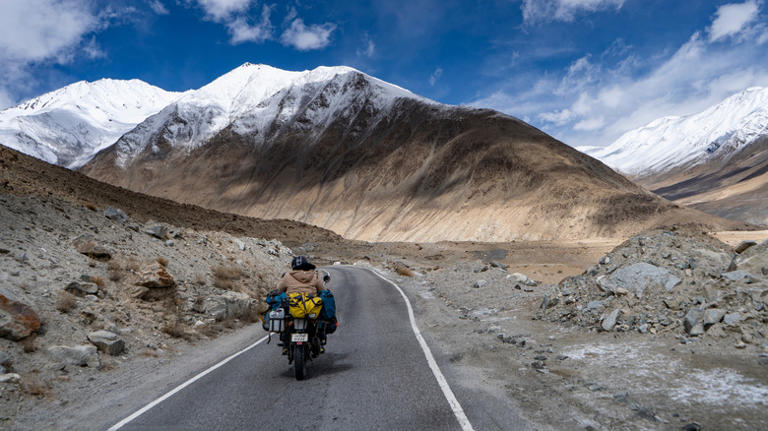
- Yekaterinburg
- Novosibirsk
- Vladivostok

Stary Oskol
- Tours to Russia
- Practicalities
- Russia in Lists
Rusmania • Deep into Russia
- Belgorod Region
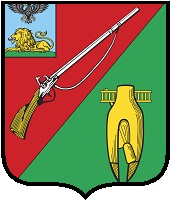
Stary Oskol is the Belgorod Region’s second city by population and today consists of two main parts: the historical centre on the hill and the new centre made up of blocks of housing estates (mikroraiony). It is named after the river on which it stands on; the word stary (old) was added to distinguish it from the new settlement of Novy Oskol (New Oskol). Just outside the city is an impressive cave-monastery complex.
Top recommendations in Stary Oskol
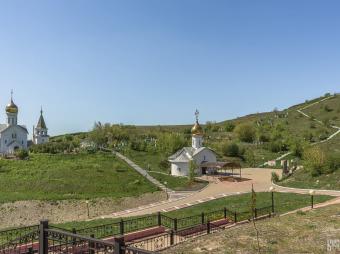
Kholkovsky Monastery
Travel outside the city to the nearby settlement of Kholki to visit the Kholkovsky Monastery - an impressive cave monastery.
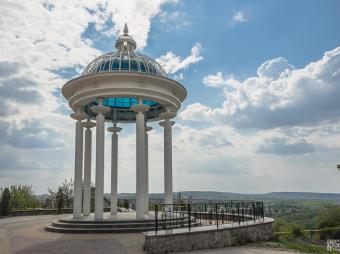
Historical Centre
Walk around the historical part of the city, located where once a wooden fortress stood to protect Russia’s southern borders, and visit the museum here.

War Memorials
Have a look at all the war memorial in the city - in recognition of Stary Oskol’s status as a City of Military Glory.
Plan your next trip to Russia
Ready-to-book tours.
Your holiday in Russia starts here. Choose and book your tour to Russia.
REQUEST A CUSTOMISED TRIP
Looking for something unique? Create the trip of your dreams with the help of our experts.
Plan Your Trip to Stary Oskol: Best of Stary Oskol Tourism
Essential stary oskol.
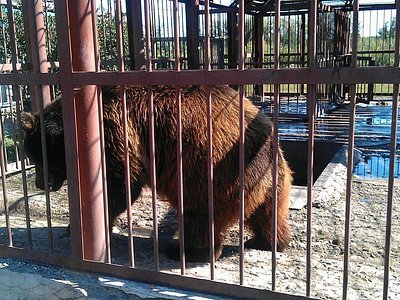
Stary Oskol Is Great For
Eat & drink.

- Iceberg Premium Hotel
- Restaurant Triumf
- Bakery Shu-Shu
- Party Bar Aisberg
- Starooskolsky Zoo
- Temple of St. Sergius of Radonezh
- Stary Oskol Art Museum
- Monument to the Founders of Stary Oskol
- Stary Oskol Theater for Children and Youth

- Bahasa Indonesia
- Eastern Europe
Information
Find all the information of Stary Oskol or click on the section of your choice in the left menu.
- Update data
Stary Oskol Demography
Information on the people and the population of Stary Oskol.
Stary Oskol Geography
Geographic Information regarding City of Stary Oskol .
Stary Oskol Distance
Distance (in kilometers) between Stary Oskol and the biggest cities of Russia.
Stary Oskol Map
Locate simply the city of Stary Oskol through the card, map and satellite image of the city.
Stary Oskol Nearby cities and villages
Stary oskol twin towns, sister cities.
The City of Stary Oskol has international agreements with its different pairings.
Stary Oskol Zone
Time zone of Stary Oskol.
Stary Oskol Weather
Weather forecast for the next coming days and current time of Stary Oskol.
Stary Oskol Sunrise and sunset
Find below the times of sunrise and sunset calculated 7 days to Stary Oskol.
Stary Oskol Hotel
Our team has selected for you a list of hotel in Stary Oskol classified by value for money. Book your hotel room at the best price.
Stary Oskol Nearby
Below is a list of activities and point of interest in Stary Oskol and its surroundings.
Nuclear power plant
Stary oskol page.

- Information /Russian-Federation--Belgorod--Stary-Oskol#info
- Demography /Russian-Federation--Belgorod--Stary-Oskol#demo
- Geography /Russian-Federation--Belgorod--Stary-Oskol#geo
- Distance /Russian-Federation--Belgorod--Stary-Oskol#dist1
- Map /Russian-Federation--Belgorod--Stary-Oskol#map
- Nearby cities and villages /Russian-Federation--Belgorod--Stary-Oskol#dist2
- Twin towns, Sister cities /Russian-Federation--Belgorod--Stary-Oskol#twintown
- Zone /Russian-Federation--Belgorod--Stary-Oskol#hour
- Weather /Russian-Federation--Belgorod--Stary-Oskol#weather
- Sunrise and sunset /Russian-Federation--Belgorod--Stary-Oskol#sun
- Hotel /Russian-Federation--Belgorod--Stary-Oskol#hotel
- Nearby /Russian-Federation--Belgorod--Stary-Oskol#around
- Page /Russian-Federation--Belgorod--Stary-Oskol#page
- Terms of Use
- Copyright © 2024 DB-City - All rights reserved
- Change Ad Consent Do not sell my data

IMAGES
VIDEO
COMMENTS
Welcome to the Motorcycle Trip Packing List: a full checklist of all the motorcycle travel gear you'll need for a trip and links to in-depth guides. ... This article provides a complete checklist of all the essentials you may need on your bike travels. ... Your list put many smiles on my face, being on the road for 38 years the right way (2 ...
What to Pack for a Motorcycle Trip - 25 Essentials. 1. Helmet. Safety should be your top priority, so a reliable helmet should be the first thing you pack when planning a motorcycle trip. With high review ratings, this helmet will protect your head and is also lightweight and compact, making it easy to take along with you.
The Dowco Guardian Ultralight motorcycle cover packs down tightly in a stuff sack, making it an ideal choice when packing space comes at a premium. And with a 75D rip-stop polyester construction as well as a UV and water repellent coating, it's protective against dirt, pollution, sunlight, and rain.
3. Take frequent snack breaks. Spending long hours on a motorcycle tends to make everything hurt at the end of the day. One way to help combat the worst saddle sores and muscle ache is to take frequent breaks. Don't just make 5-minute gas stops every 100 miles—you'll regret it the next day.
Image: drybags.co.uk. These little dry bags are excellent for various uses. And this makes them one of the most resourceful motorcycle touring essentials you can carry. You can use them as an ordinary bag, or (especially if camping) you can use them to store away wet clothes - so they don't get your dry clothes wet.. I actually use them the other way around.
Saddlebag liners - typically measuring 18″ x 6″ x 10" (or 17.5 liters) each, saddle bag liners are a very convenient way to quickly put in and take out luggage. You can simply take these to your hotel room every night. Most of EagleRider locations offer these for purchase when you arrive for your trip.
Great packing list! Planning a motorcycle trip can be a daunting task, but this checklist simplifies the process. You've covered everything from essentials like riding gear and tools to those often-forgotten items like ziplock bags and sunscreen. This will be my go-to resource before hitting the open road. Thanks for sharing!
Motorcyclist, photographer, and adventurer Time Burke recommends his favorite gear for a motorcycle road trip, from a tool kitto a modular helmet. Mobile Menu Roadtrippers Roadtrippers. Magazine. National Parks; ... 20 overlanding essentials: Gear and gadgets for the ultimate off-road camping adventure. Read. Apr 29th 2022. Gear. 12 tire and ...
The Best Motorcycle Touring Tips and Motorcycle Road Trip Guide Commit to the Trip by Setting a Date. ... As long as you bring the essentials, there's no need to go overboard with your motorcycle trip packing list. Unsurprisingly, it becomes a burden if you're traveling with too much gear. The more you have, the more you have to worry about.
TIP: On our last 5-1/2 week (10,000-mile) motorcycle road trip, I did laundry twice (5 medium-sized loads each time).That's $15 worth of quarters at $1.50 per load and 10 laundry detergent pods total (which I packed in a non-crushable Mrs. Dash plastic container to last the entire trip, but I might just put 'em in a freezer-type zippered plastic bag next time because I've found that they ...
A windproof jacket/gilet will always come in handy on a long trip. Best Base Layers for Road Trips: RST TECH X COOLMAX MENS SHORT SLEEVE TOP. RST THERMAL WIND BLOCK MENS PANTS. RST THERMAL WIND BLOCK MENS GILET. Motorcycle Phone Mount: - If you're wanting to use your phone to navigate your journey then a phone mount is a must.
But smart motorcycle travelers, those who have logged enough miles to learn that anything can go wrong, know that common-sense preparation goes a long way toward keeping you on the road when it ...
Don't make this mistake! Having your first aid kit and flat tire repair kit will save your butt in the case of an emergency. Here's the ideal safety gear packing list for a motorcycle trip: First aid kit. Flat tire repair kit. Basic toolkit with: ⅜ ratchet. Hex heads.
The 15-day self-guided tour package starts at about $2,500—however, it is entirely possible to ride all of Route 66 in 7 to 10 days, as long as you're comfortable riding a few hundred miles per day. If you're able to pick up and drop off the bike in the same location, you're going to have a lot more options.
Following the above motorcycle road trip packing list should help you pack everything you need for your upcoming trip. Once you hit the road, riding safely and cautiously is essential to avoiding accidents. However, if you find yourself a motorcycle accident victim, you can call our Law Tigers team at 1-888-863-7216 for assistance.
Before you embark on any motorcycle road trip, certain motorcycle road trip essentials are a must-have. When going on a road trip with your motorcycle, there are several things you already you will be taking. However, there are certain things that you wished you had a particular item. Whenever you are out on the open road, you need to be more self-reliant and be prepared for any outcome. To ...
Shop motorcycle road trip essentials in this extensive collection of H-D gear. Shop duffels, backpacks, headsets, tie-downs & more. Free Shipping +$50. ... a 2022 Road Glide® motorcycle in Vivid Black with an MSRP of $21,430, no down payment and amount financed of $21,430, 60 month repayment term, and 3.99% APR results in monthly payments of ...
Good preparation is vital to enjoying a successful motorcycle road trip. Make a checklist that includes all essentials and safety items so nothing gets left behind.
Stary Oskol. Stary Oskol is the Belgorod Region's second city by population and today consists of two main parts: the historical centre on the hill and the new centre made up of blocks of housing estates (mikroraiony). It is named after the river on which it stands on; the word stary (old) was added to distinguish it from the new settlement ...
Hotels near Kotel Station, Stary Oskol on Tripadvisor: Find 85 traveler reviews, 1,116 candid photos, and prices for 5 hotels near Kotel Station in Stary Oskol, Russia.
31. from $34/night. Iceberg Premium Hotel. 11. from $59/night. Lider. 26. from $30/night. Guest House Stary Oskol.
Geographic Information regarding City of Stary Oskol. Stary Oskol Geographical coordinates. Latitude: 51.3, Longitude: 37.8333. 51° 18′ 0″ North, 37° 49′ 60″ East. Stary Oskol Area. 19,900 hectares. 199.00 km² (76.83 sq mi) Stary Oskol Altitude.